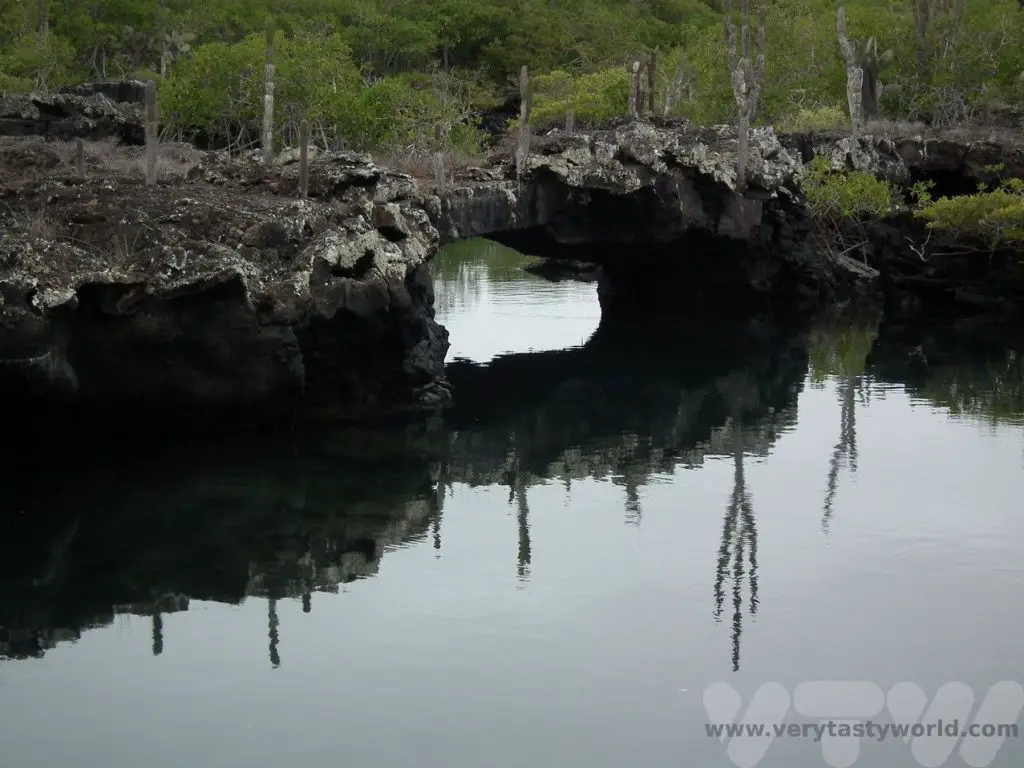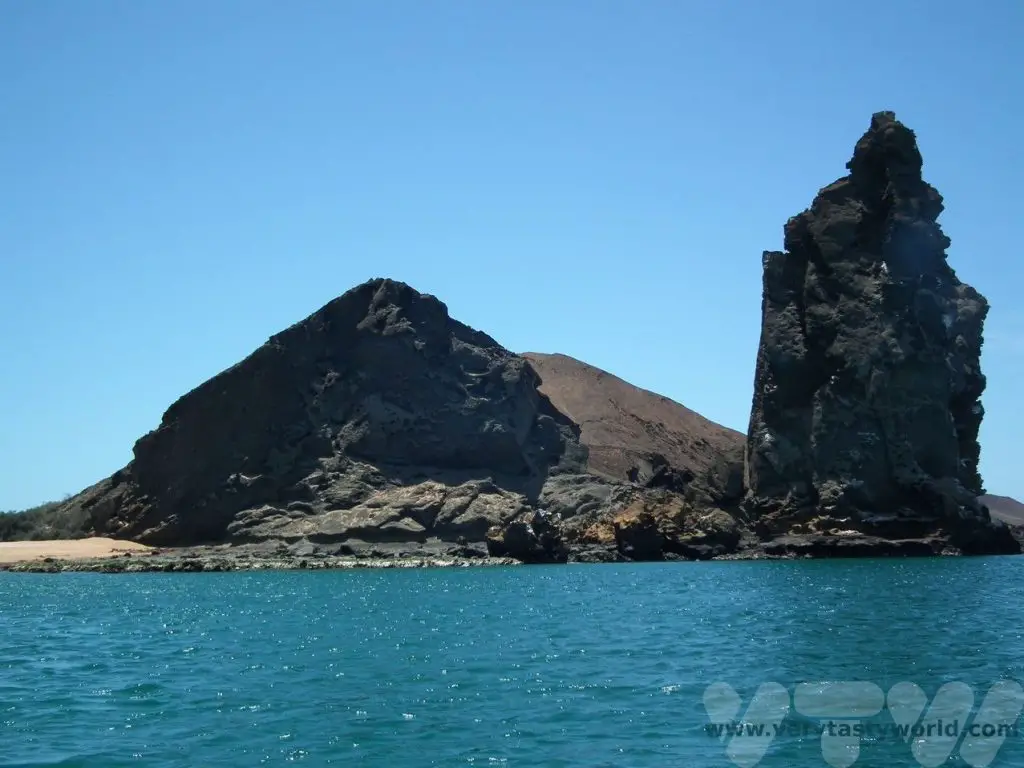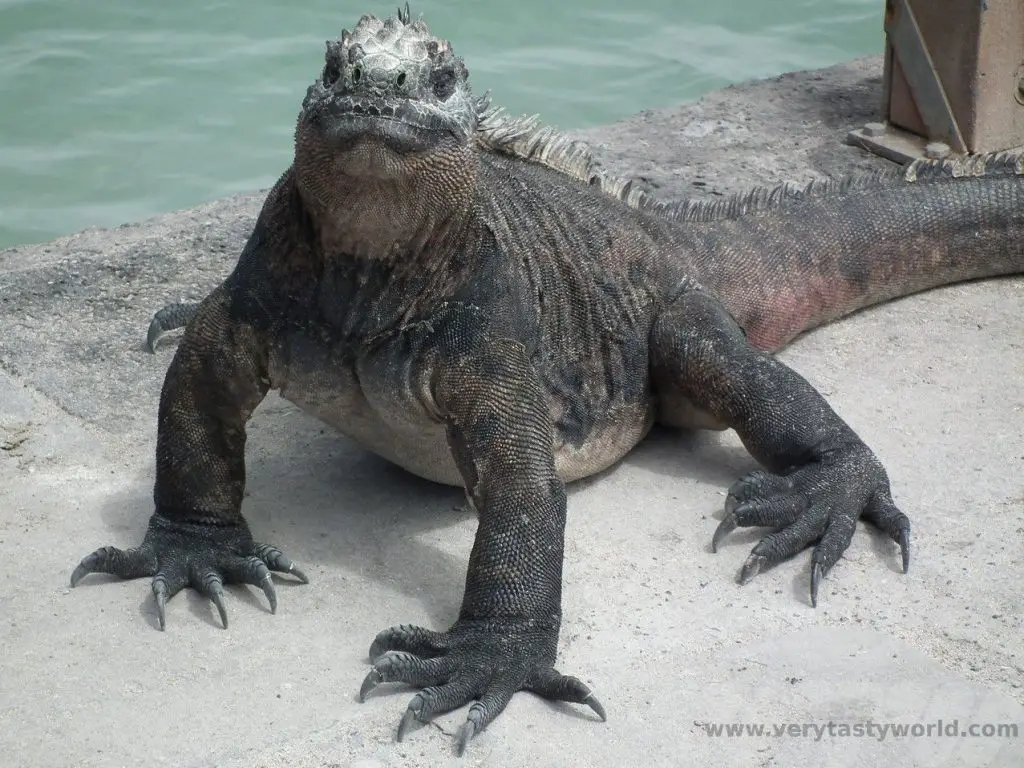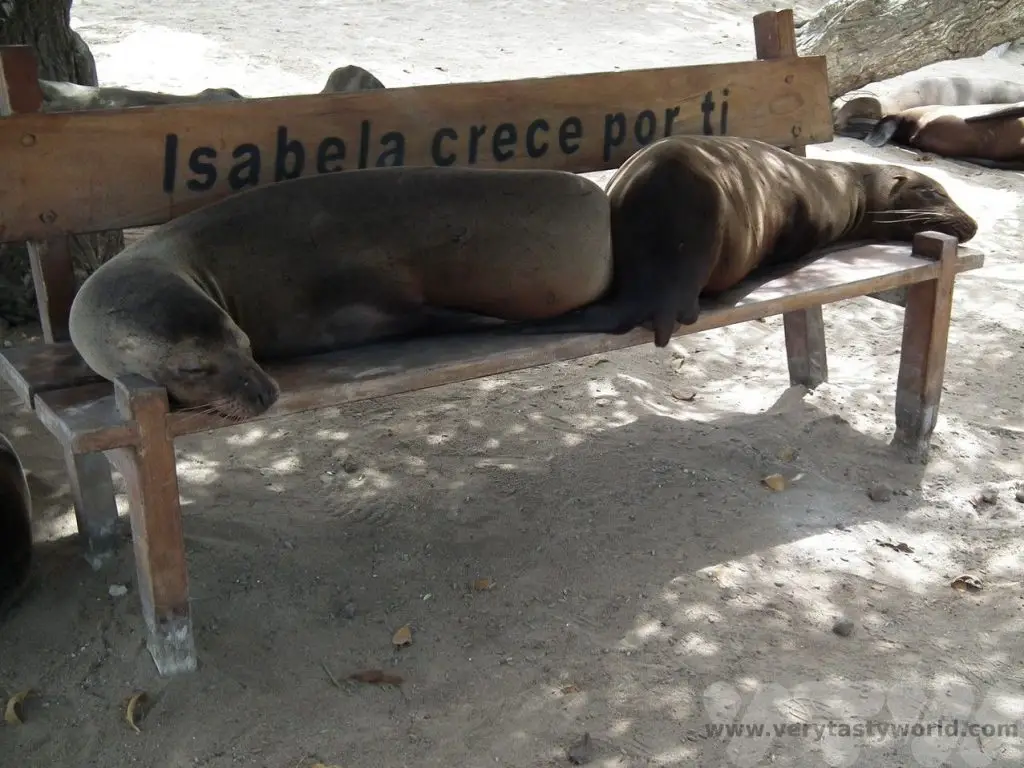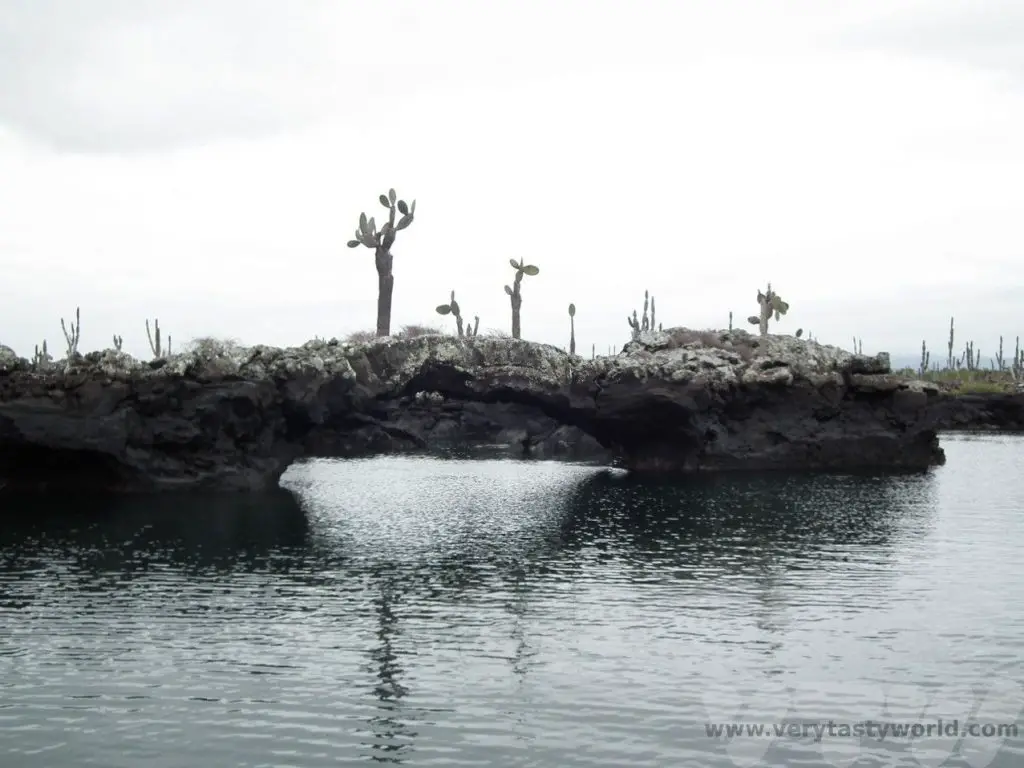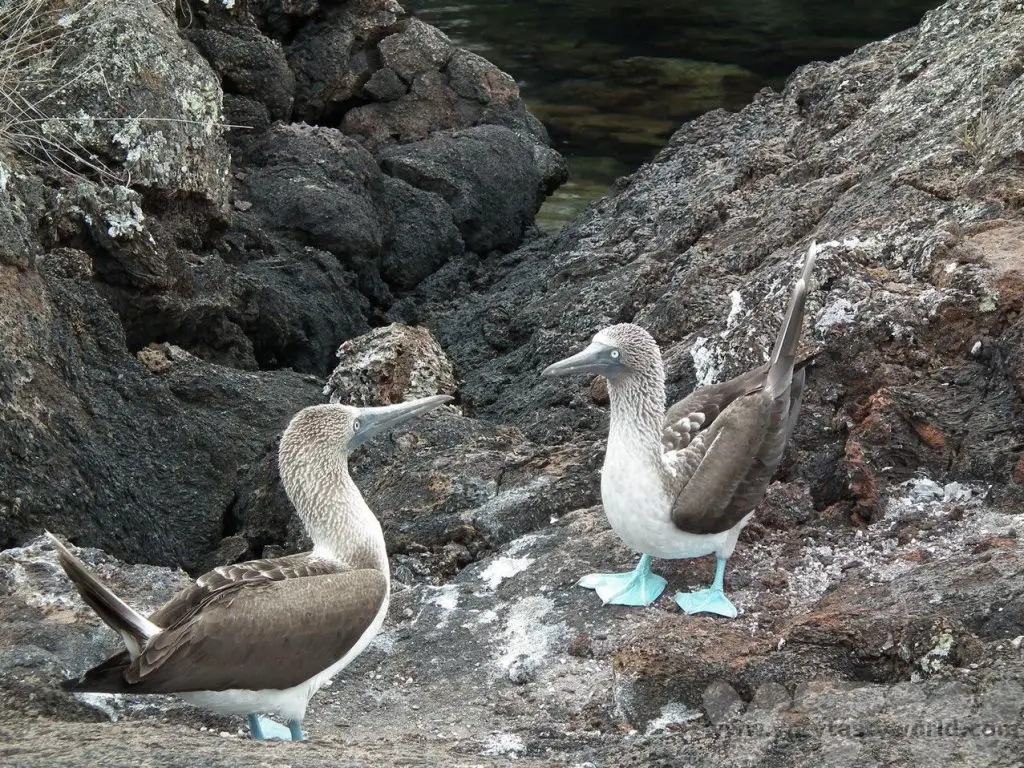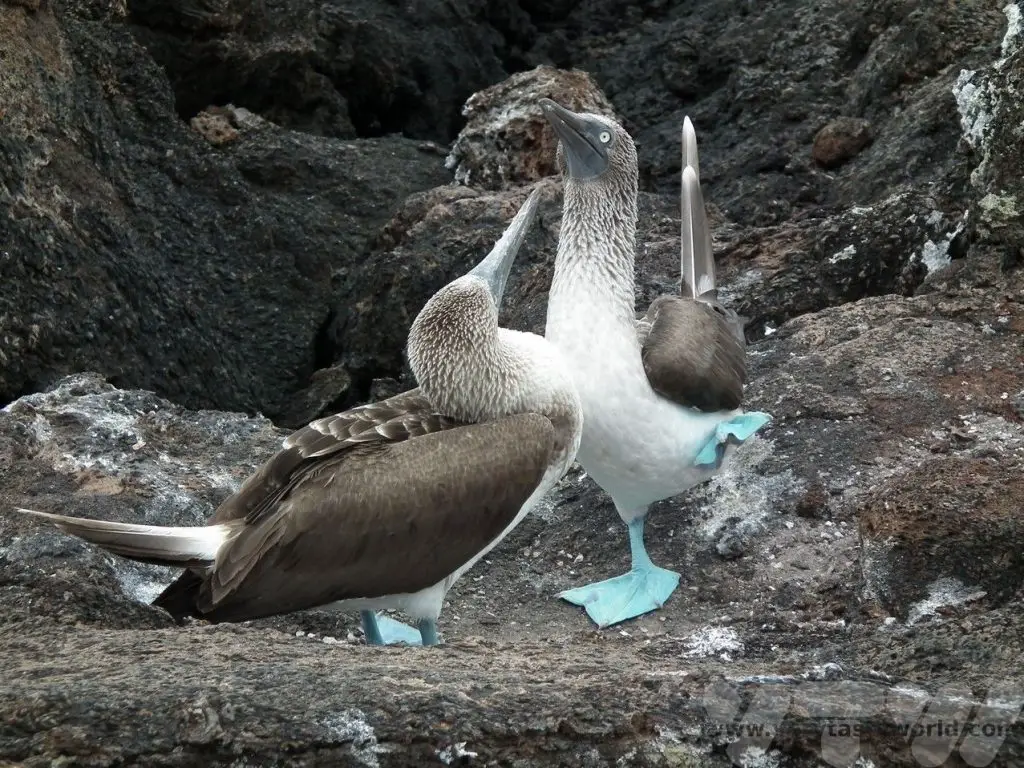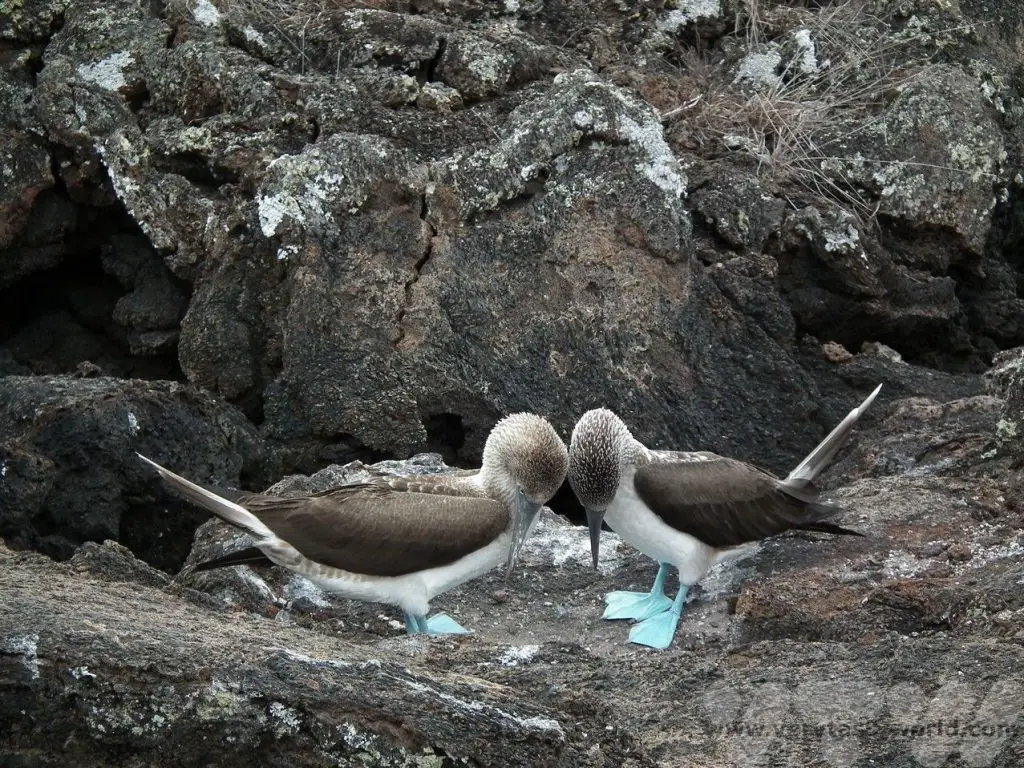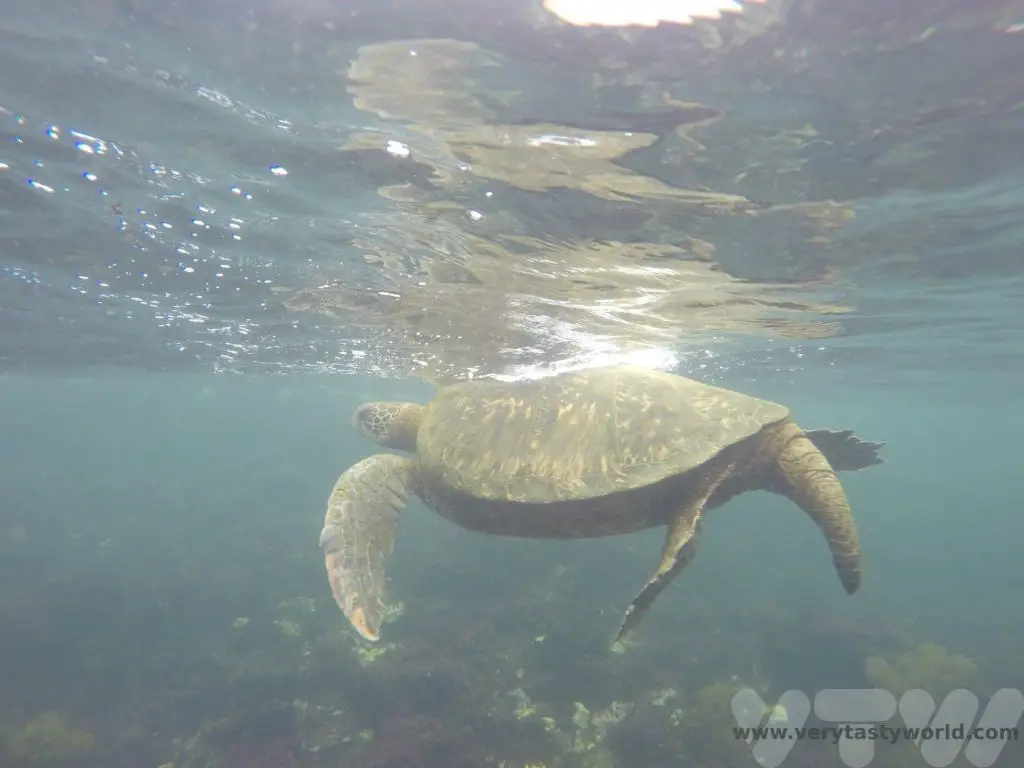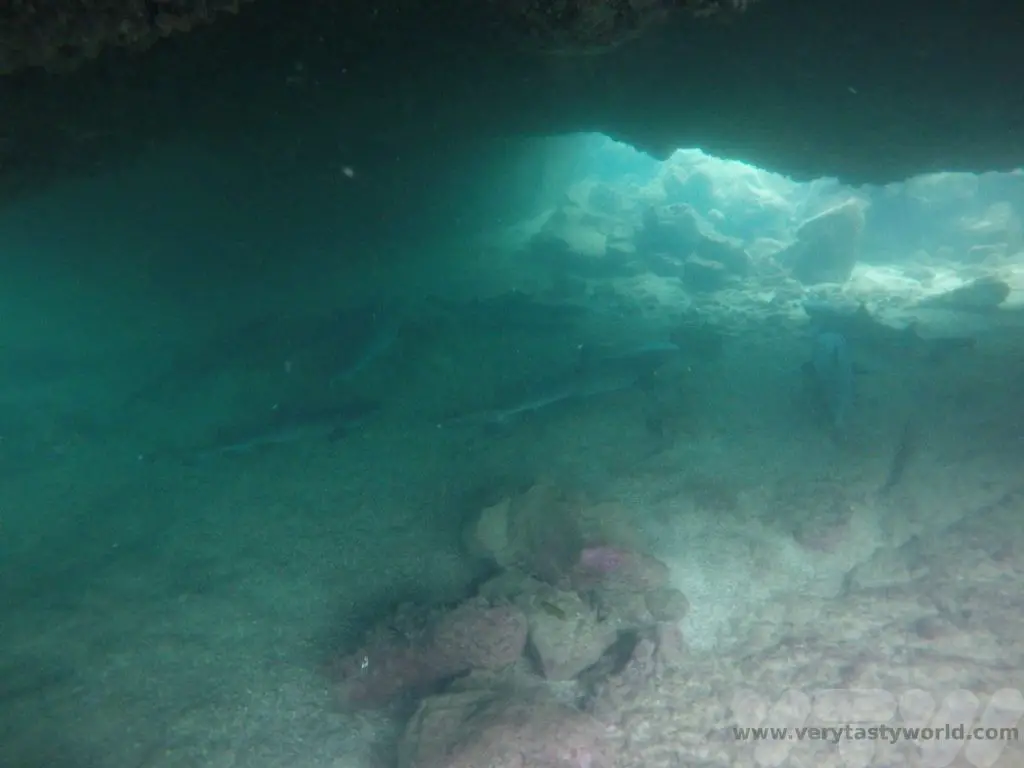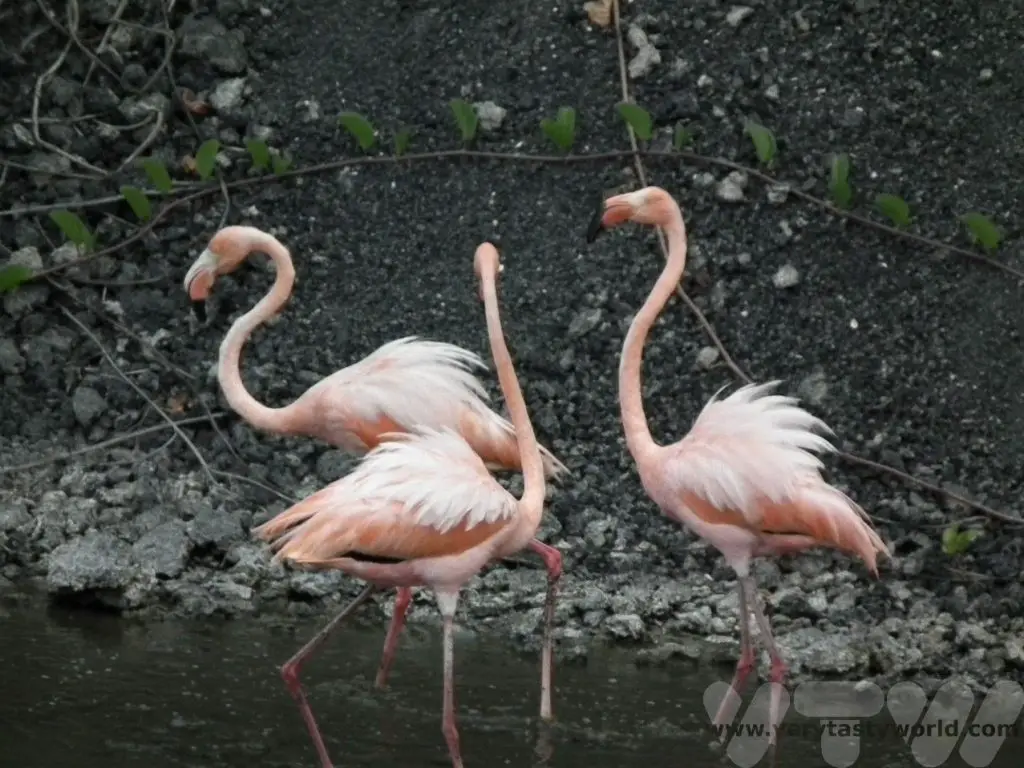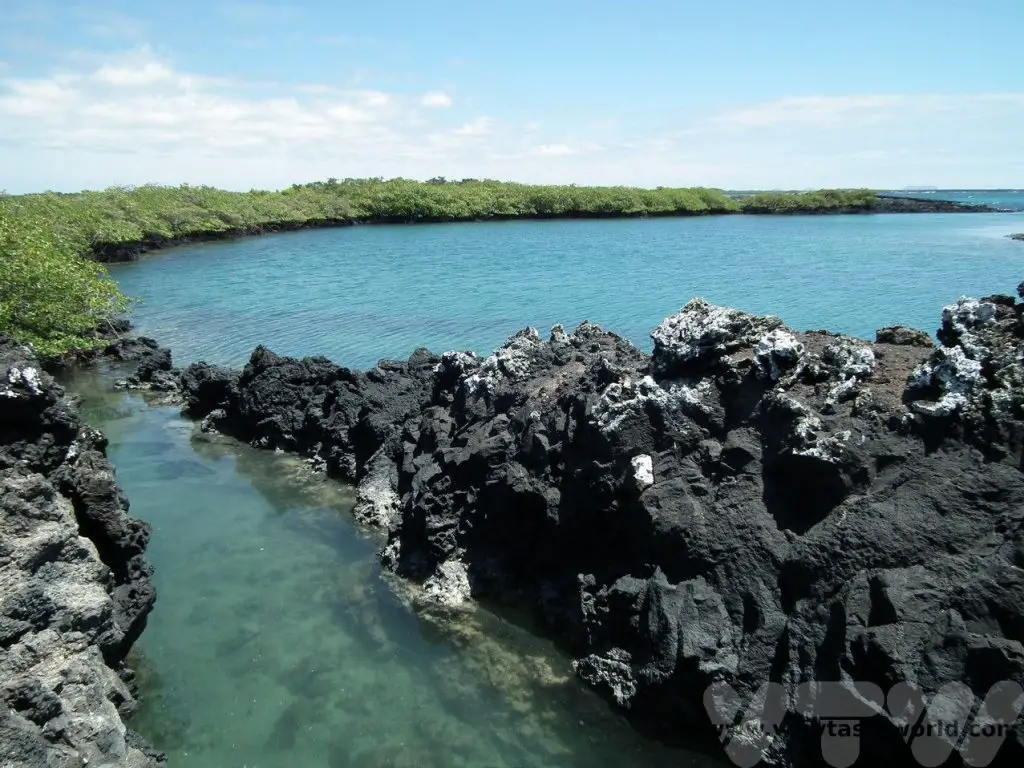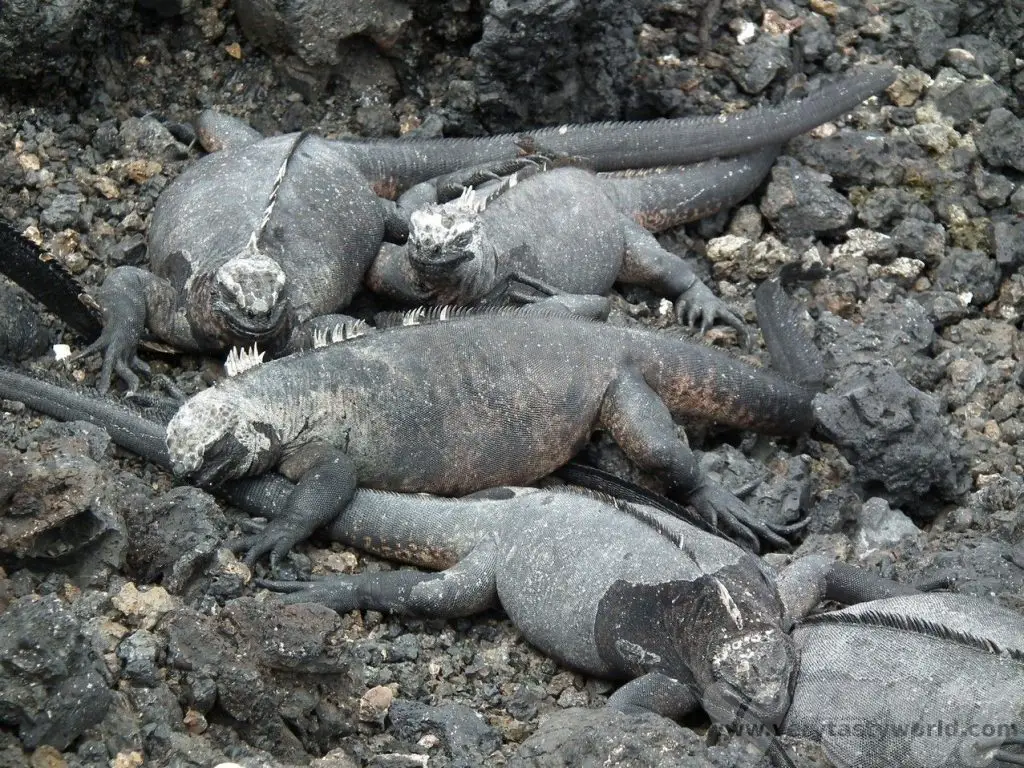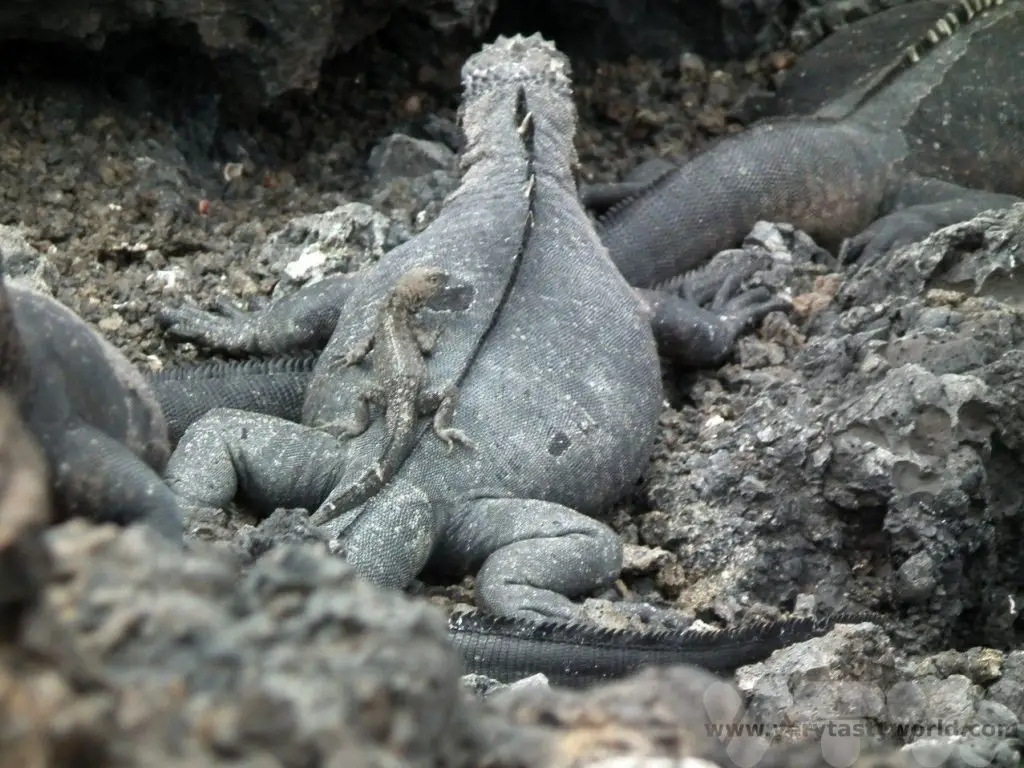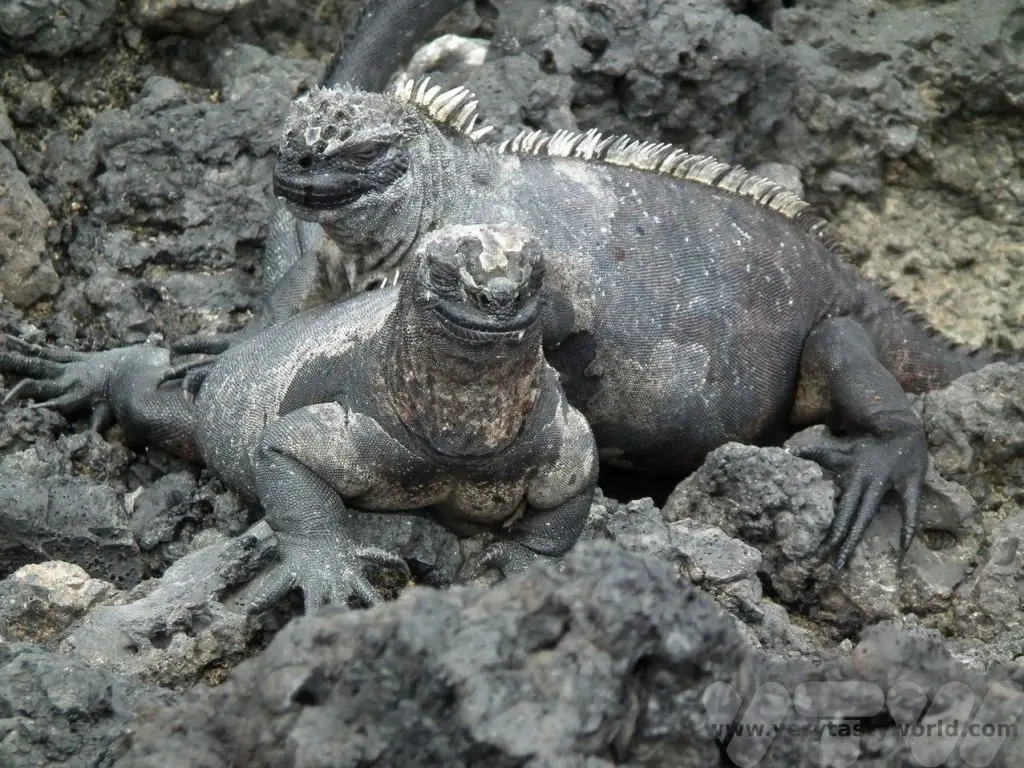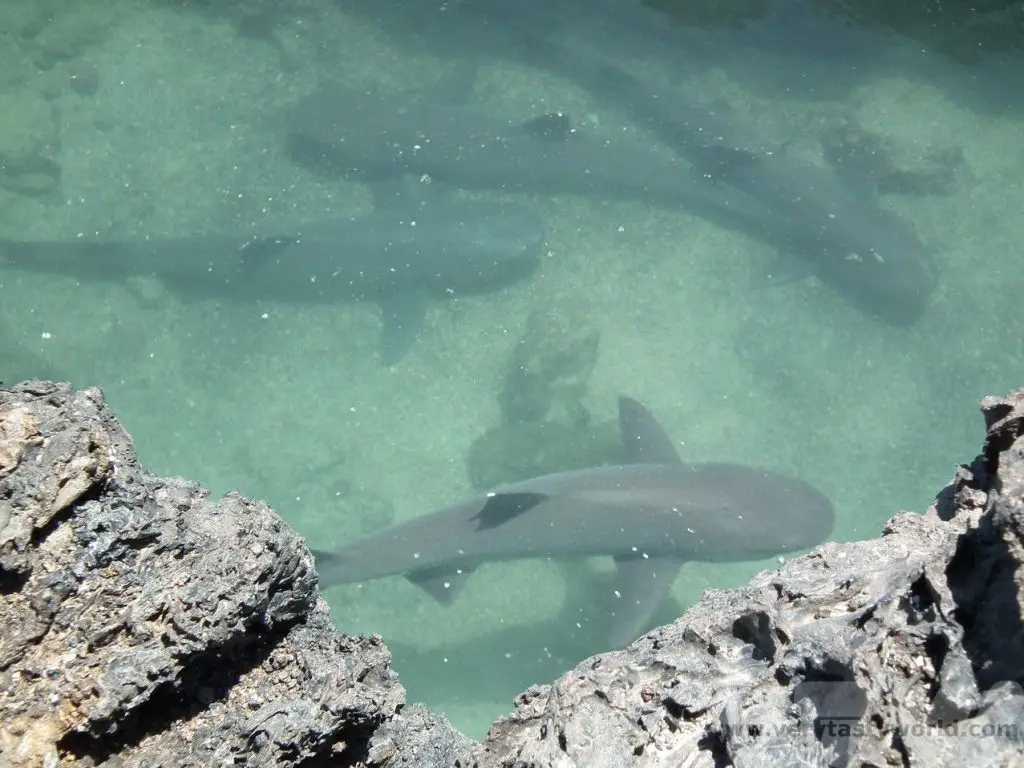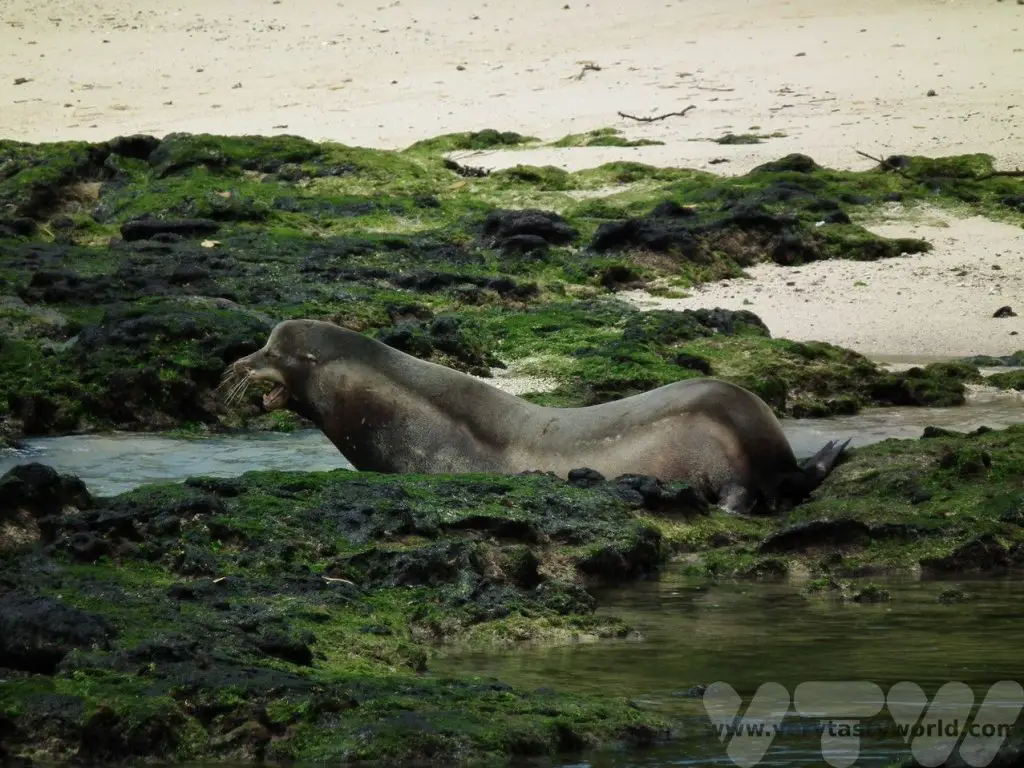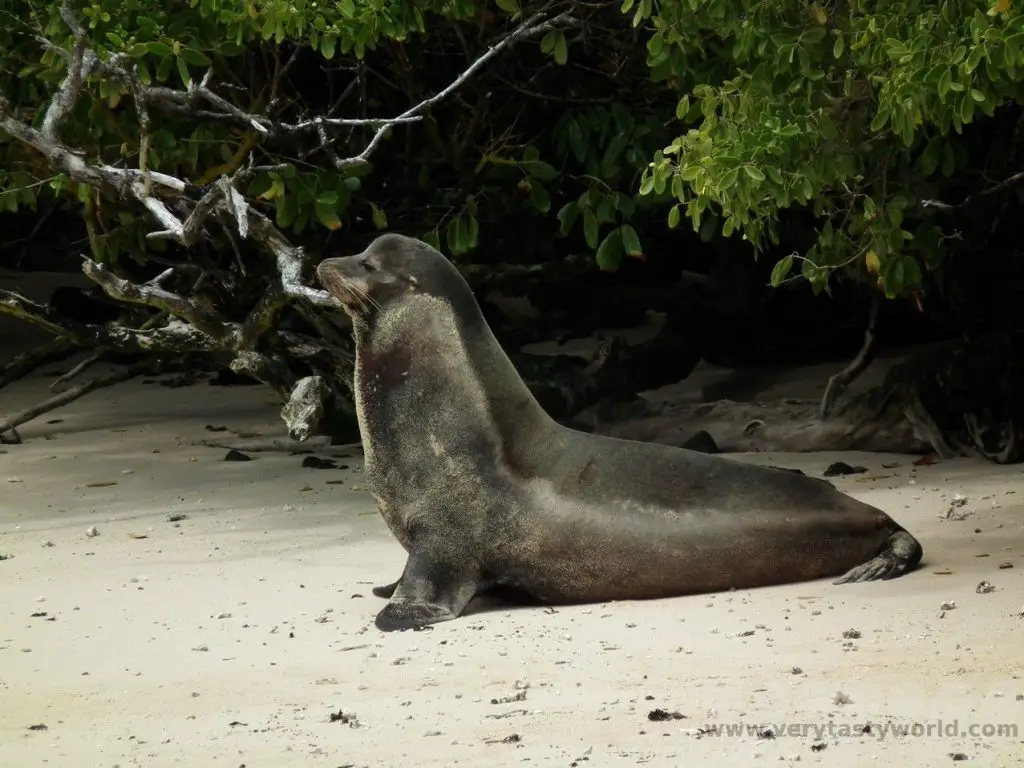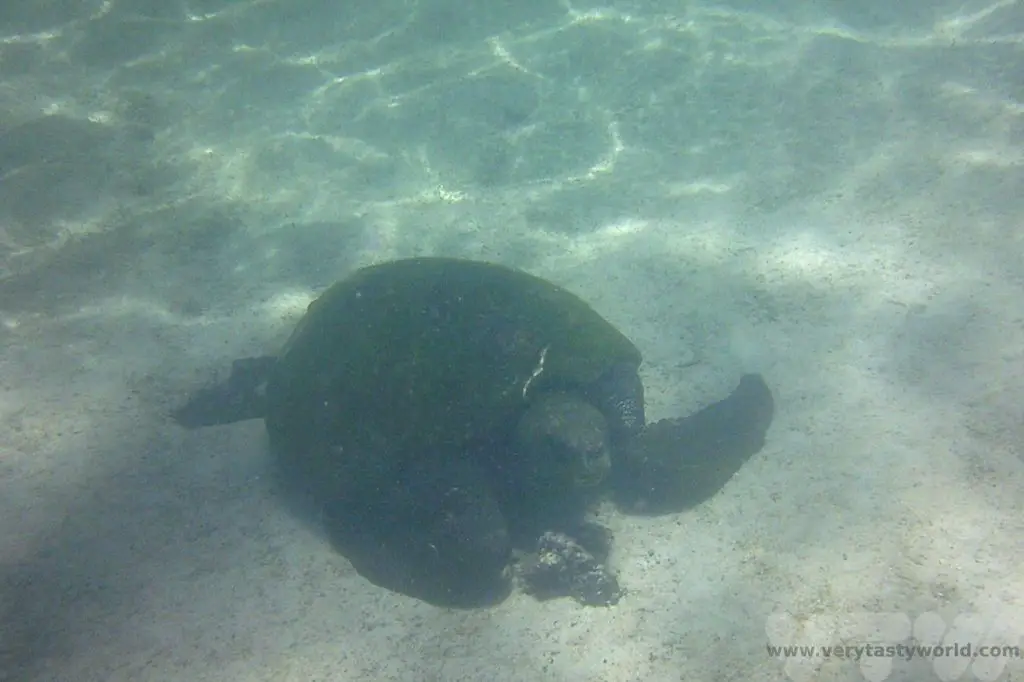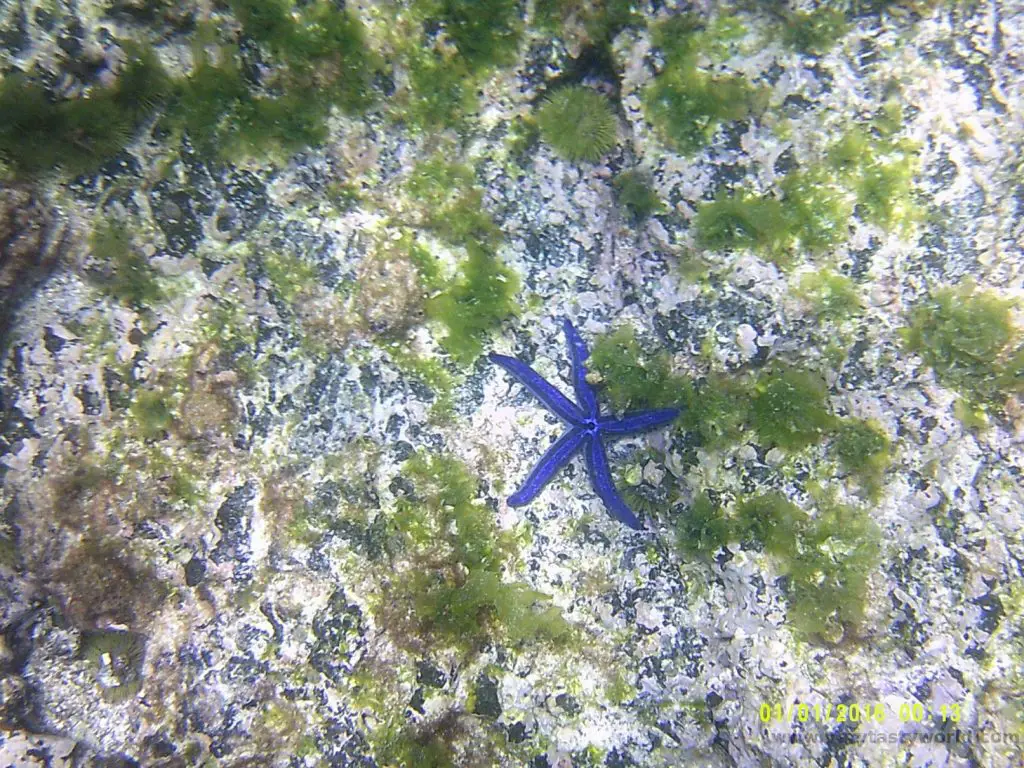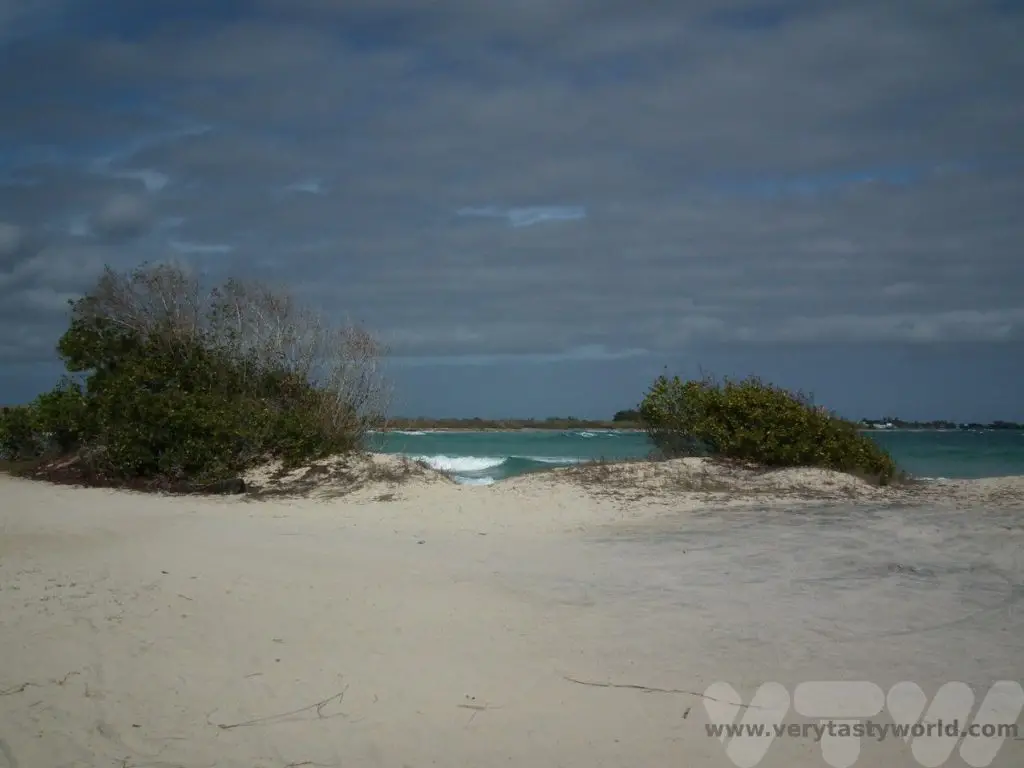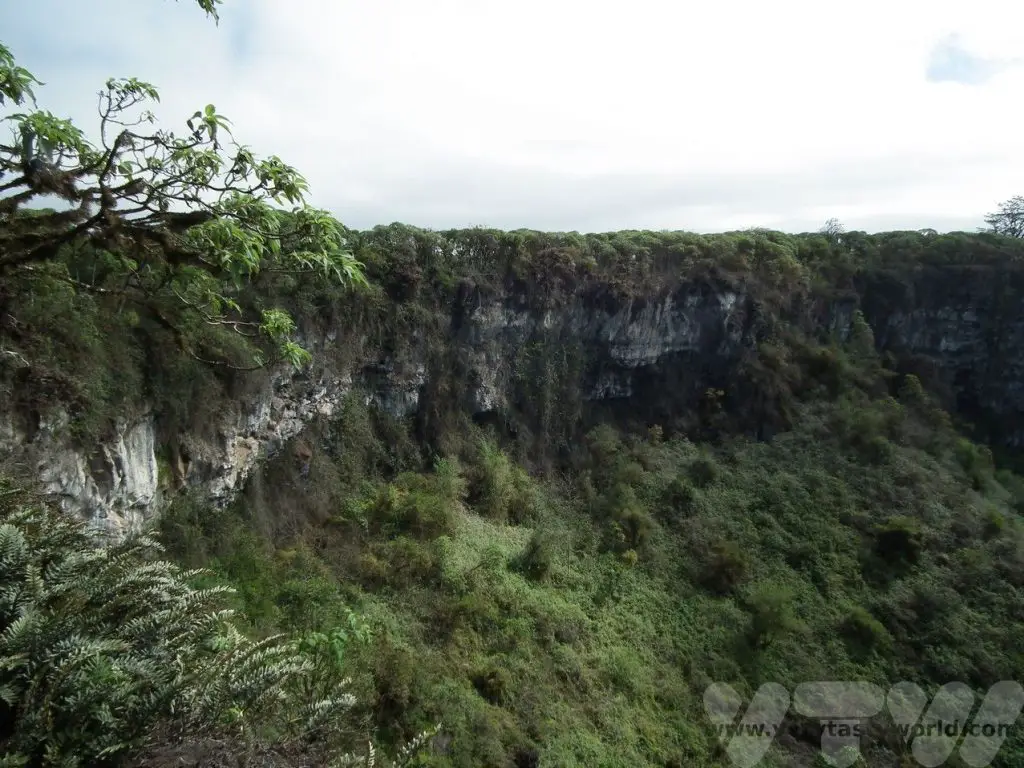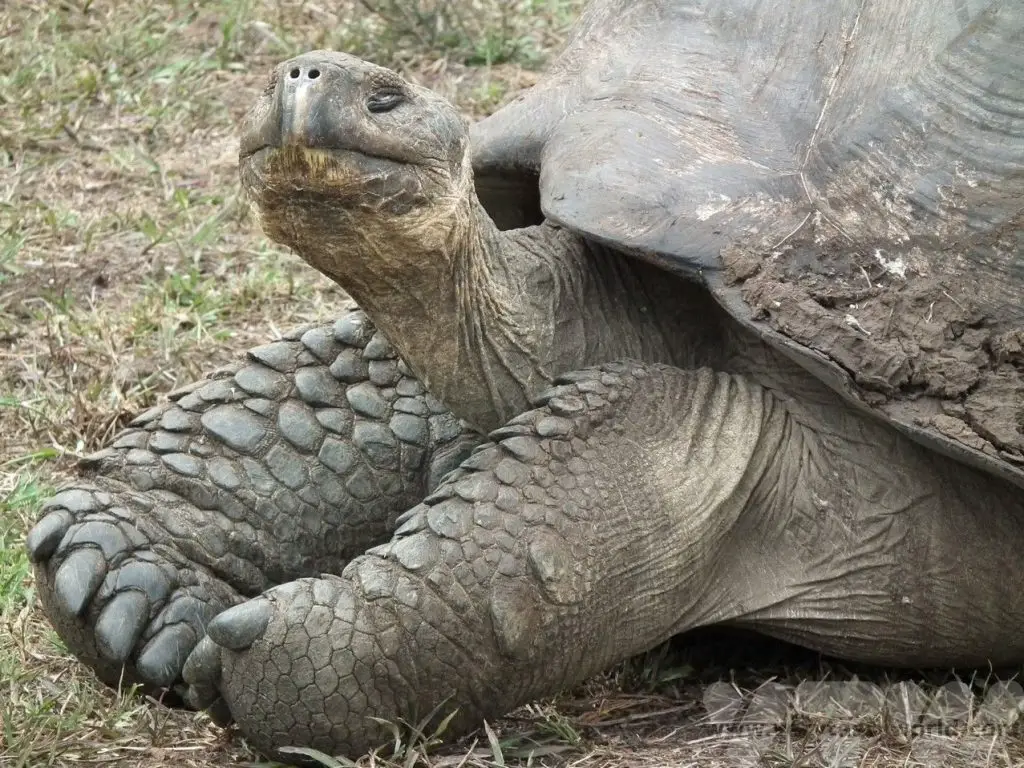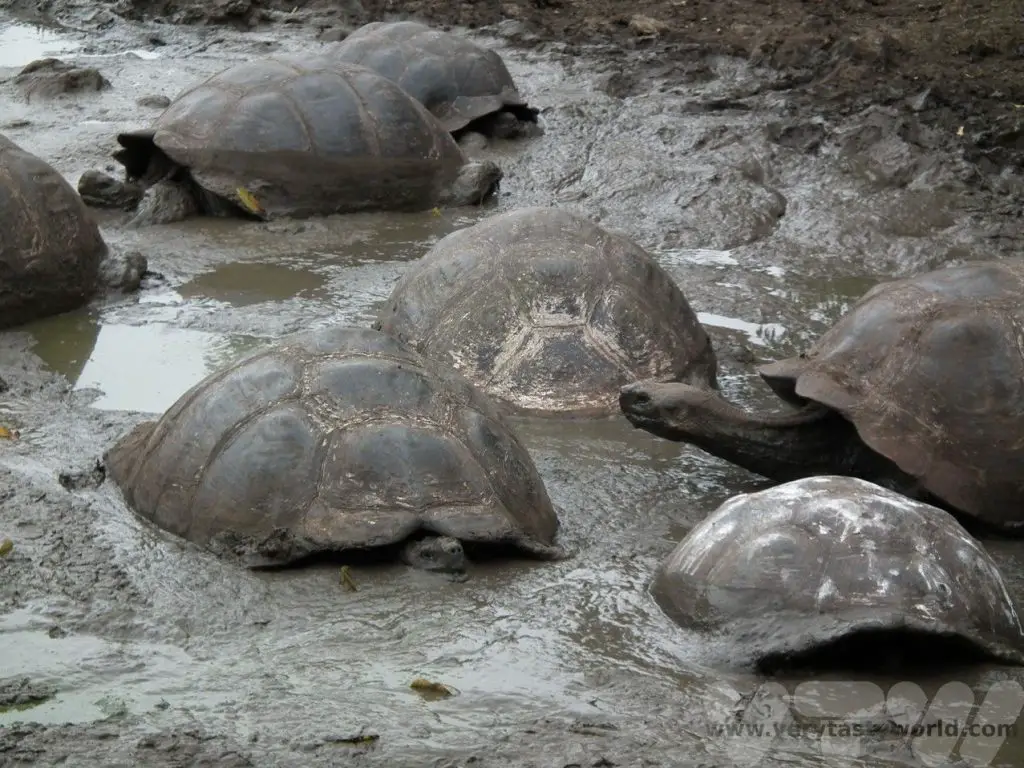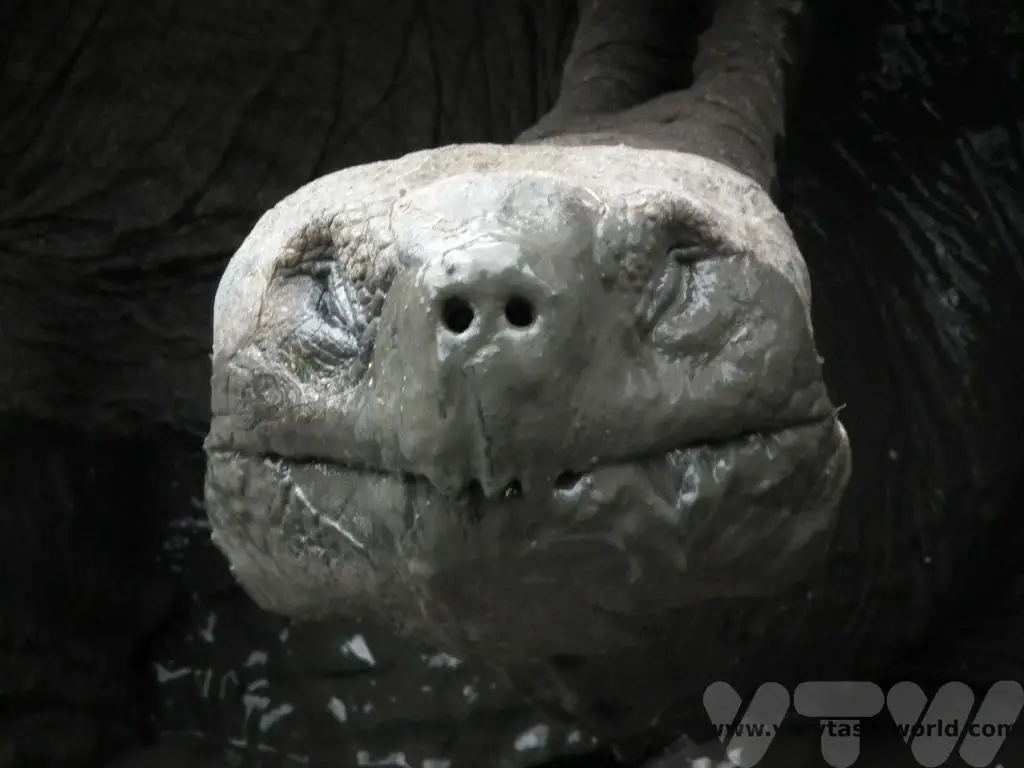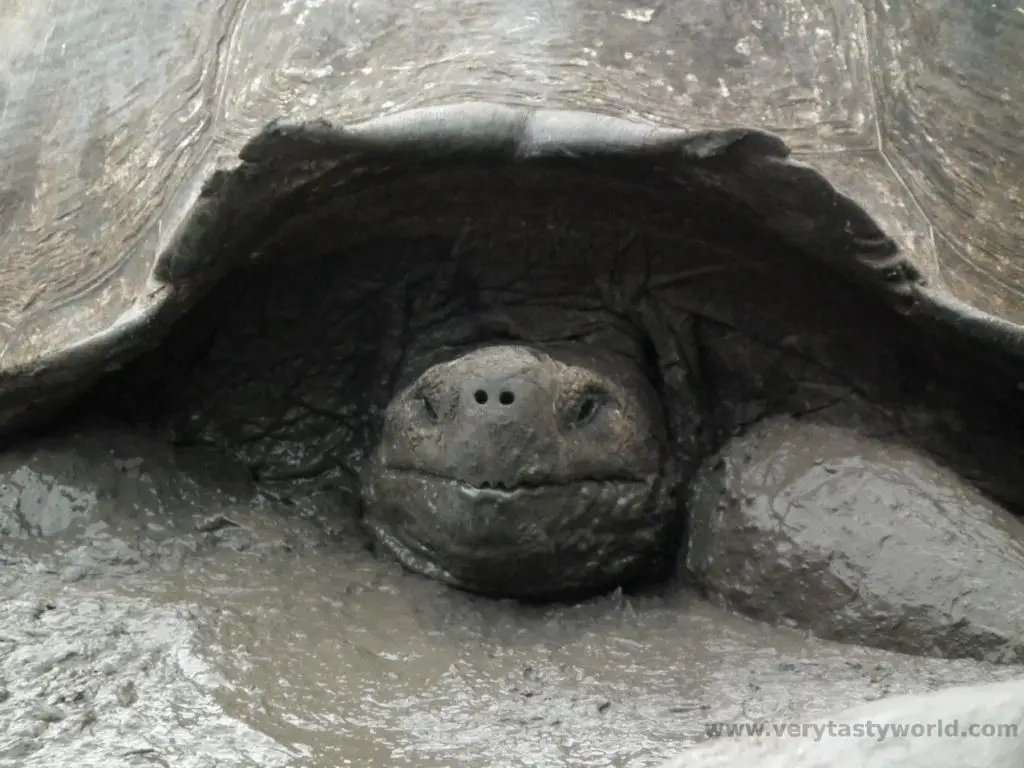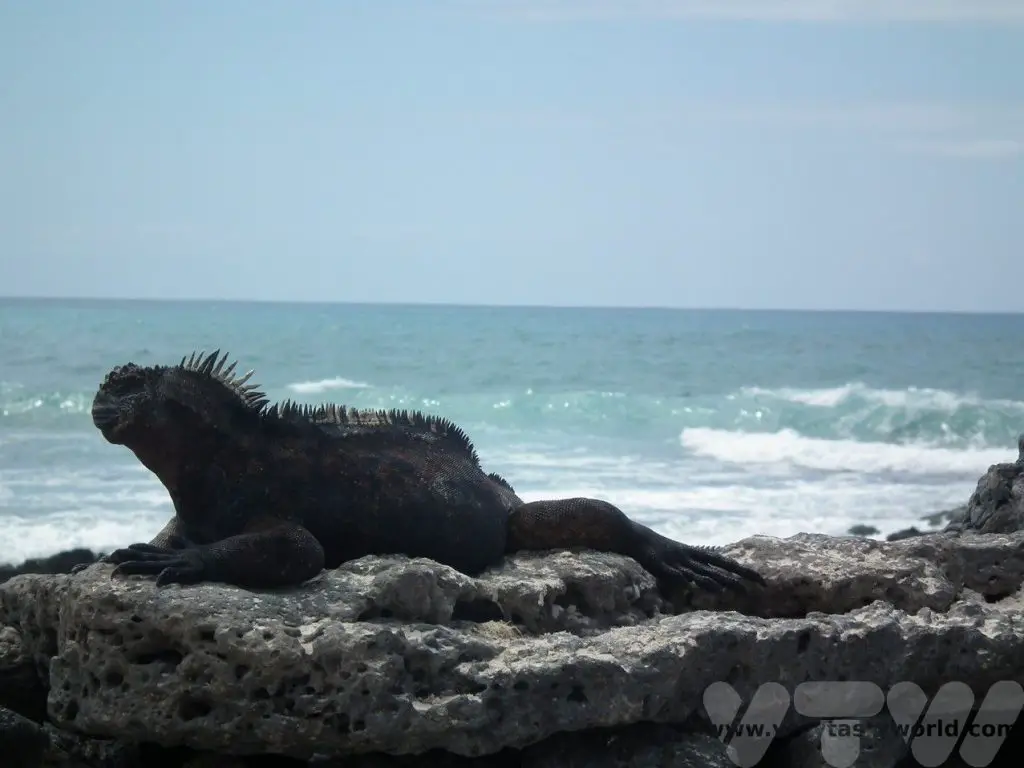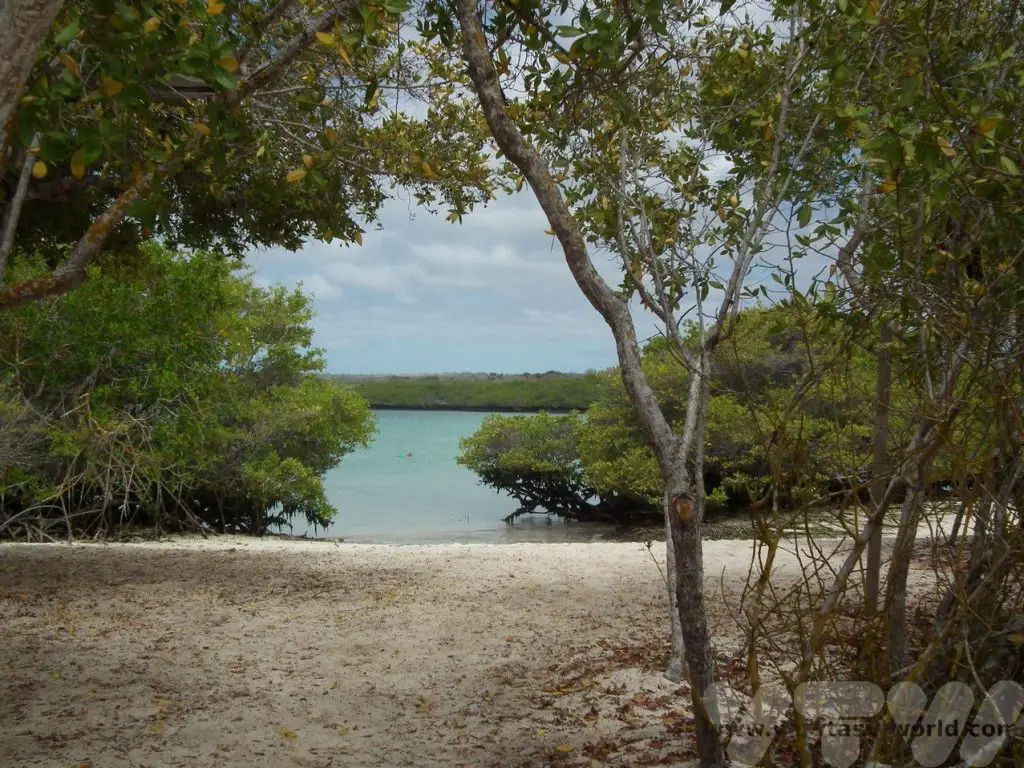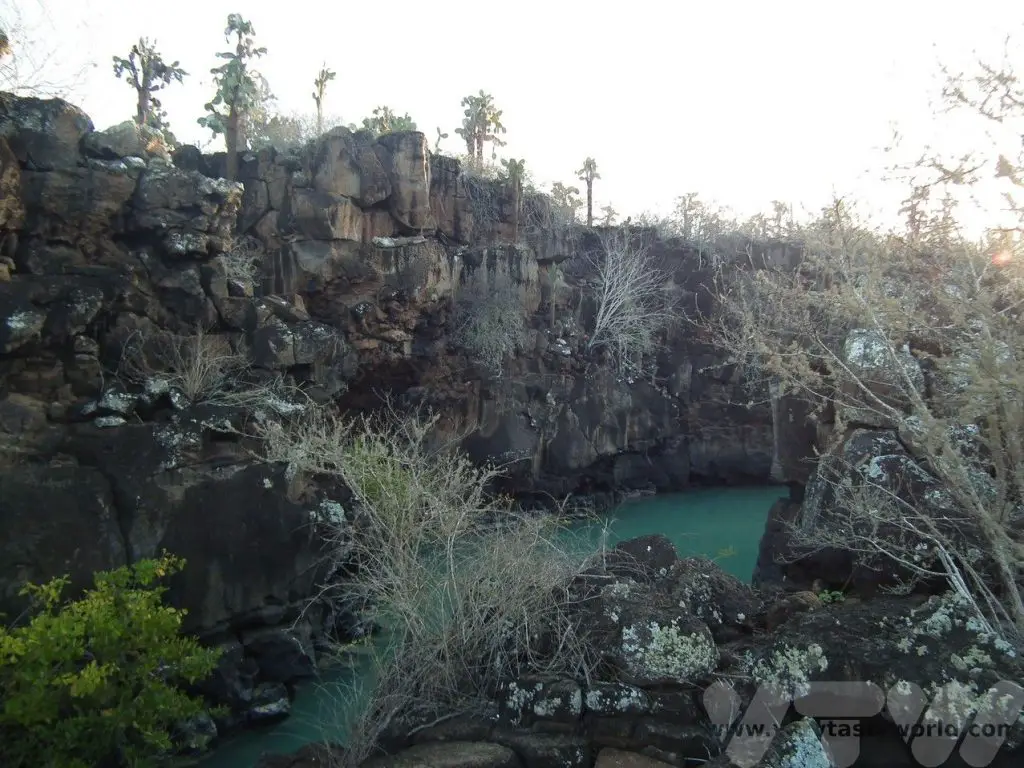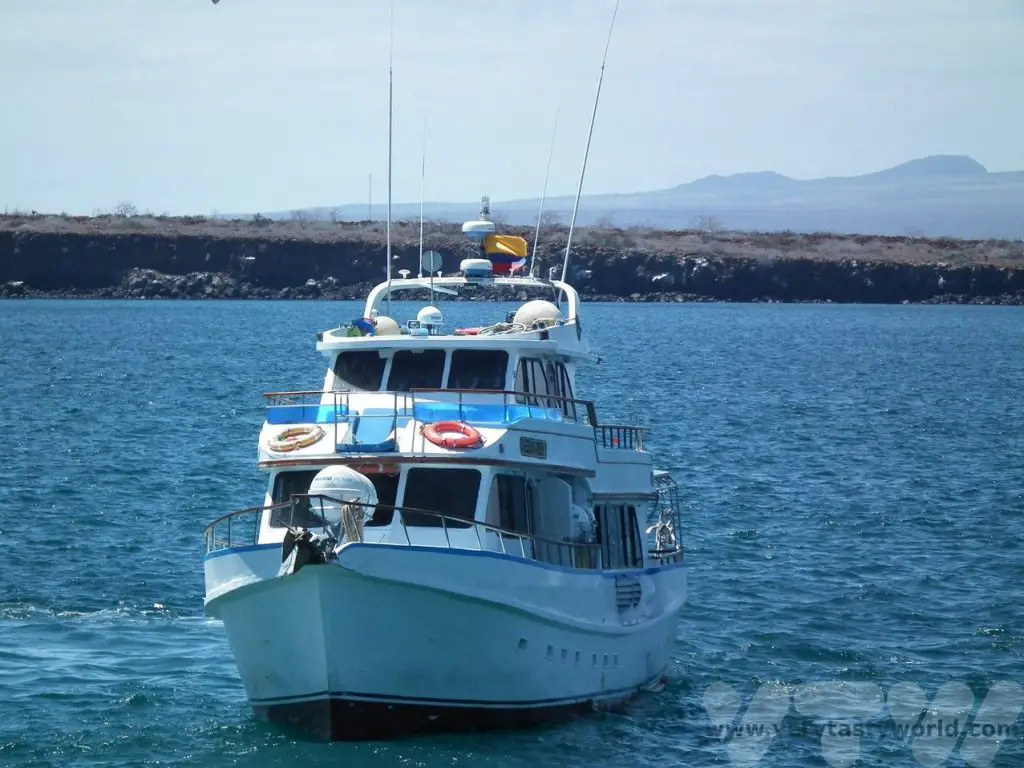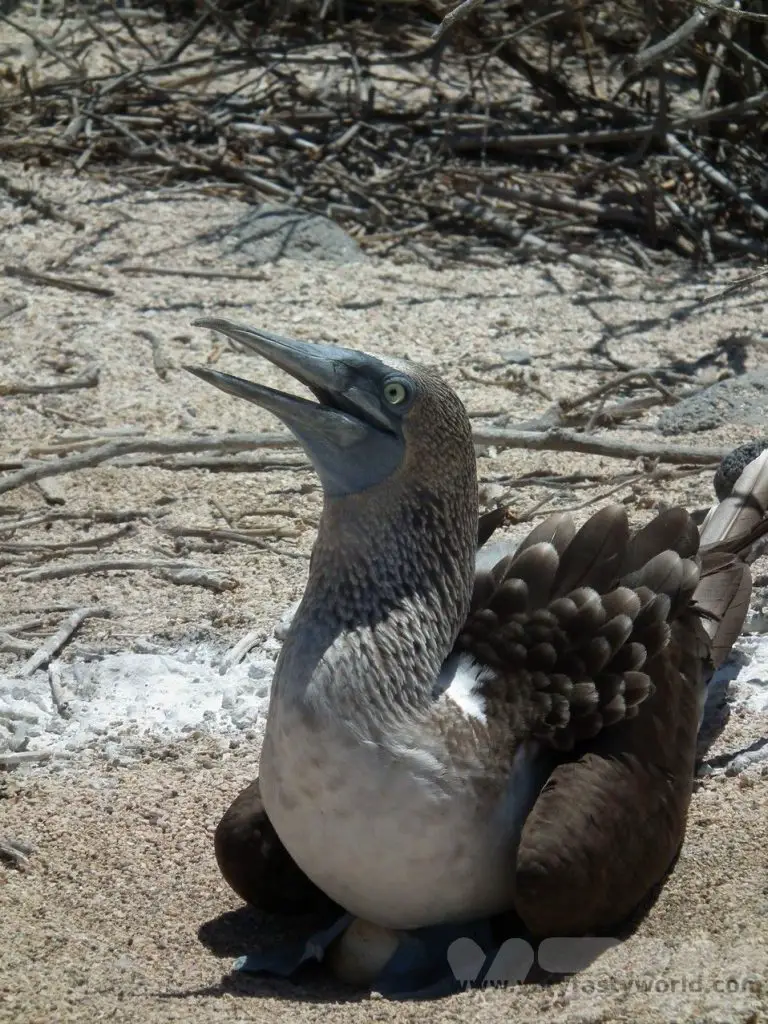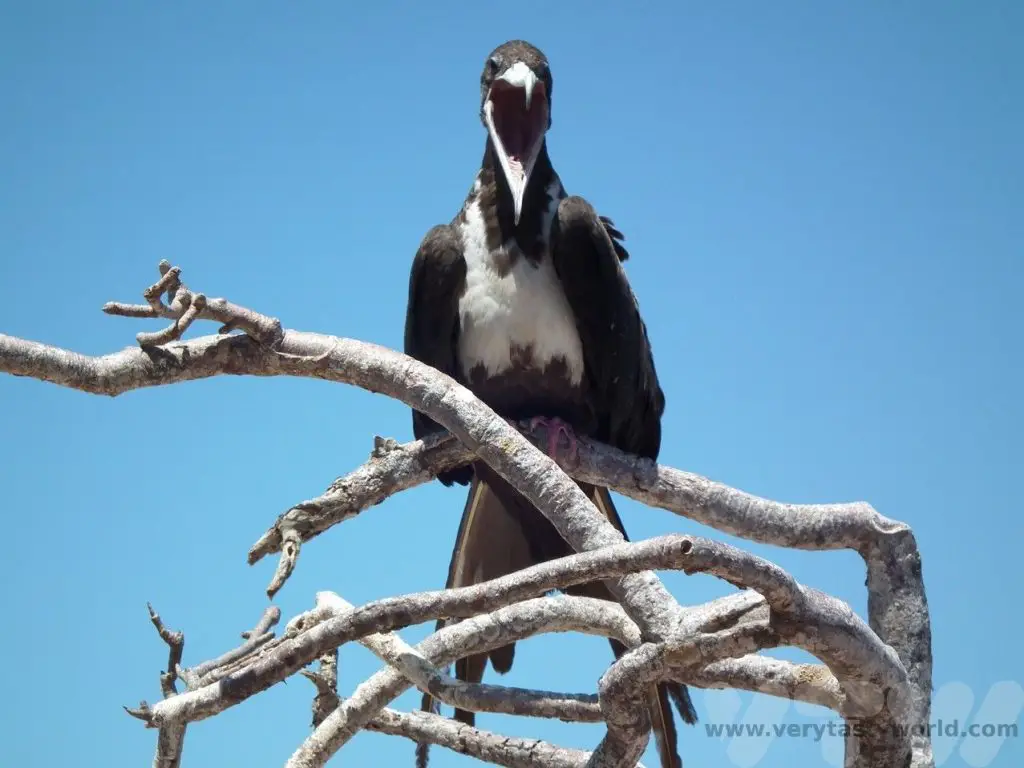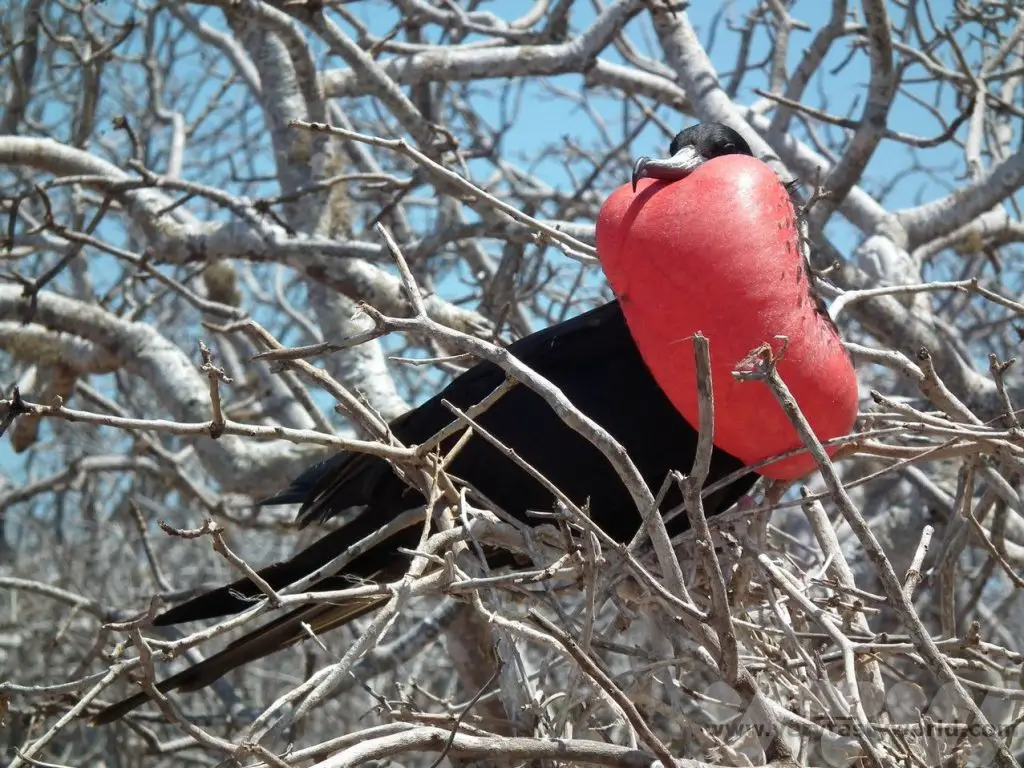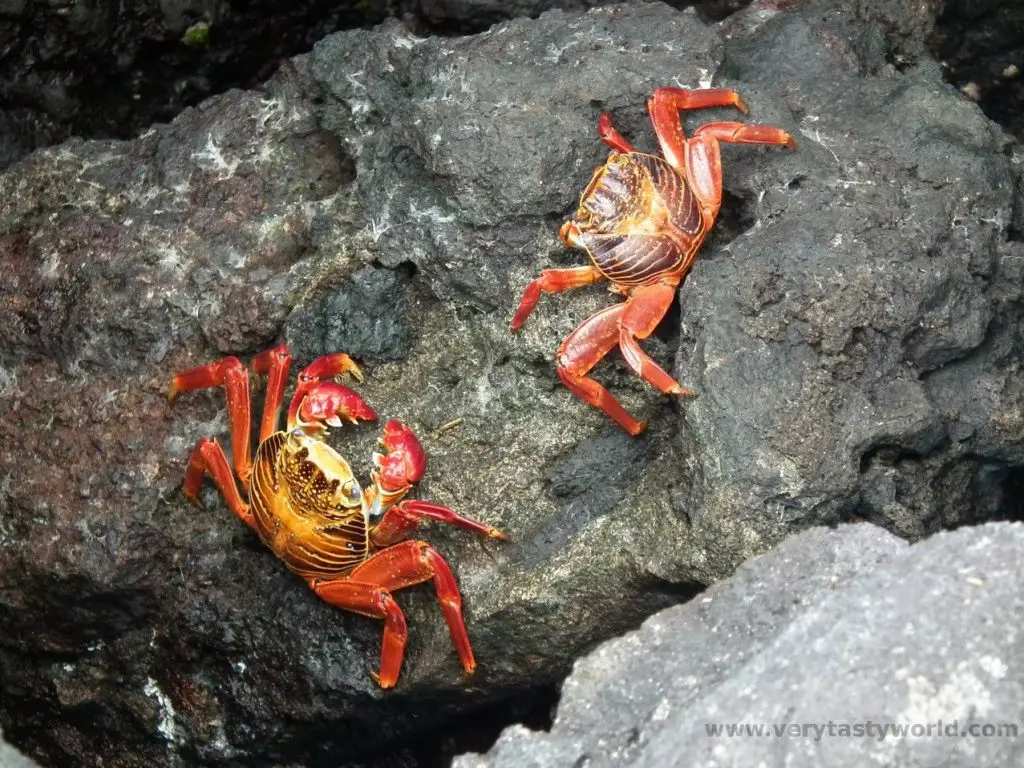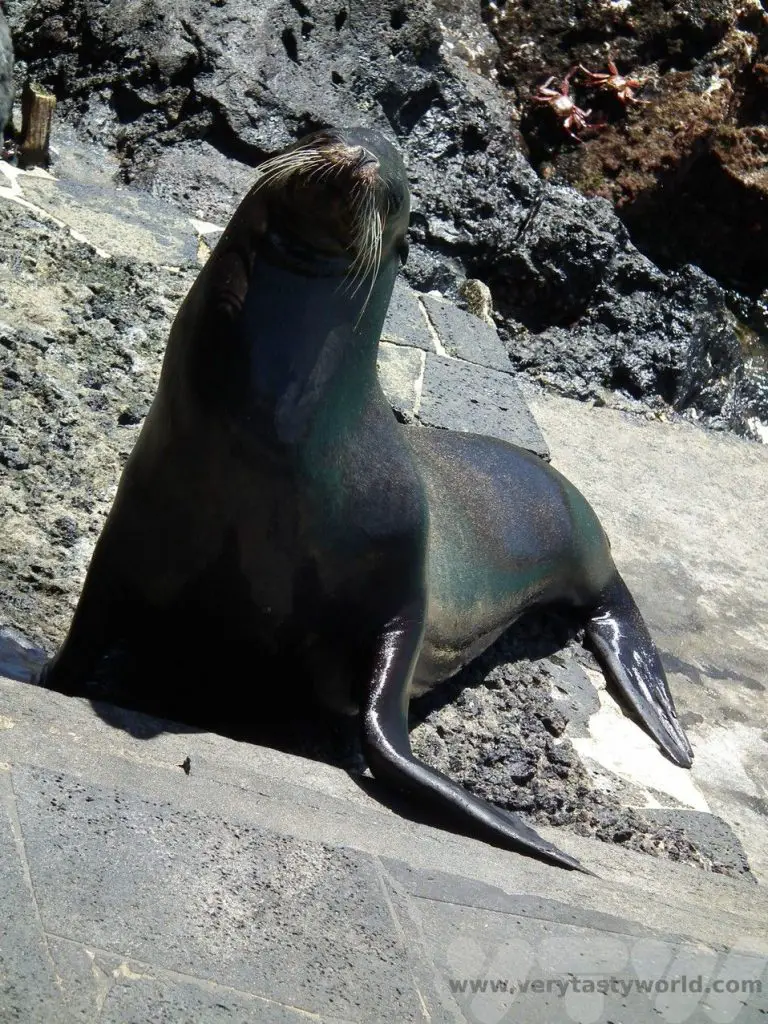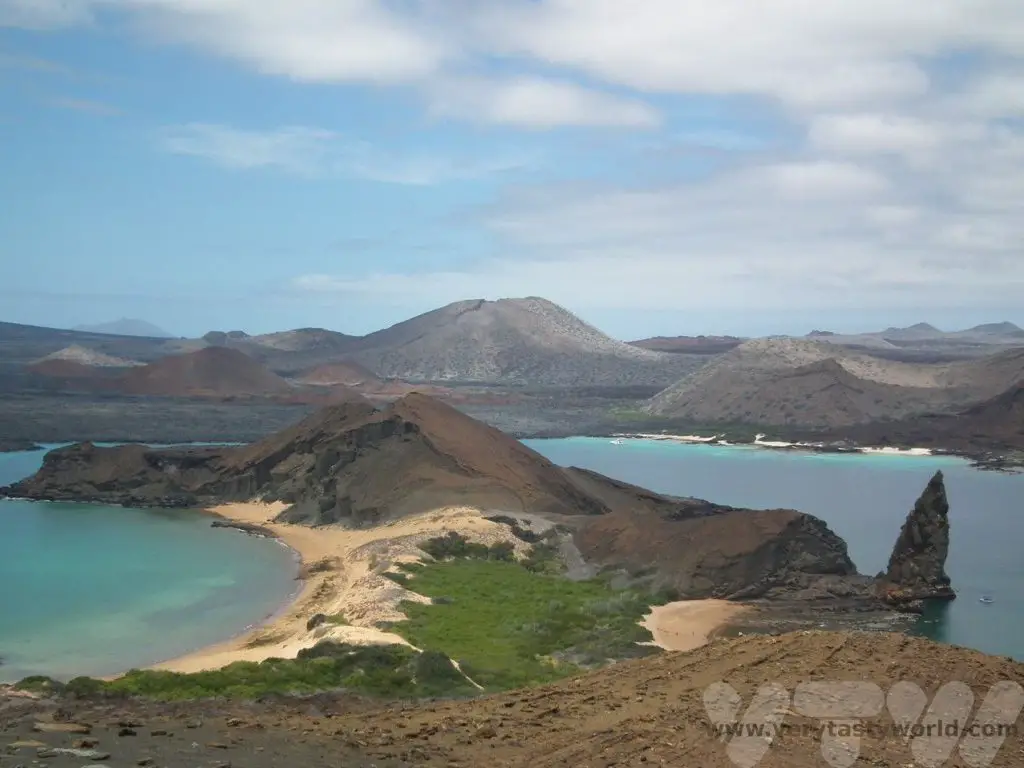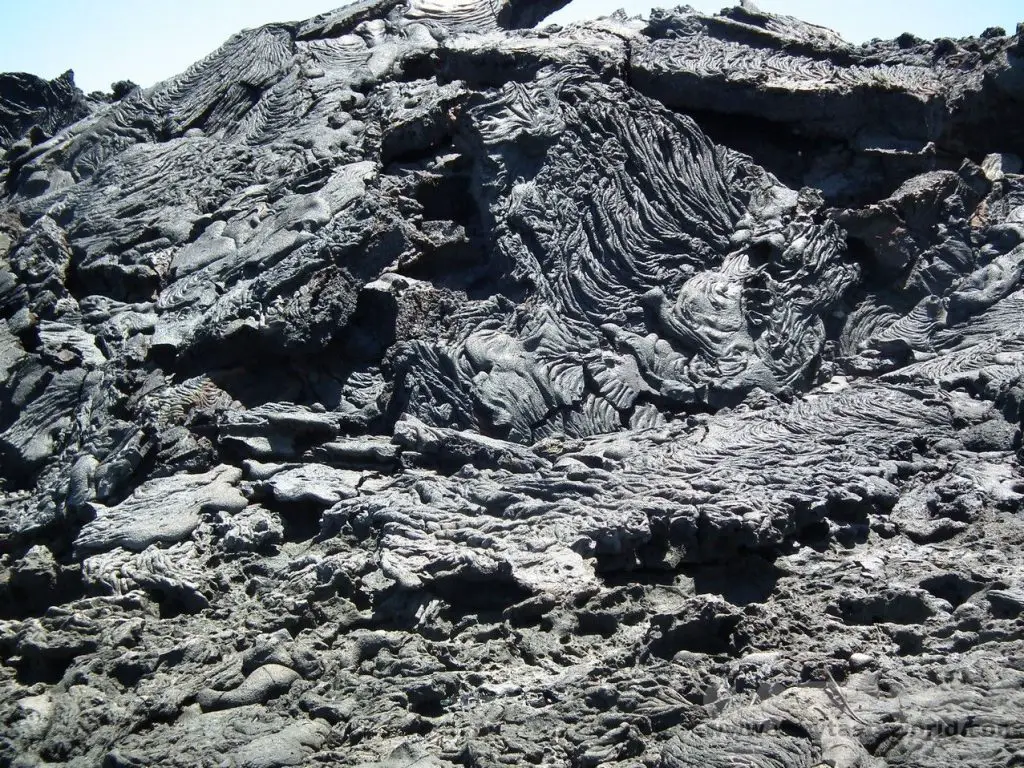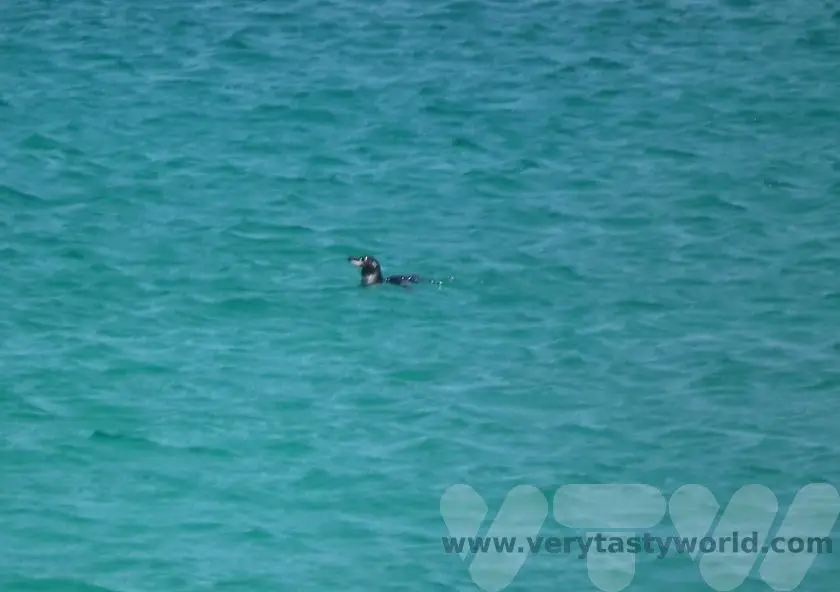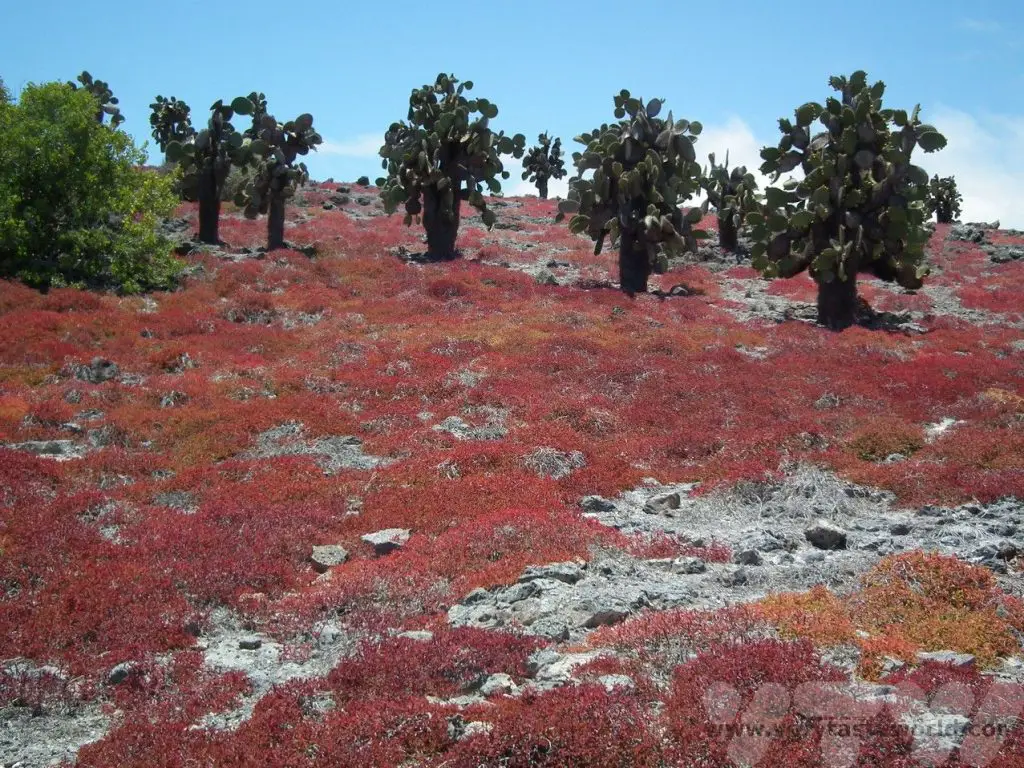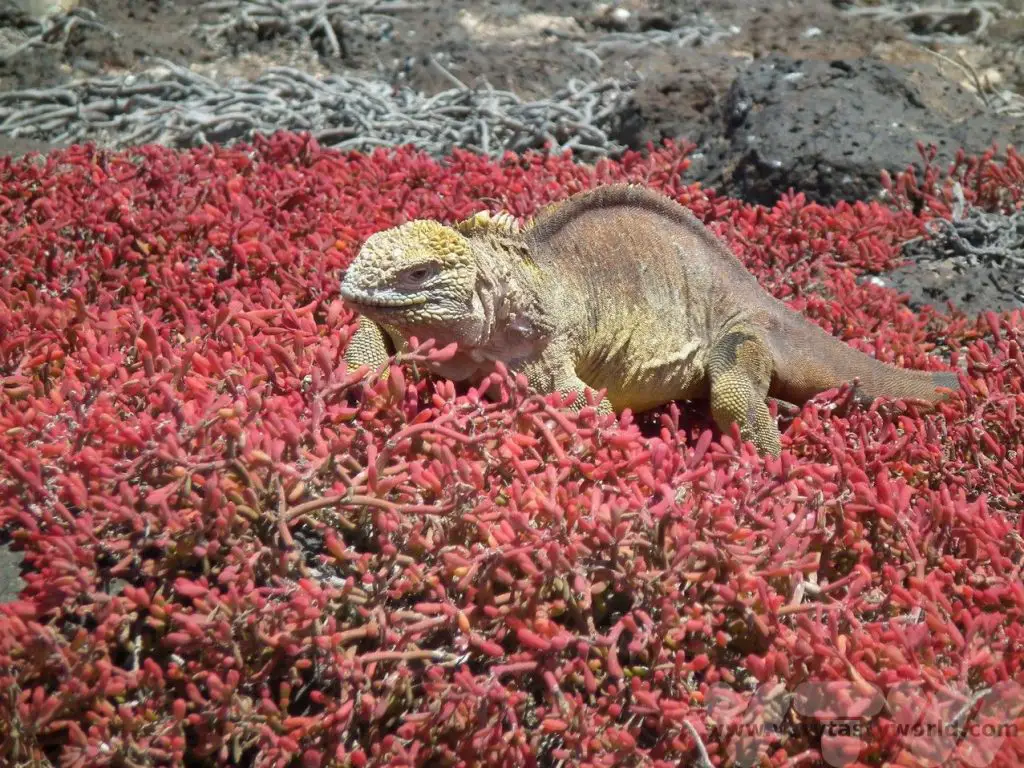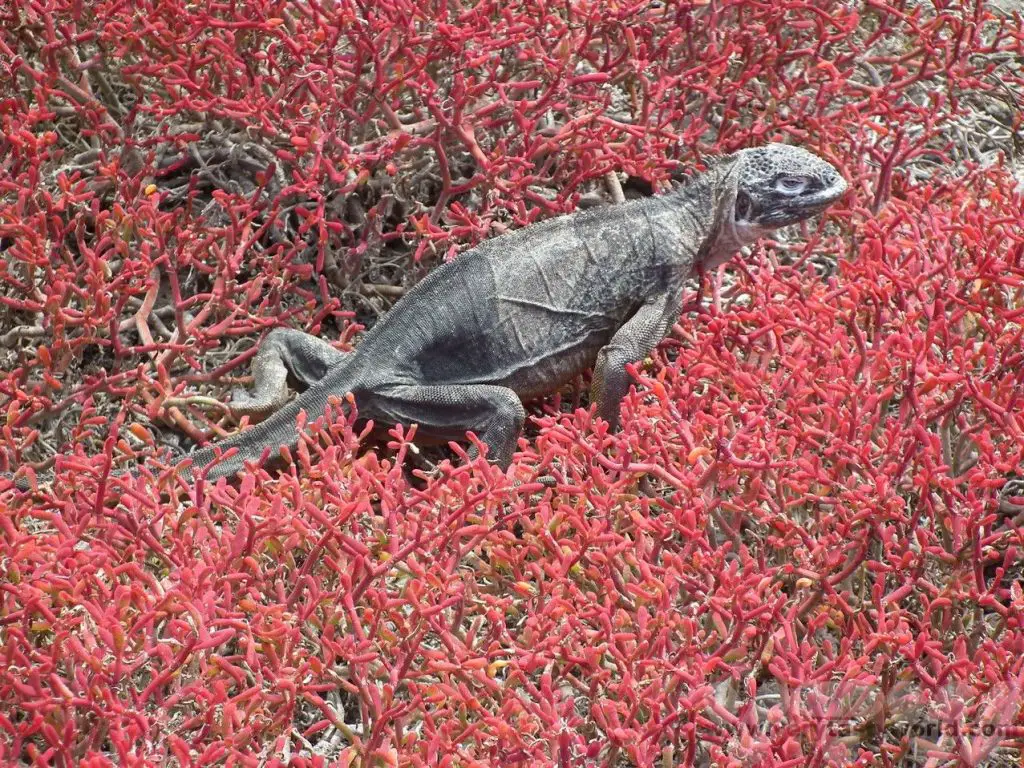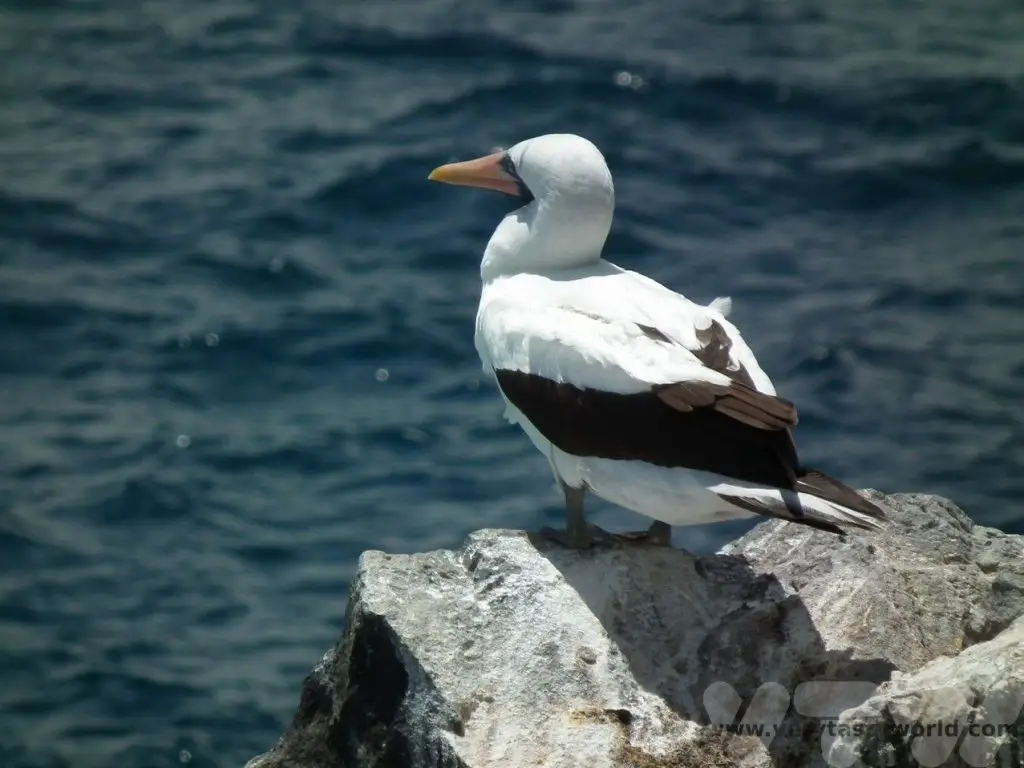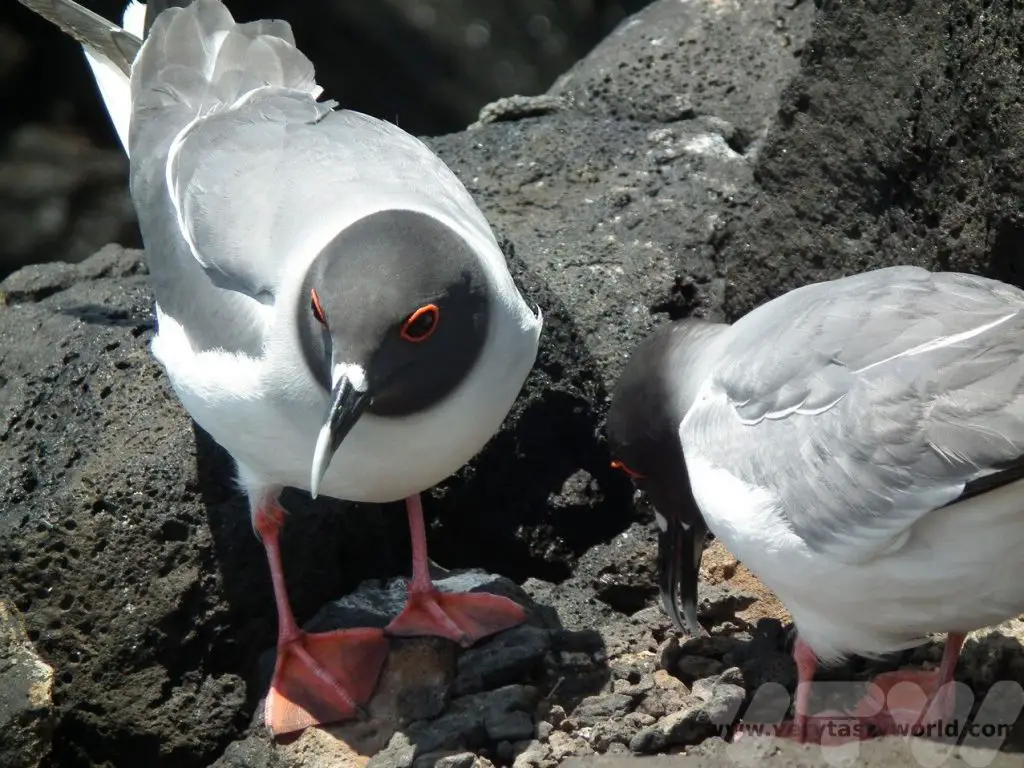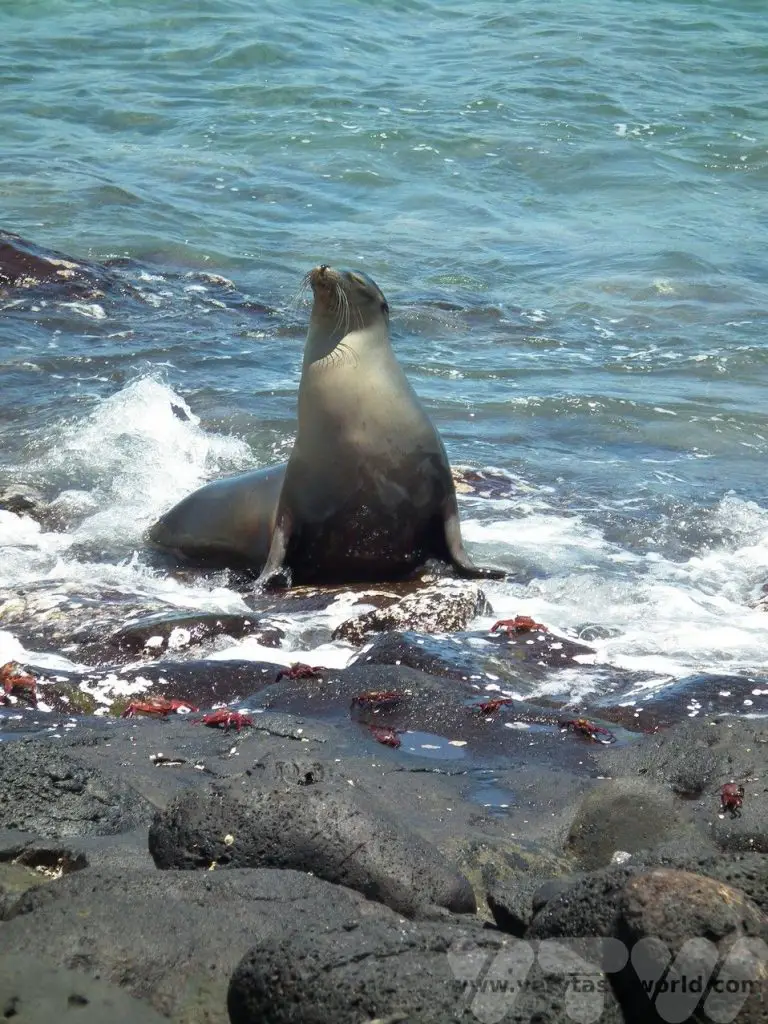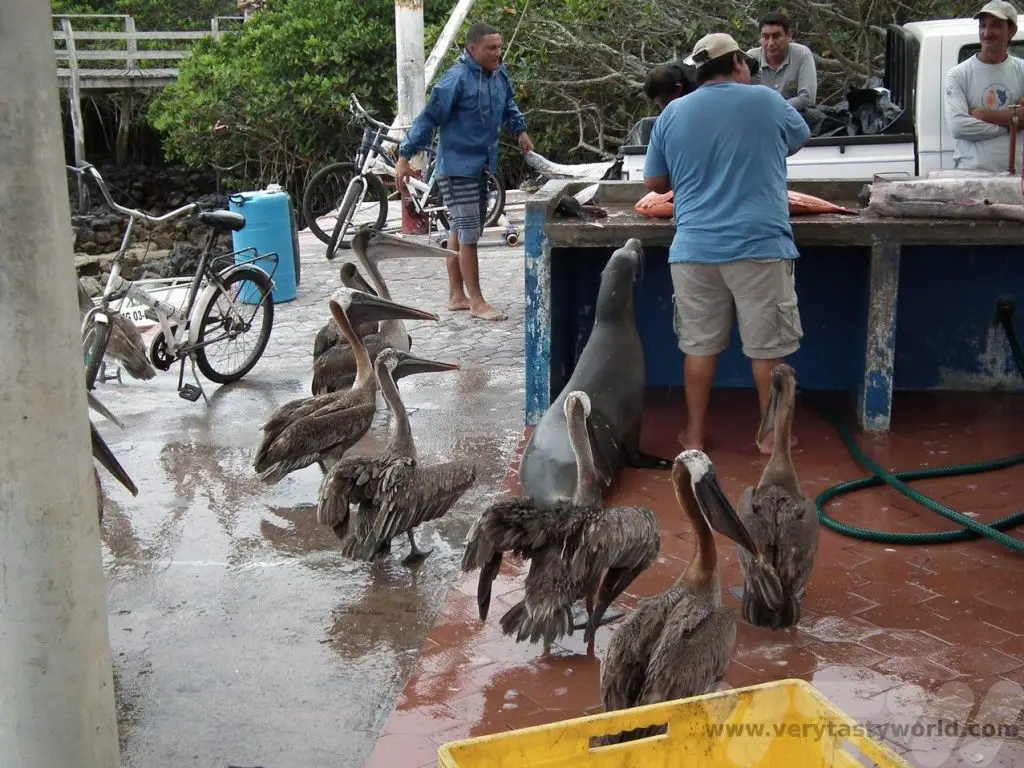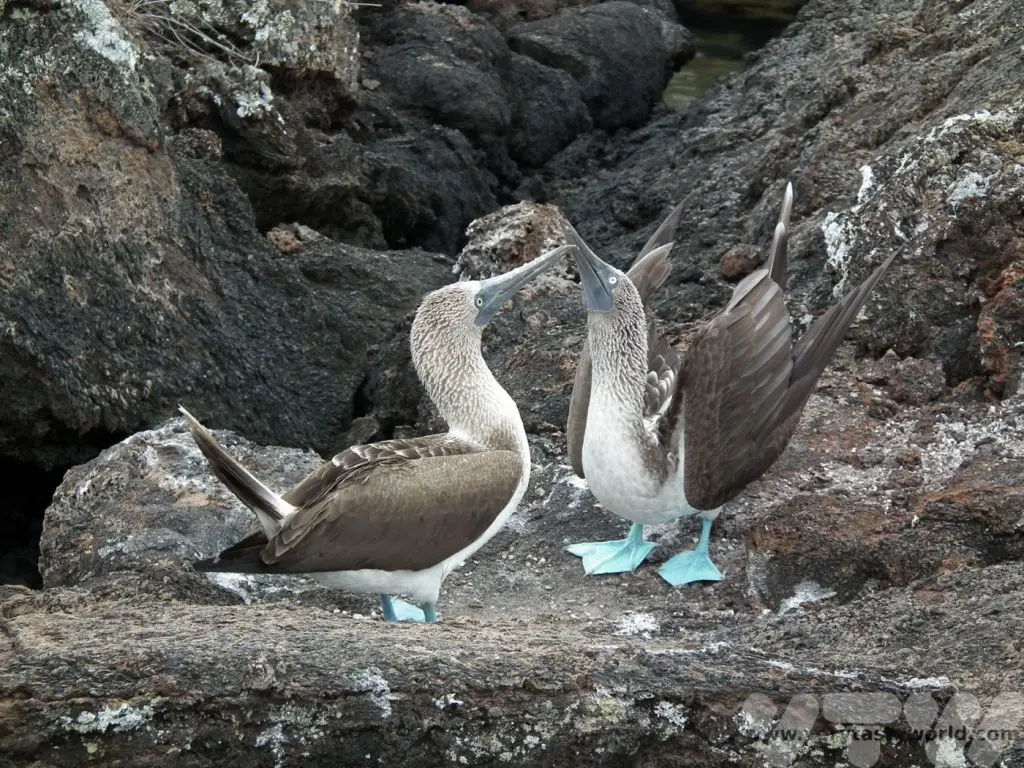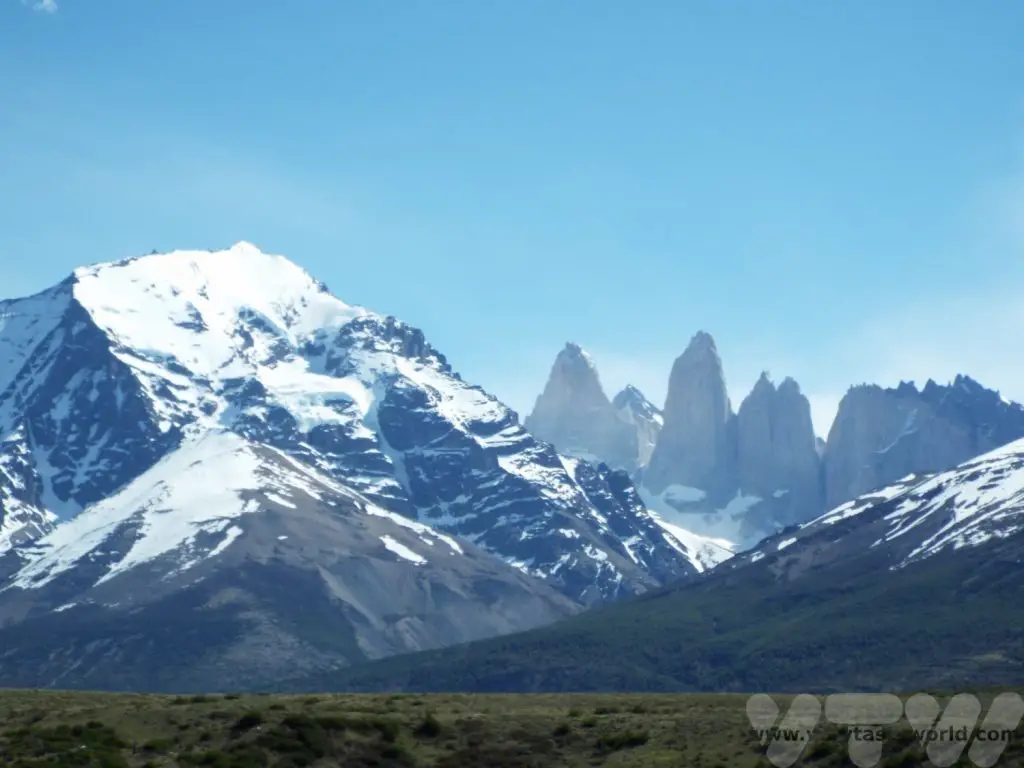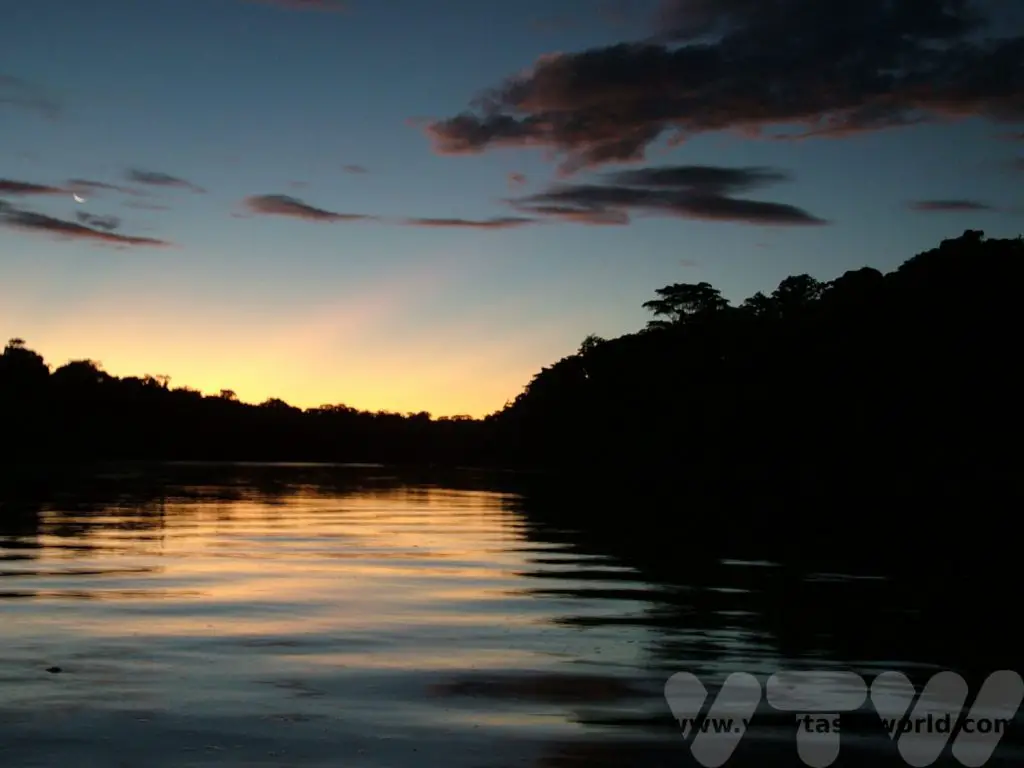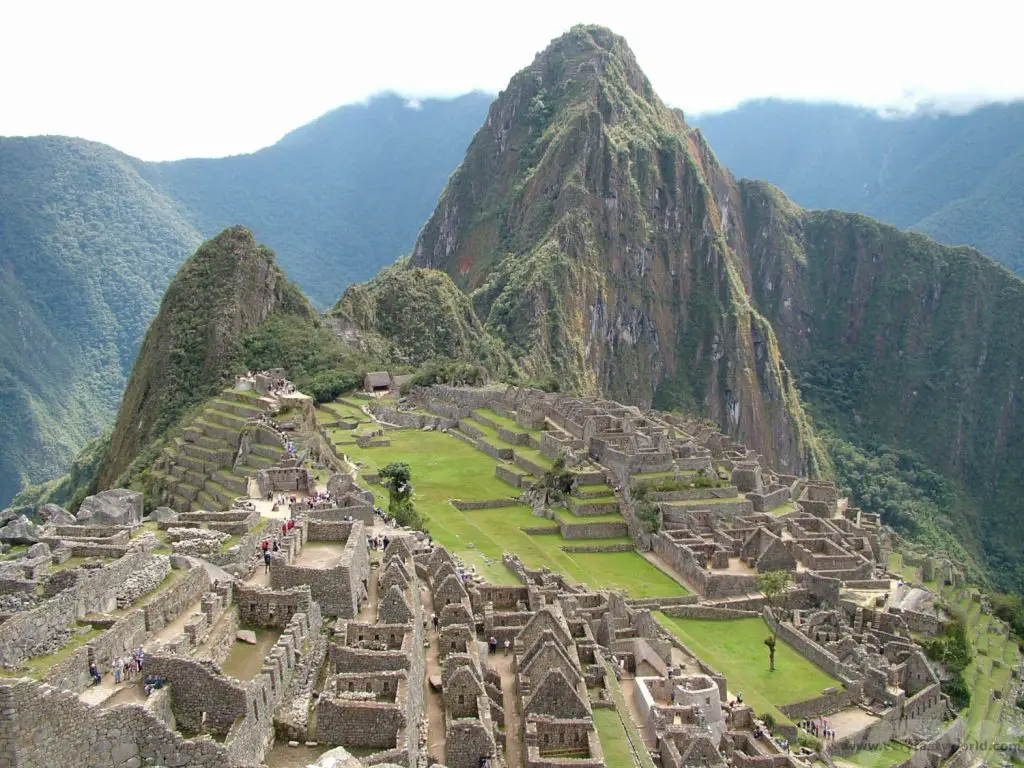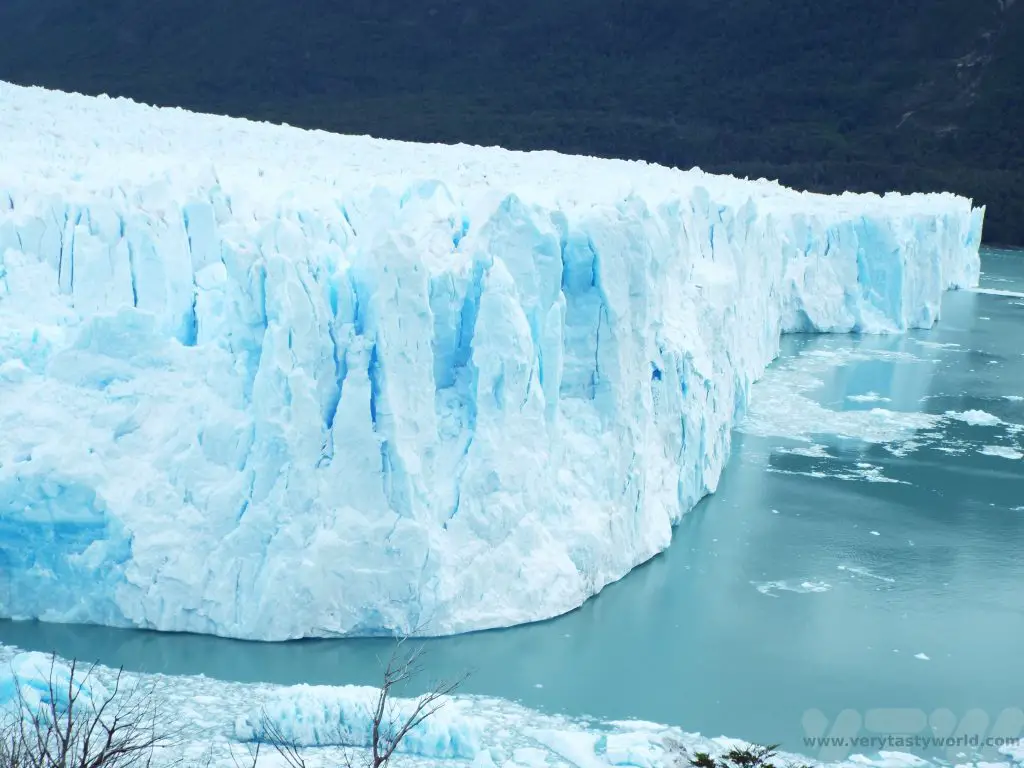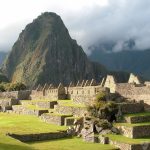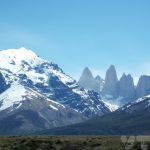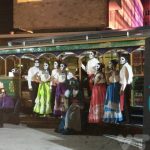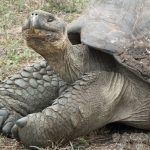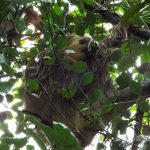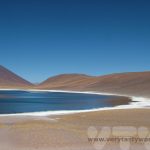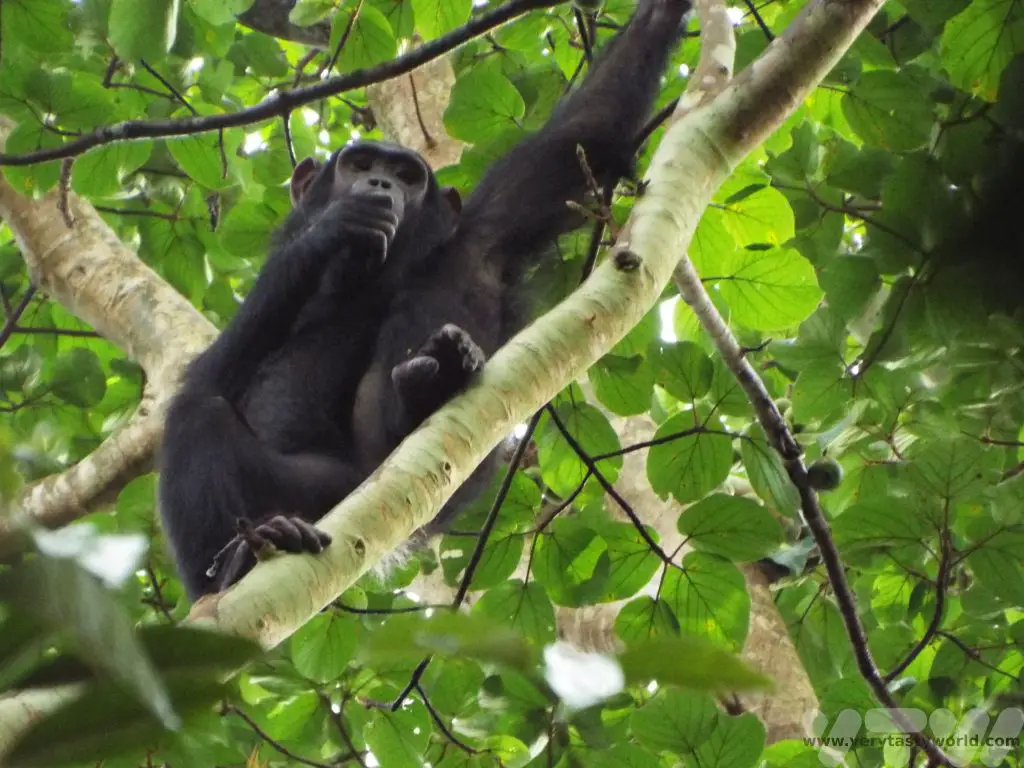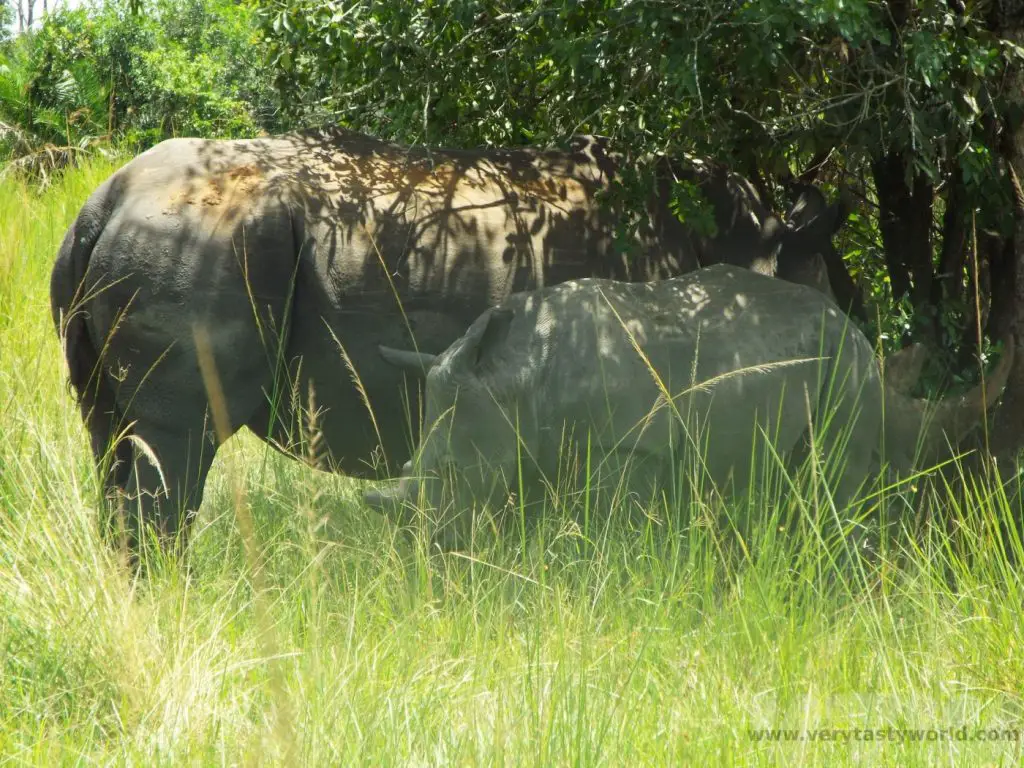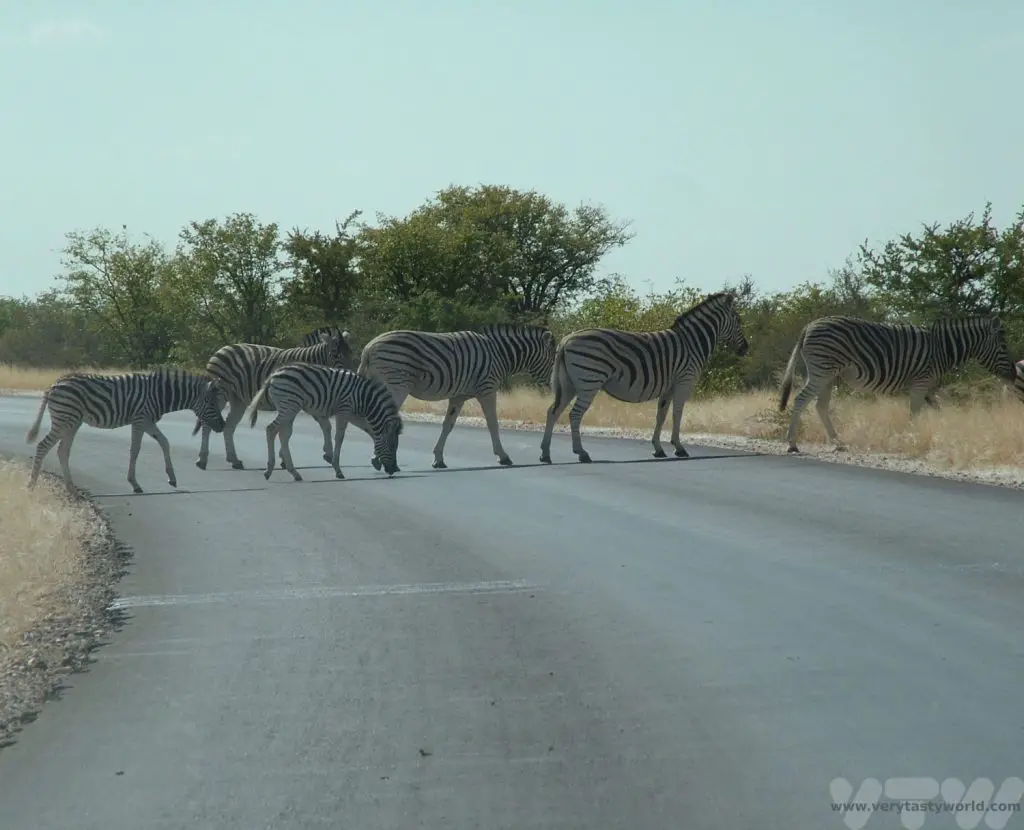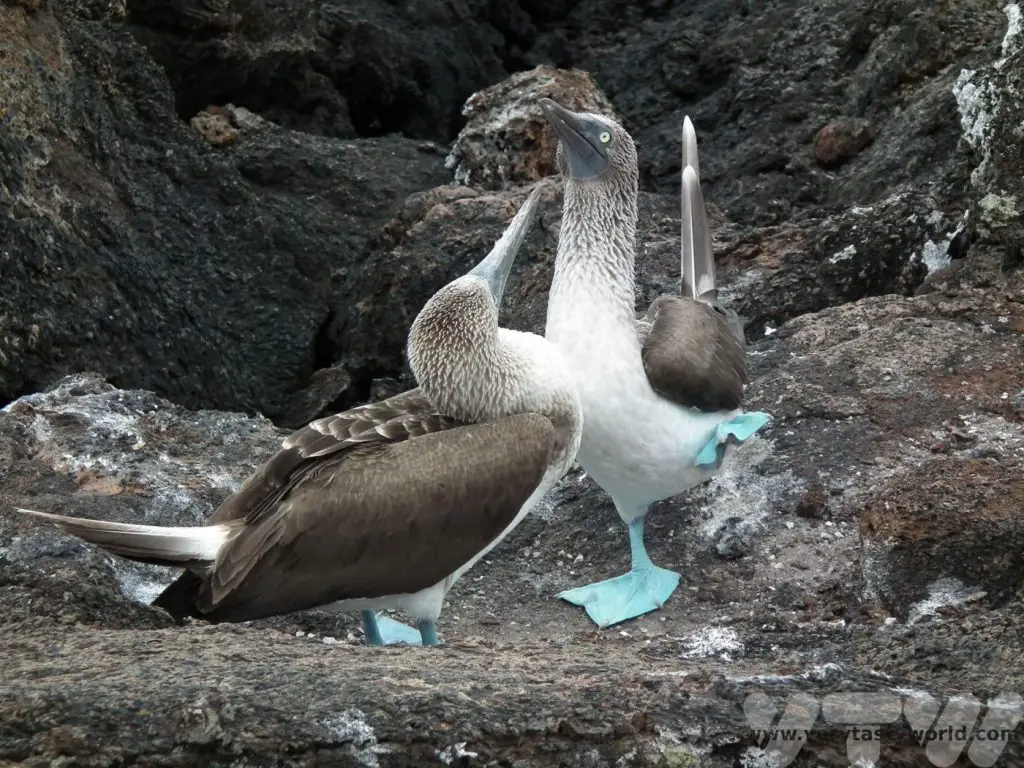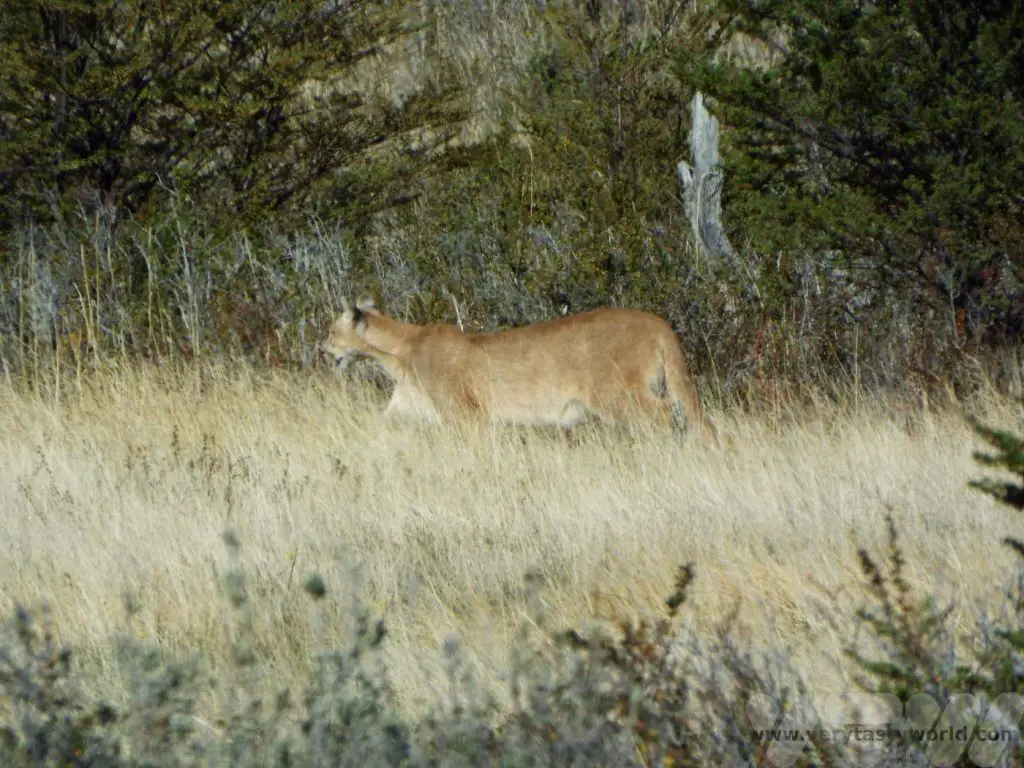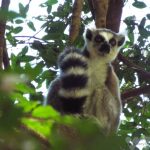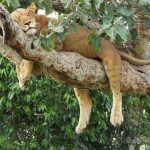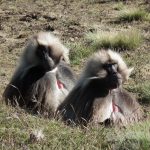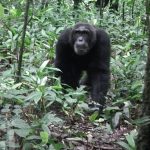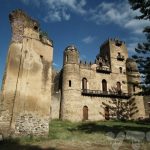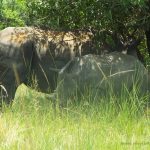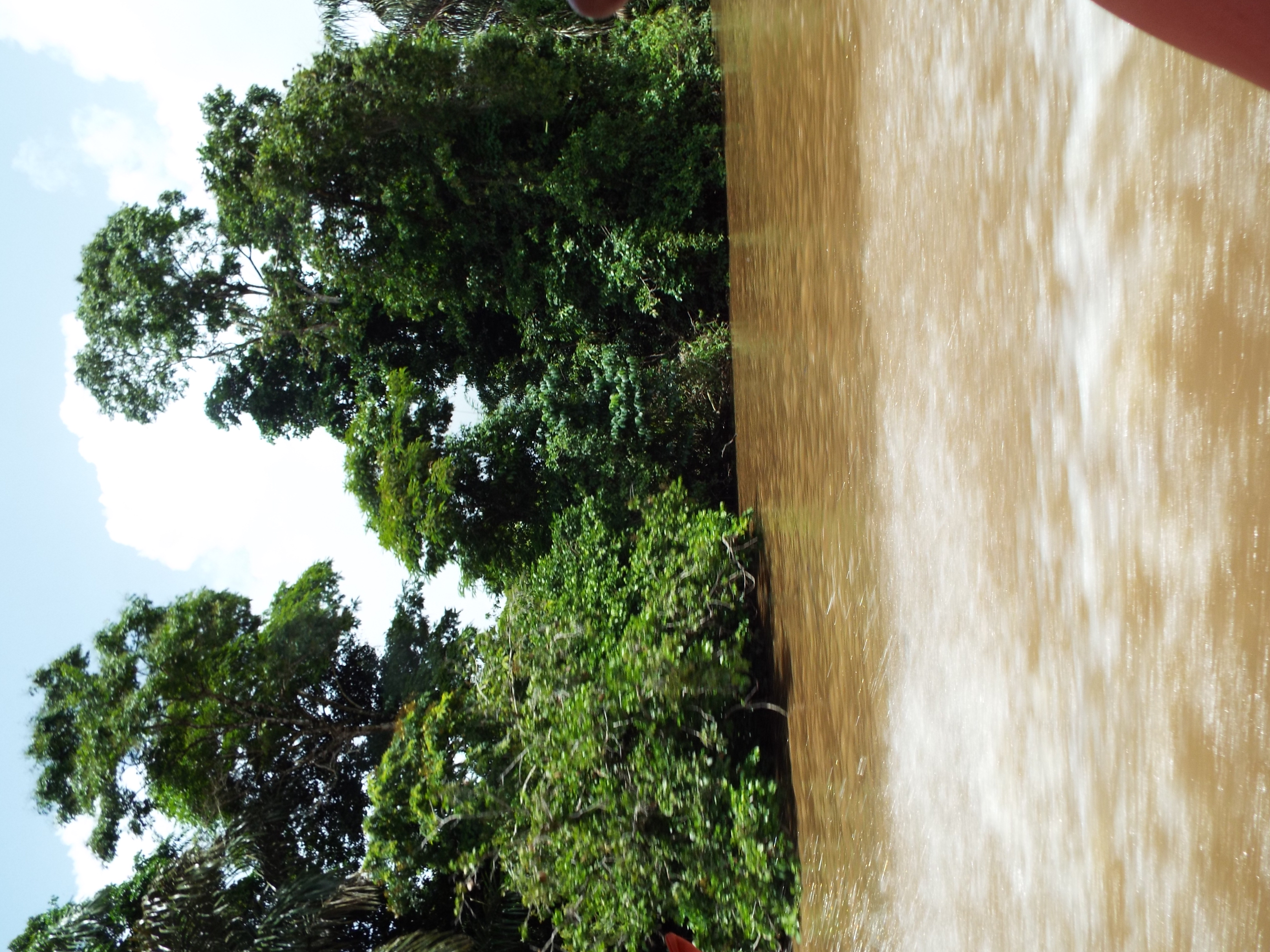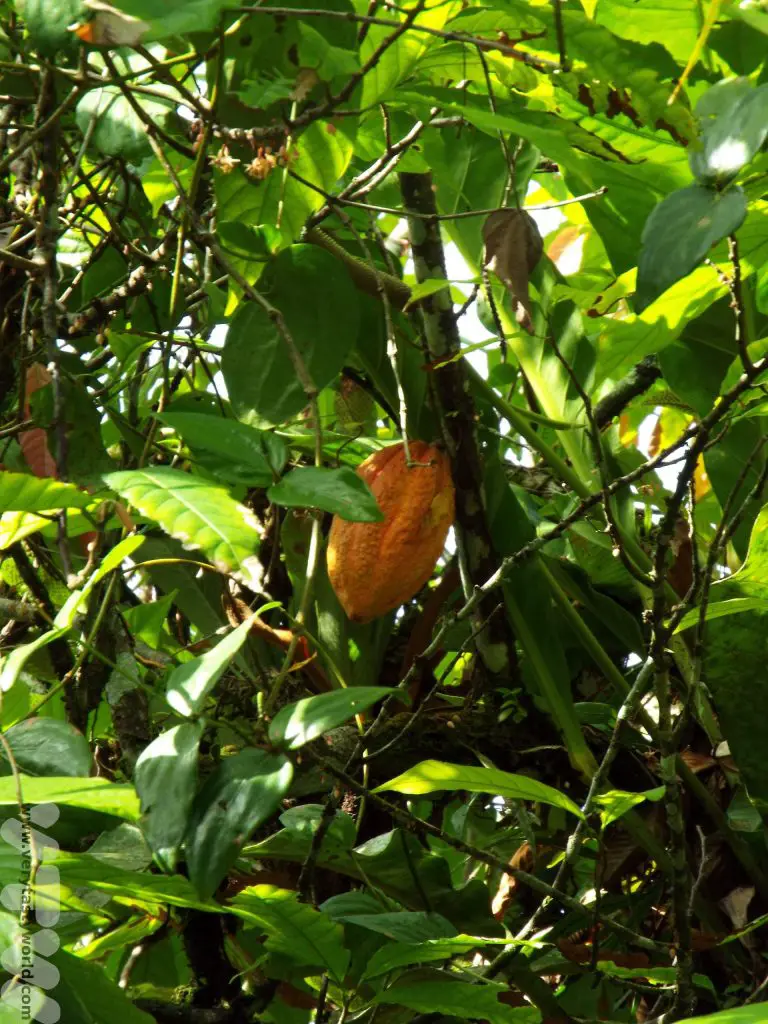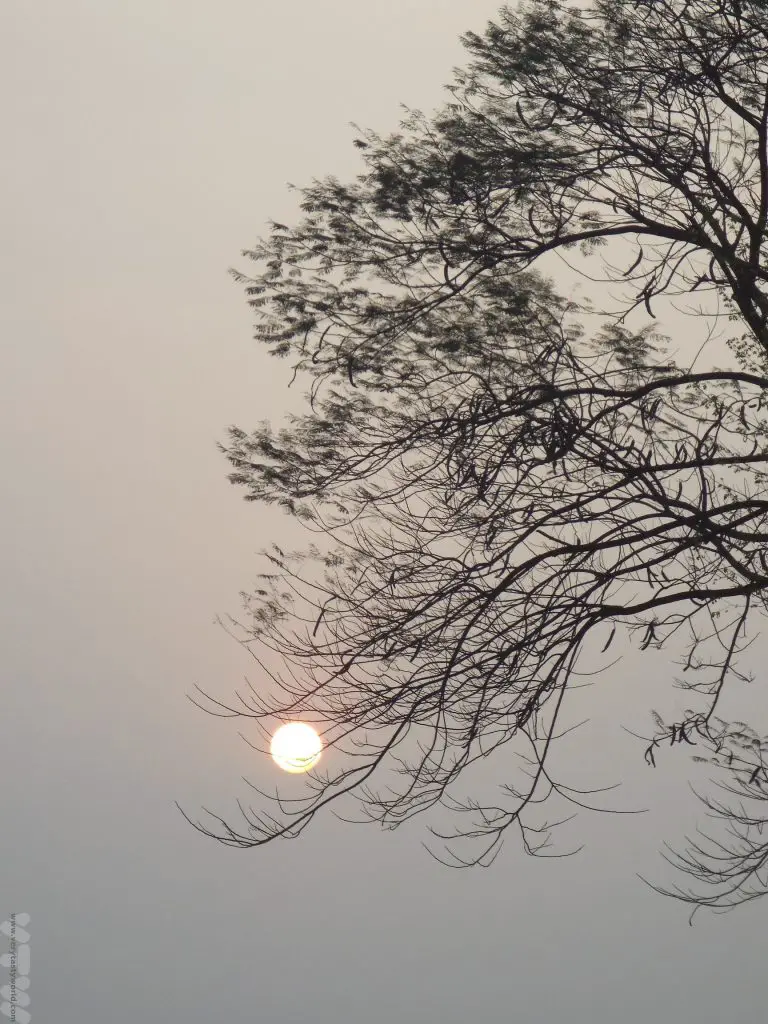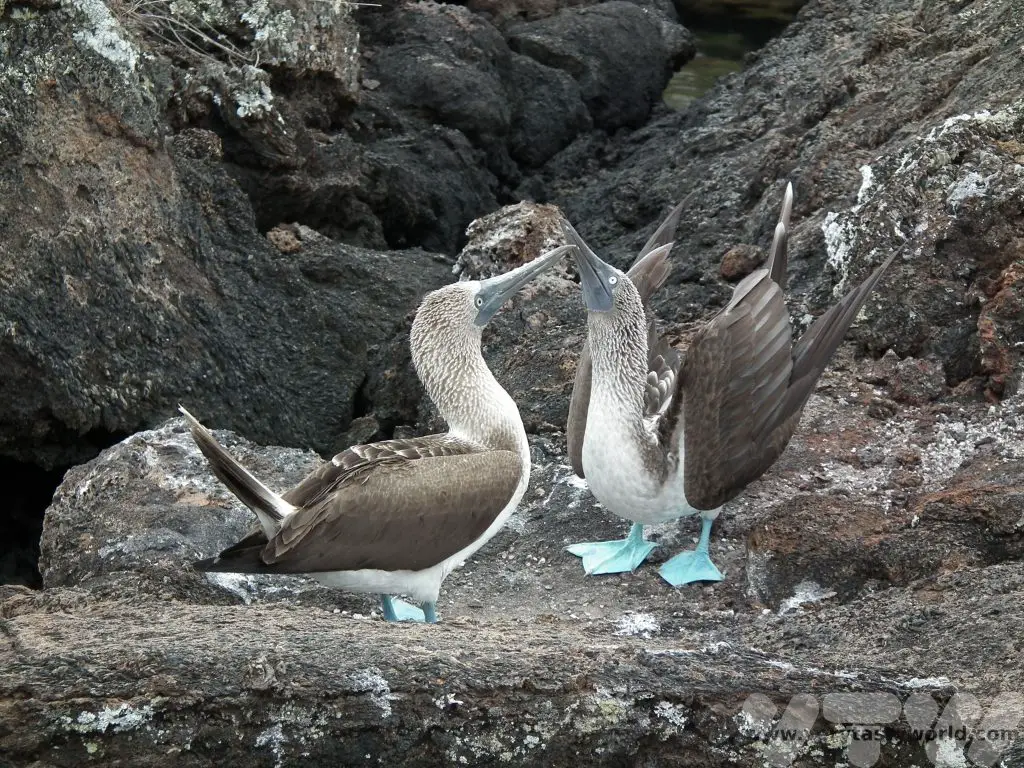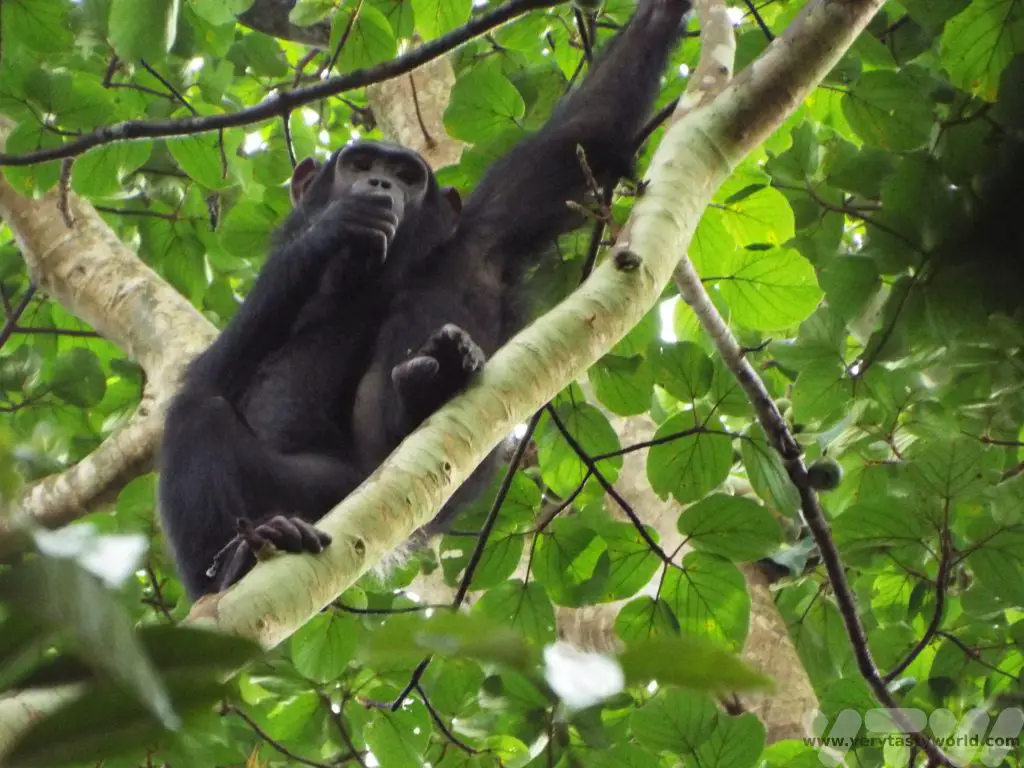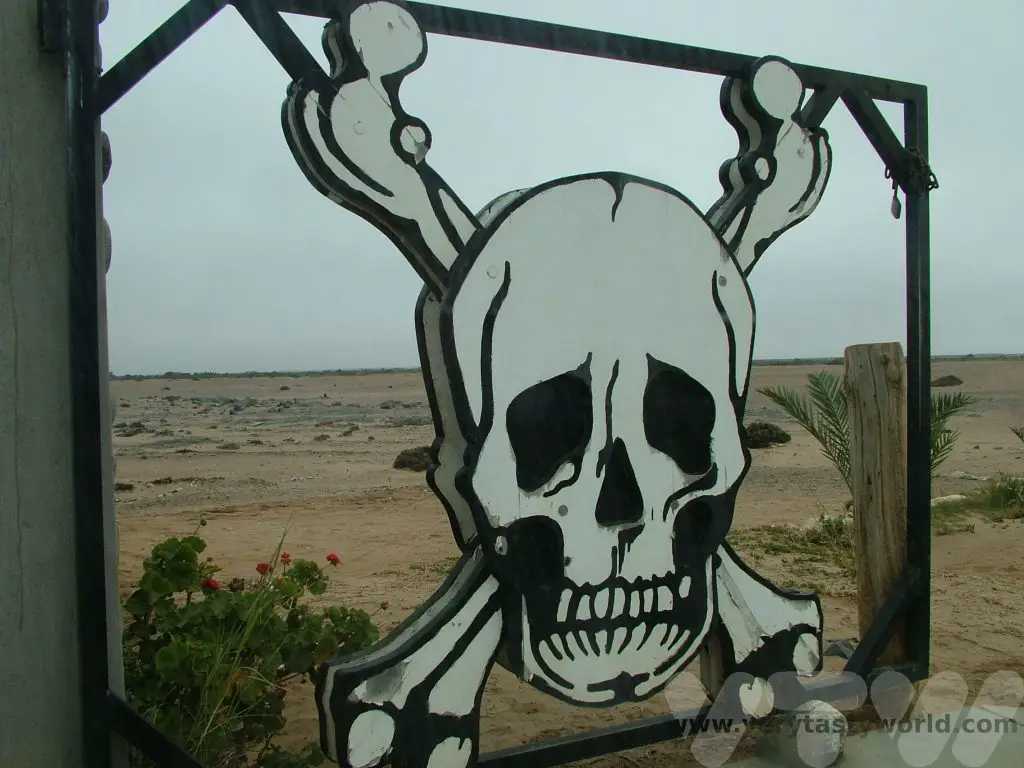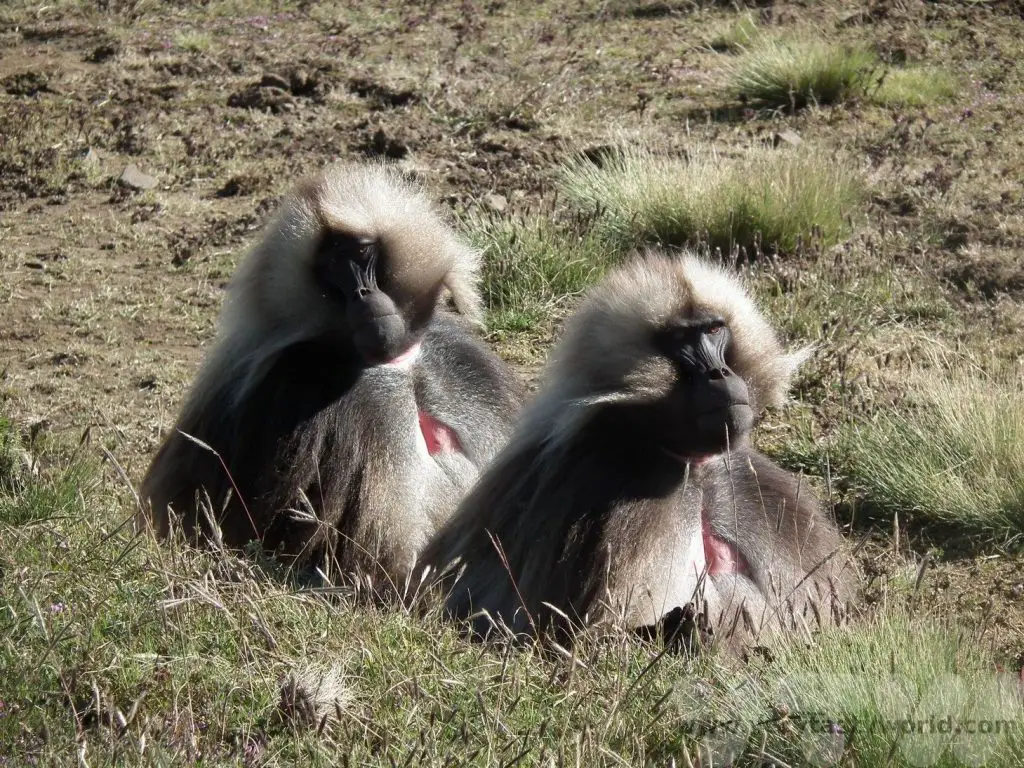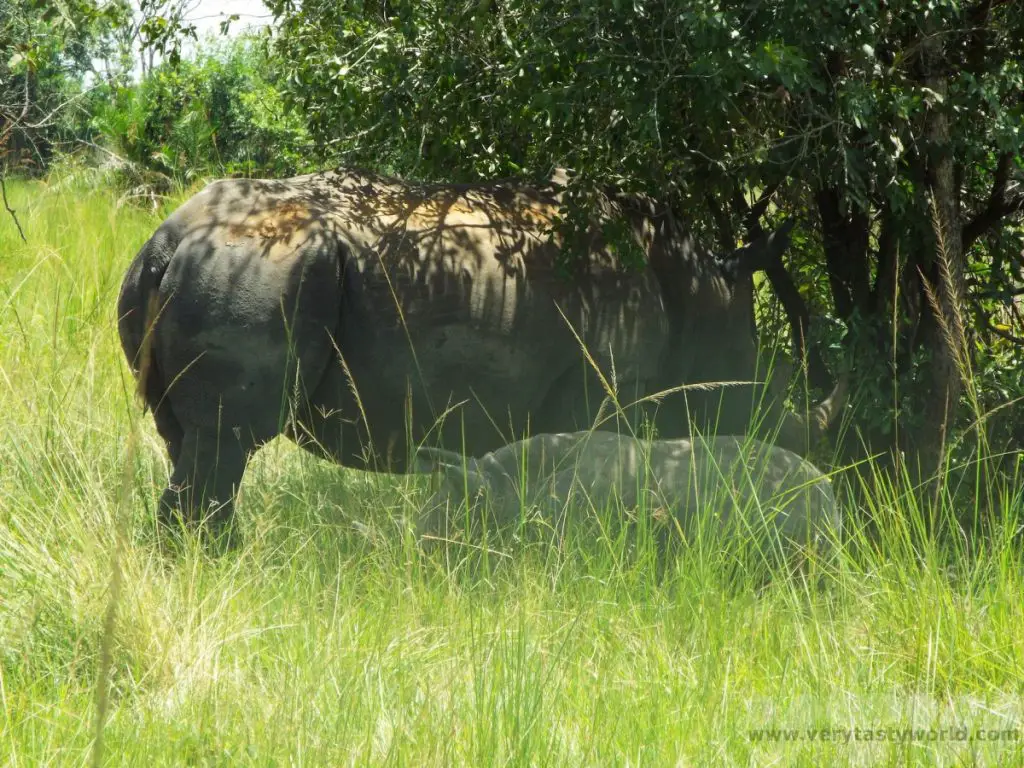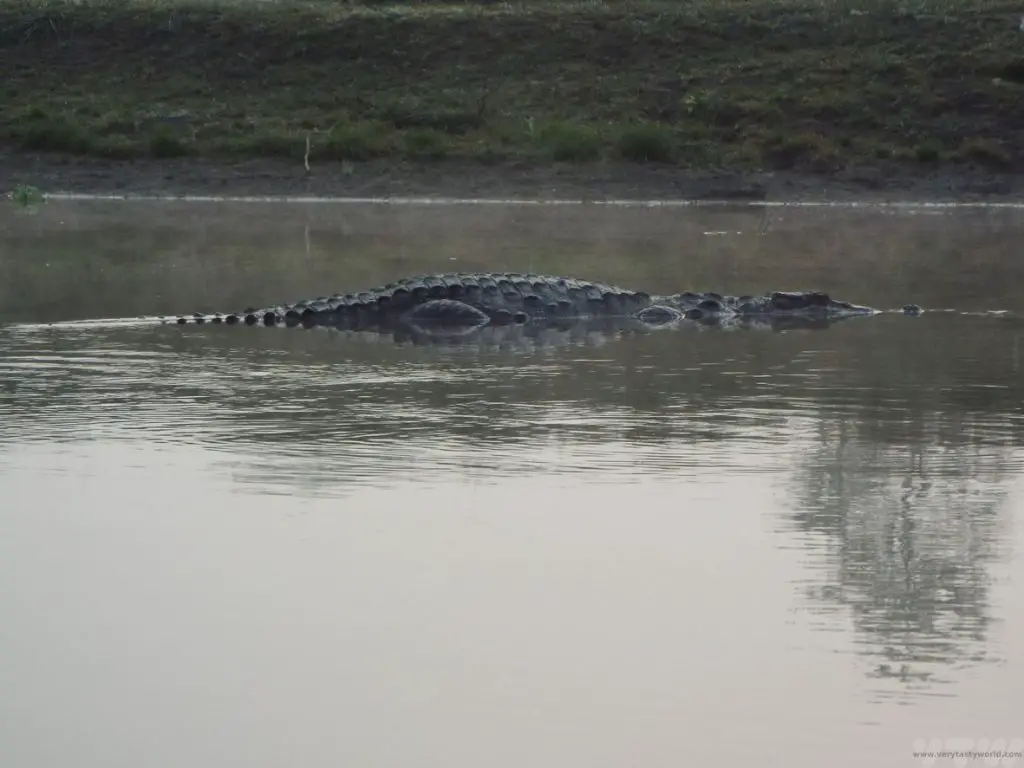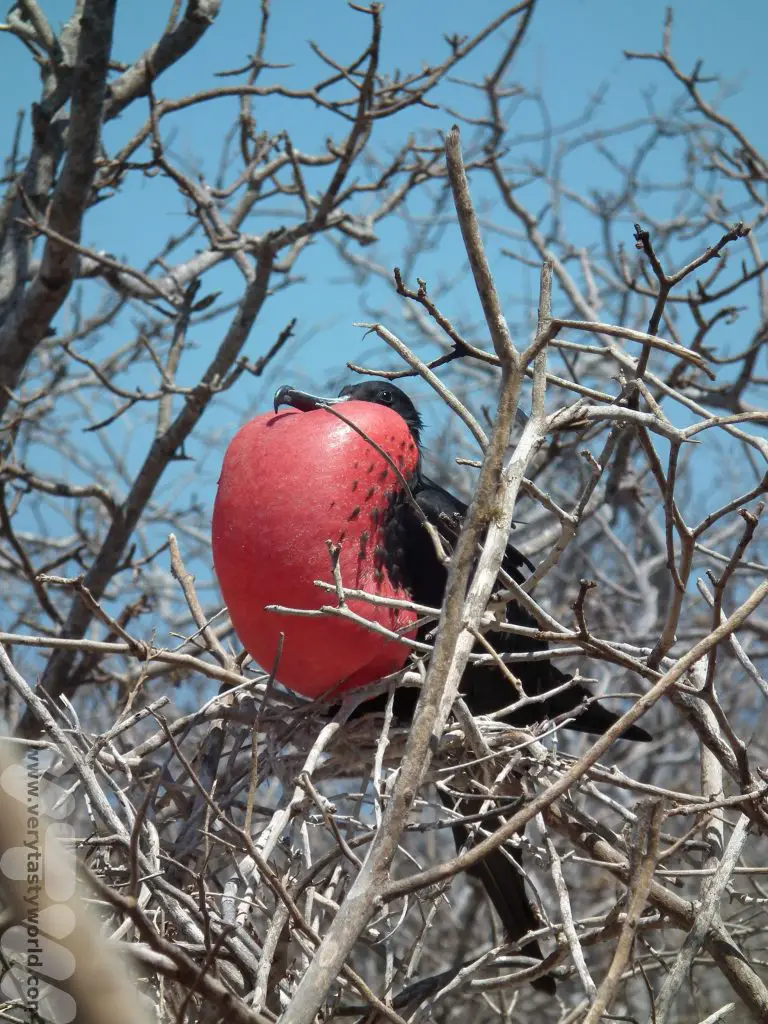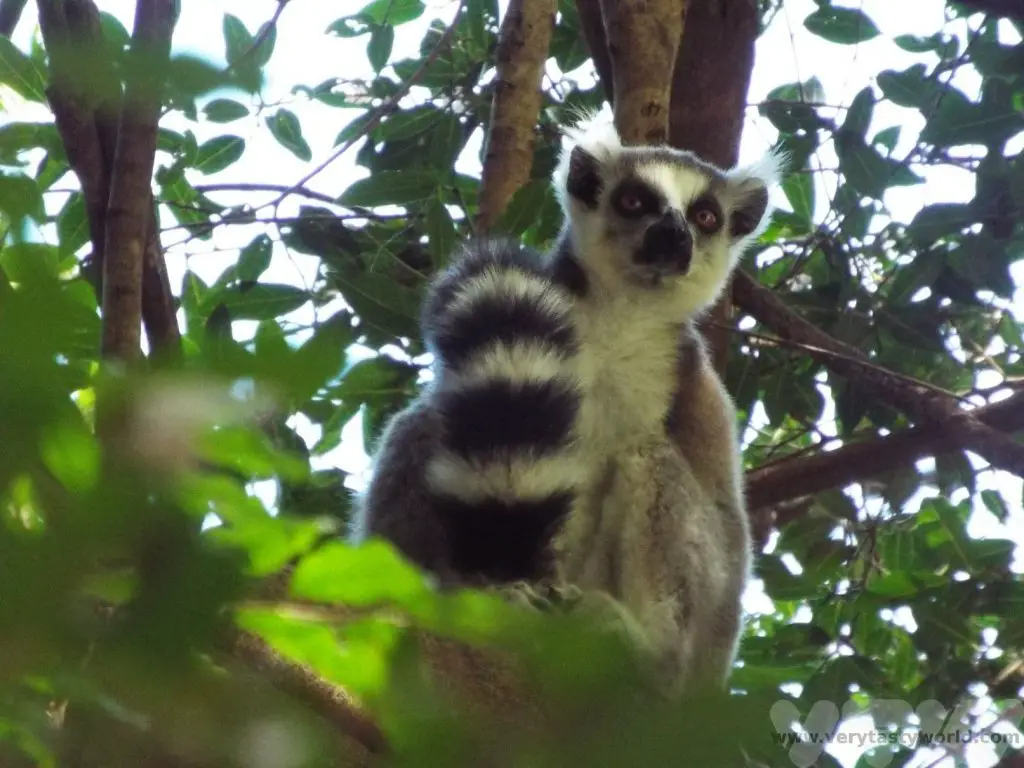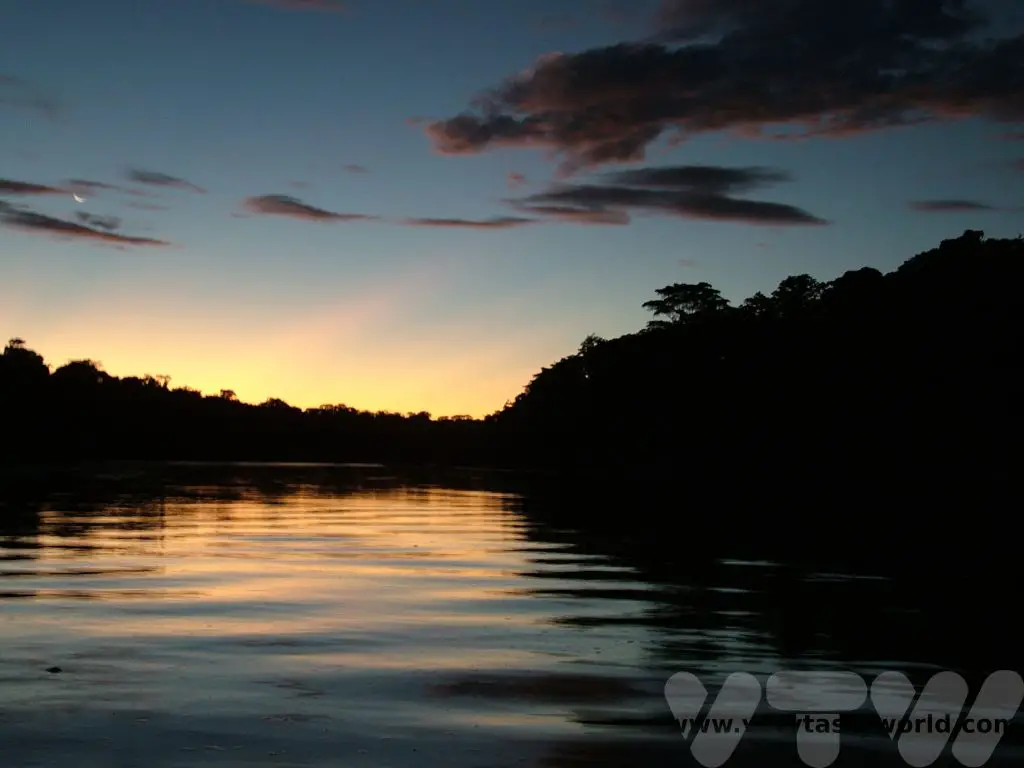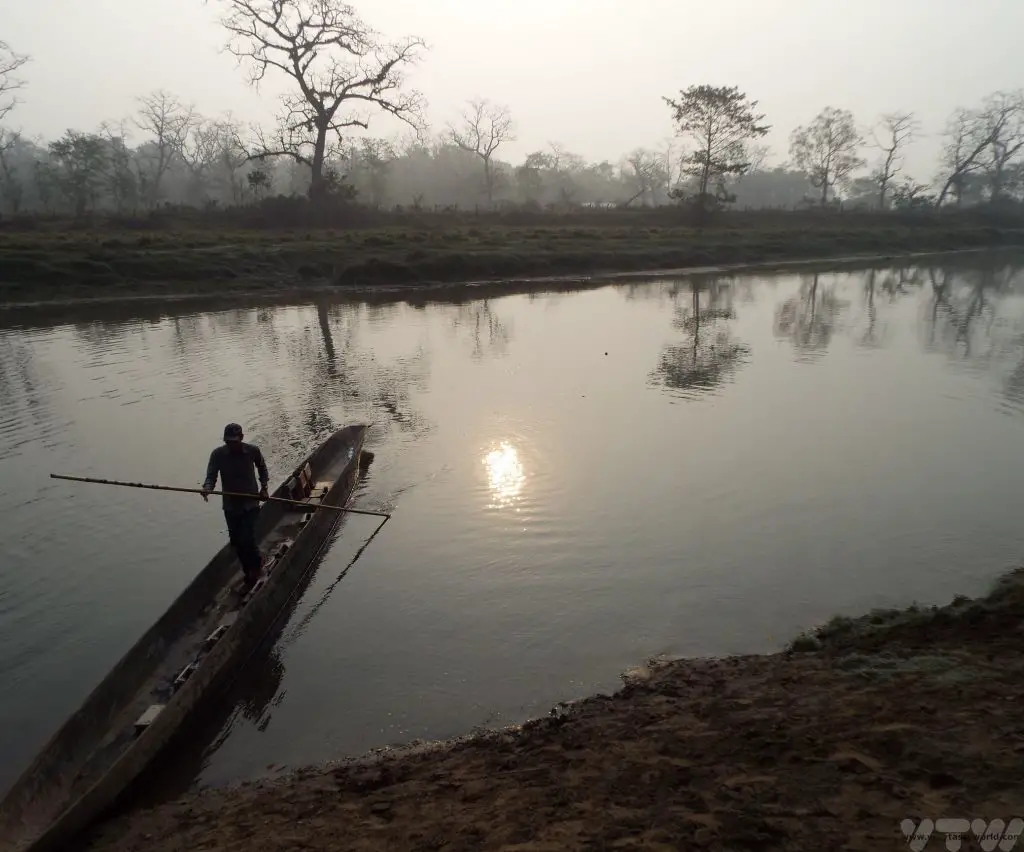Home » Wonderful Wildlife Encounters
Category Archives: Wonderful Wildlife Encounters
Tree Climbing Lions, Hippo Hordes and Safari Shenanigans in Uganda
Queen Elizabeth National Park is one of the best places to go on safari in Uganda. As well as the Big Five game animals, it also has one of the biggest concentrations of hippos on the planet and one of world’s only two prides of tree climbing lions.
About the Queen Elizabeth National Park
Queen Elizabeth National Park is conveniently located between Kibale to the north, where you can trek with chimpanzees and Bwindi Impenetrable to the south, where you can trek to see the critically endangered mountain gorillas. On our way we stopped at the equator. It is possible to reach QENP from Kampala – it is located around 400km west of Uganda’s capital and it would take around 8 hours to drive there.

QENP was founded as a National Park in 1952 and is nearly 2000 square kilometres in size. It was originally named the Kazinga park but renamed after Queen Elizabeth II visited in 1954. QENP’s range extends from Lake Edward in the southwest to Lake George in the northeast. Both lakes are connected via the Kazinga channel. The park largely comprises savannah and grassland.
The best time to visit is during the dry season (January – February and June – September) but we visited in late October. The reason for this is that we were on a budget and timed our visit to take advantage of cheaper gorilla trekking passes later in our trip. October is officially rainy season but it doesn’t rain all the time and usually not all day. In fact we got really lucky with the weather for most of our trip and managed to see a huge variety of wildlife.
Entering Queen Elizabeth National Park
We enjoyed a couple of days on safari in this incredible park. We arrived from Kibale in the afternoon, crossing the equator. As with all national parks, you need a permit to enter and you are signed in and out. The Uganda Wildlife Authority website has information about the park, including entrance fees. We toured Uganda with a local company and they had pre-arranged the permits for us.
There is a small visitor’s centre which has some info about the park as well as a café which serves locally produced food and has a good wi-fi connection. It’s also possible to buy gorilla coffee there – the profits go towards the conservation of these marvellous and critically endangered primates, which share around 98% of our DNA.
En route to our camp at QENP we received notification of a sighting. A pair of lions which had been, ahem, mating in the afternoon and, if you’ll forgive the expression, were all shagged out.
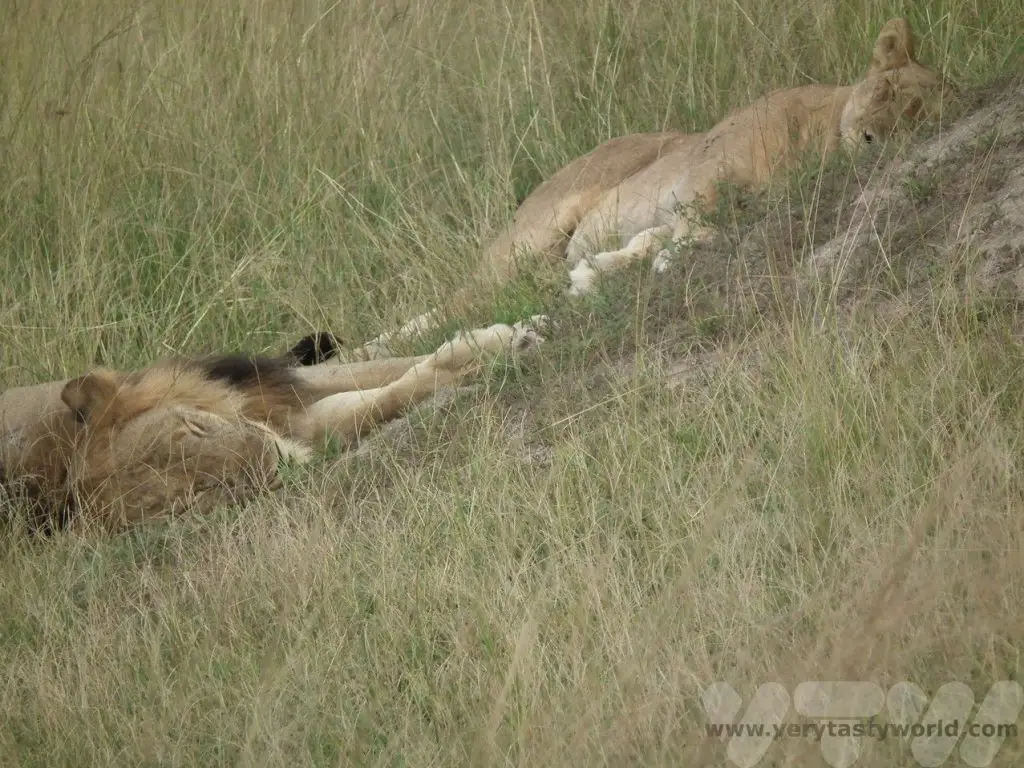
We stayed at the Kasenyi Safari Camp, located near Lake Bunyampaka. We had a large, tented room on a platform with a private bathroom. It was surprisingly luxurious and really didn’t feel as though we were under canvas. The lodge has a large, thatched communal area where everyone comes together to dine in the evening.
Because the camp is located right within the park the animals frequent the area, so we had to be accompanied by a gun-bearing ranger every time we wanted to walk between the main camp and our tent so that we didn’t end up being a very tasty snack for the lions. We could go out safely onto the tent’s decks to view the animals at night.
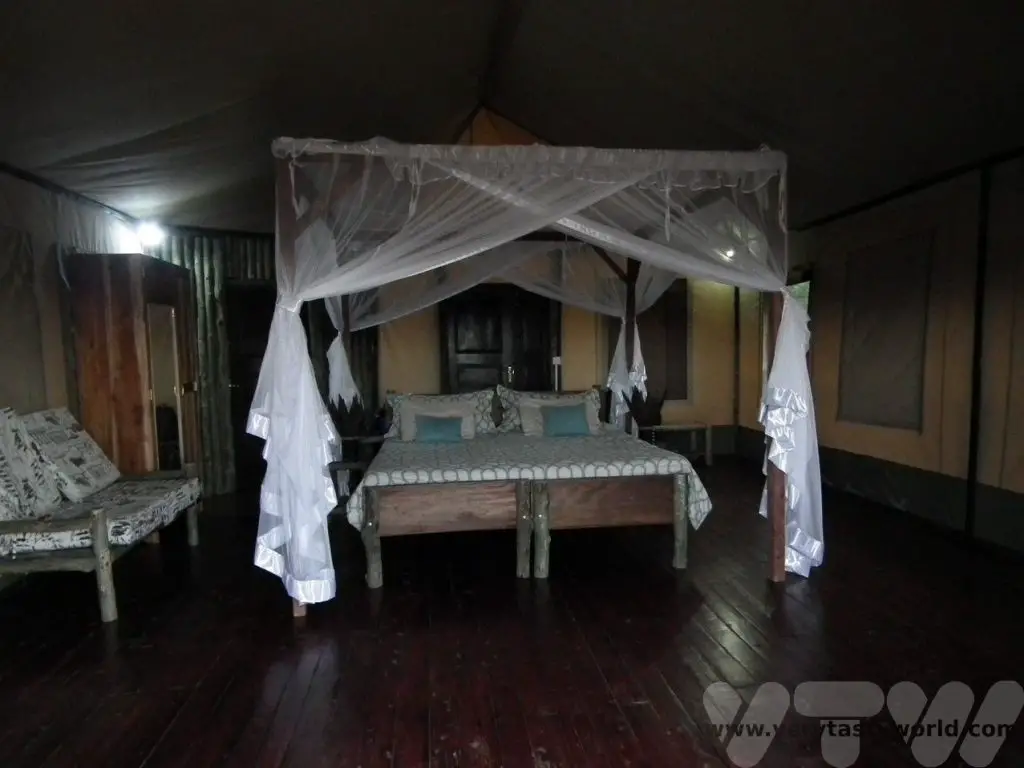
And catch the sunset over the lake.
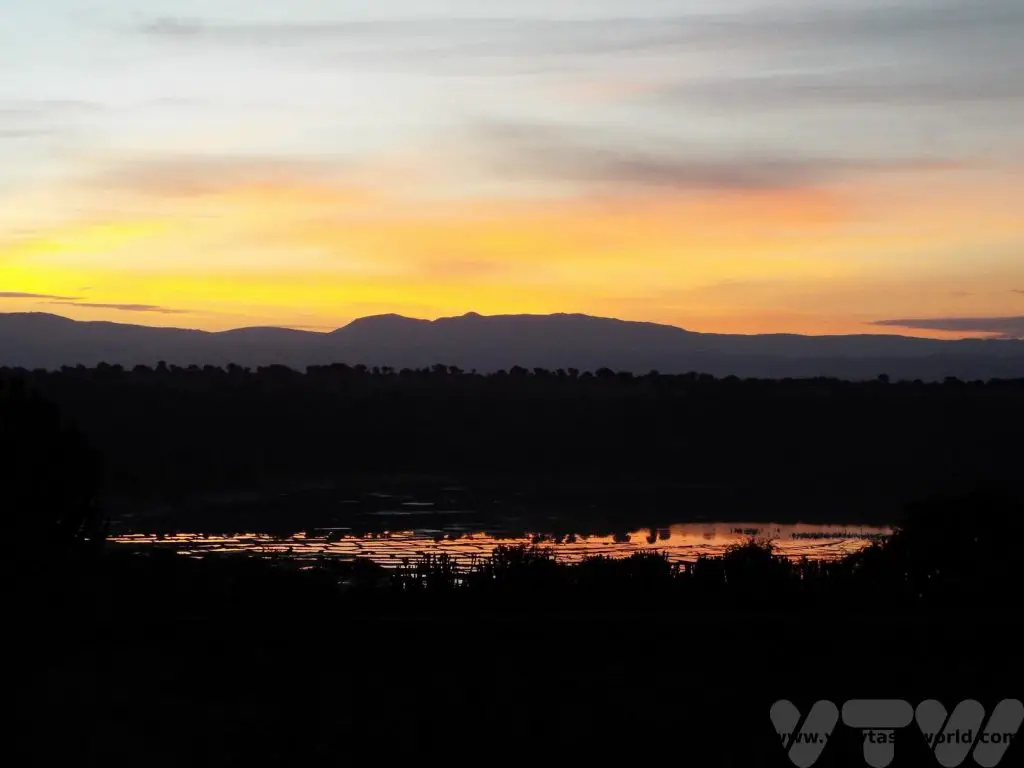
On Safari in QENP
It was an early start to get out into the park on the game drive. These drives tend to take place in the early morning and late afternoon as the wildlife is more active at those times. The animals tend to take a nap during the heat of the day. So for a morning drive before breakfast, take a couple of snacks to keep you going until you get back to camp.
Our first encounter was with an elephant strolling majestically in the morning sunlight.
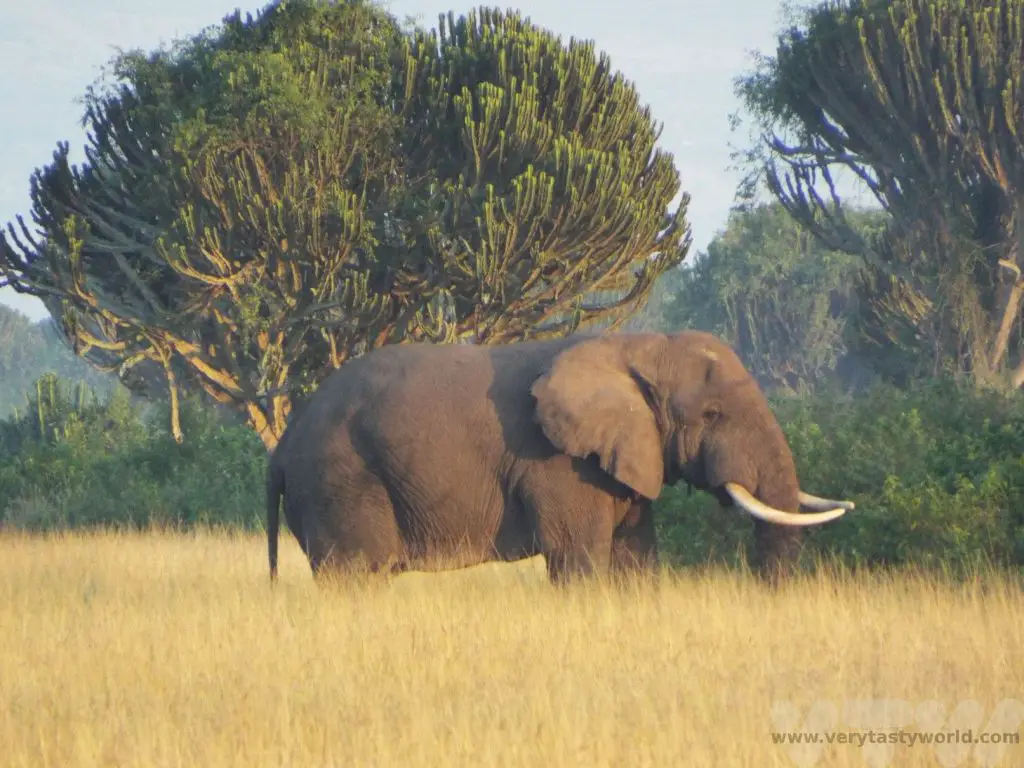
Another elephant decided that what he really needed was an early morning scratch on a rock.
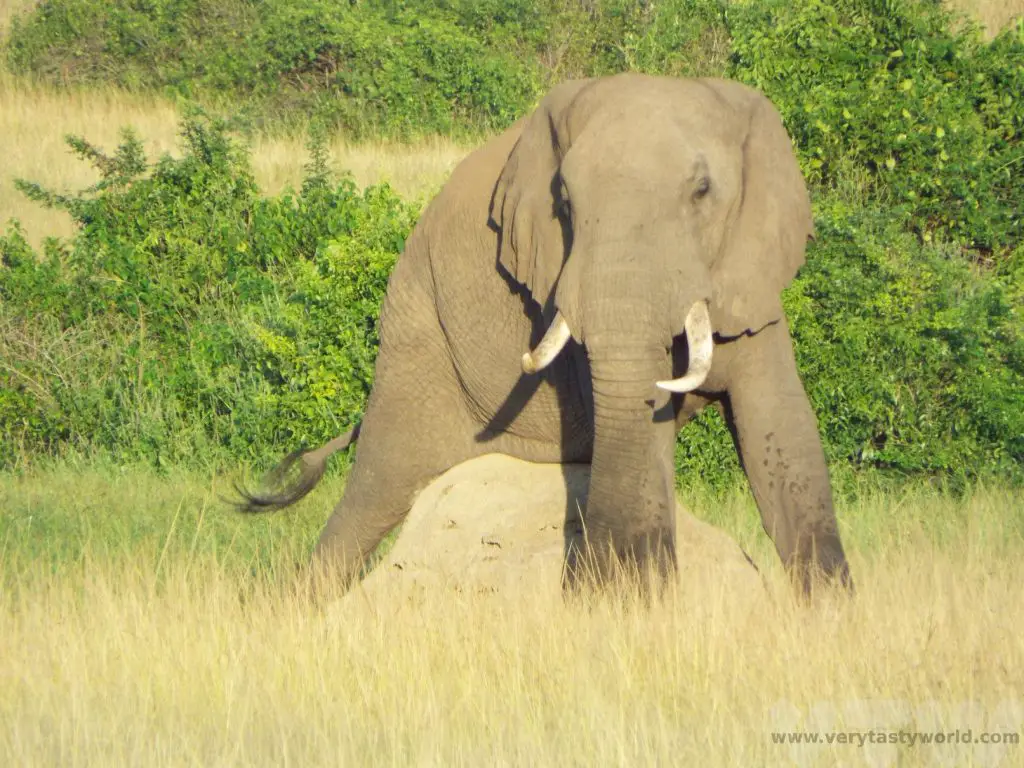
We also encountered buffalo…
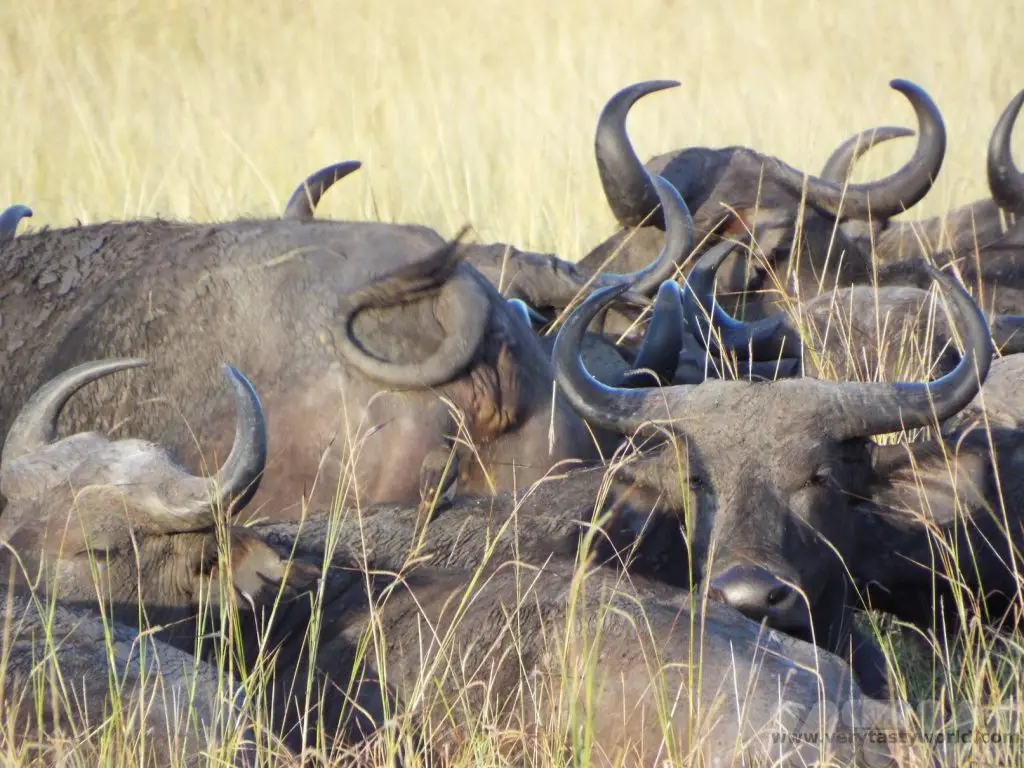
…a defassa waterbuck…
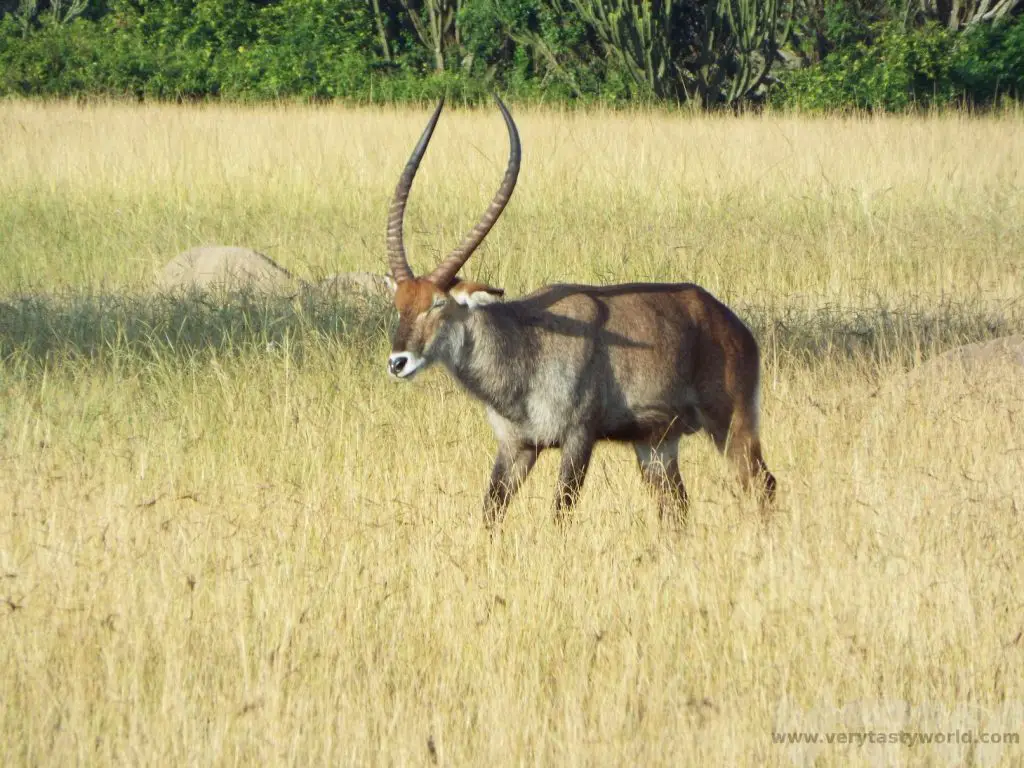
… and a couple of common duikers having a bit of a battle.
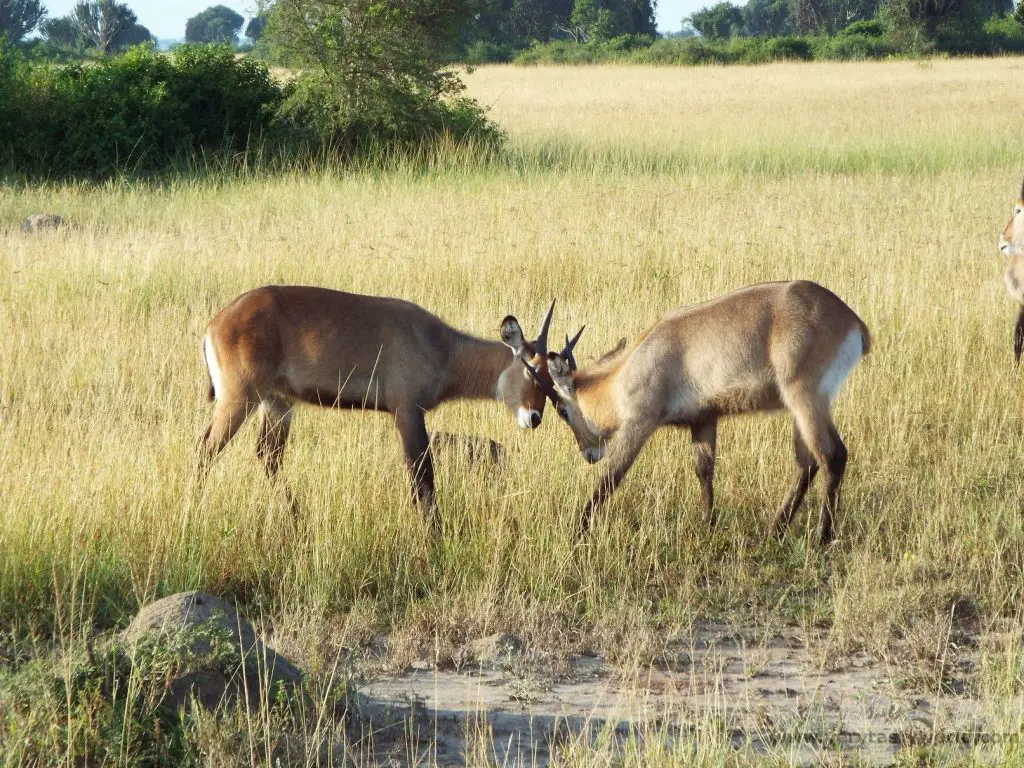
Many of the safari guides know each other, even if they work for different companies, and they all co-operate to let everyone know about animal sightings. If you are lucky, you will get there first and have the prime position for taking photos from your vehicle, at other times you may have to wait a while as vehicles wait for others to move on.
Then it was back to camp for breakfast. It was here that we discovered that we could go off-menu and ask for a local breakfast, and discovered the joys of a Ugandan rolex – an omelette rolled up inside a chapati. Delicious!

Kazinga Channel Boat Trip
Our afternoon didn’t involve hanging around the lodge waiting for all the wildlife to come out and play in the evening, we had a boat trip planned.
The Kazinga Channel is a waterway that links Lake Edward and Lake George in the park. It has one of the highest concentrations of hippos in the world. A boat trip along the channel is a fantastic way to spend a couple of hours.
Top tip: When boarding the boat, ask which side to sit on – the boat will travel a set route and the ideal position for optimum wildlife viewing is that side that skirts the shoreline. We sat on the left side, but the route may have changed in the intervening time since our visit. That said, it’s okay to move around the boat, in order to take photos, during the trip. We saw many, many hippos.
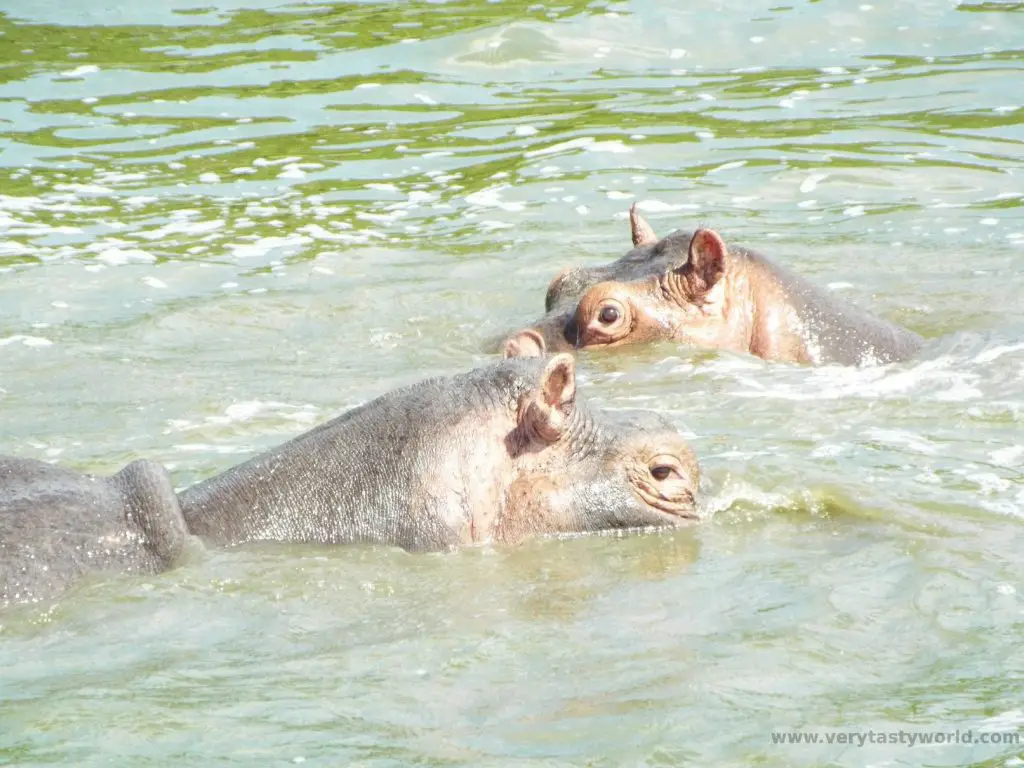
The bird life was fascinating as well.
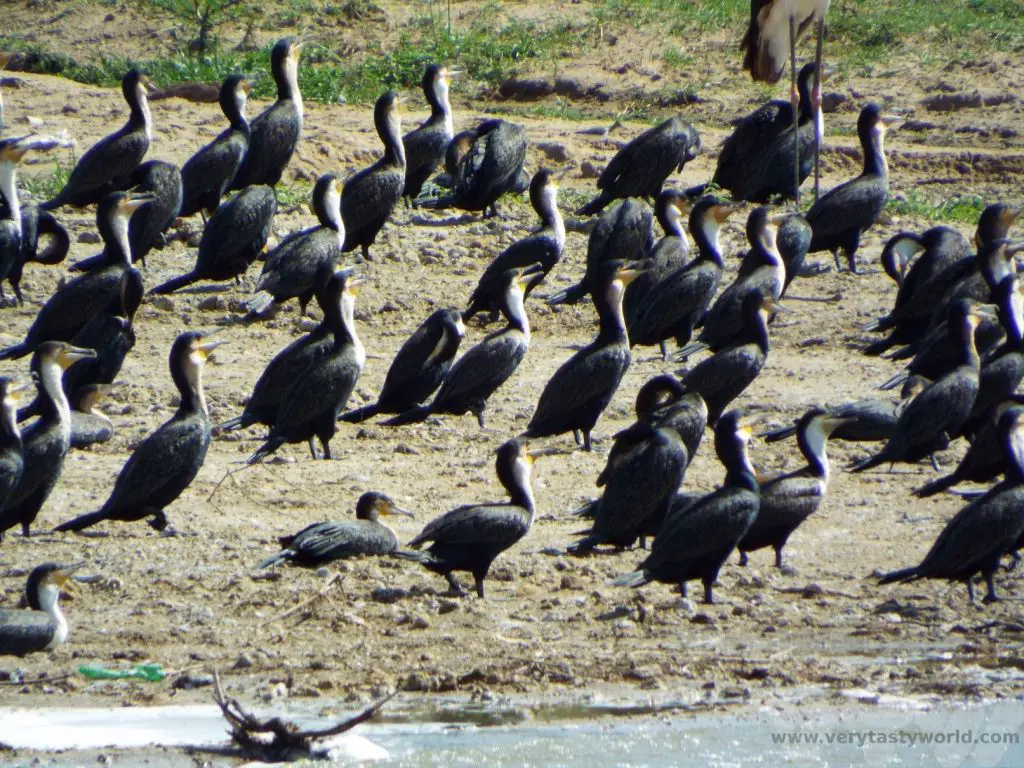

Beautiful kingfishers, so different to the turquoise kingfishers from home, were waiting patiently or hovering in the air looking for fish in the water below.
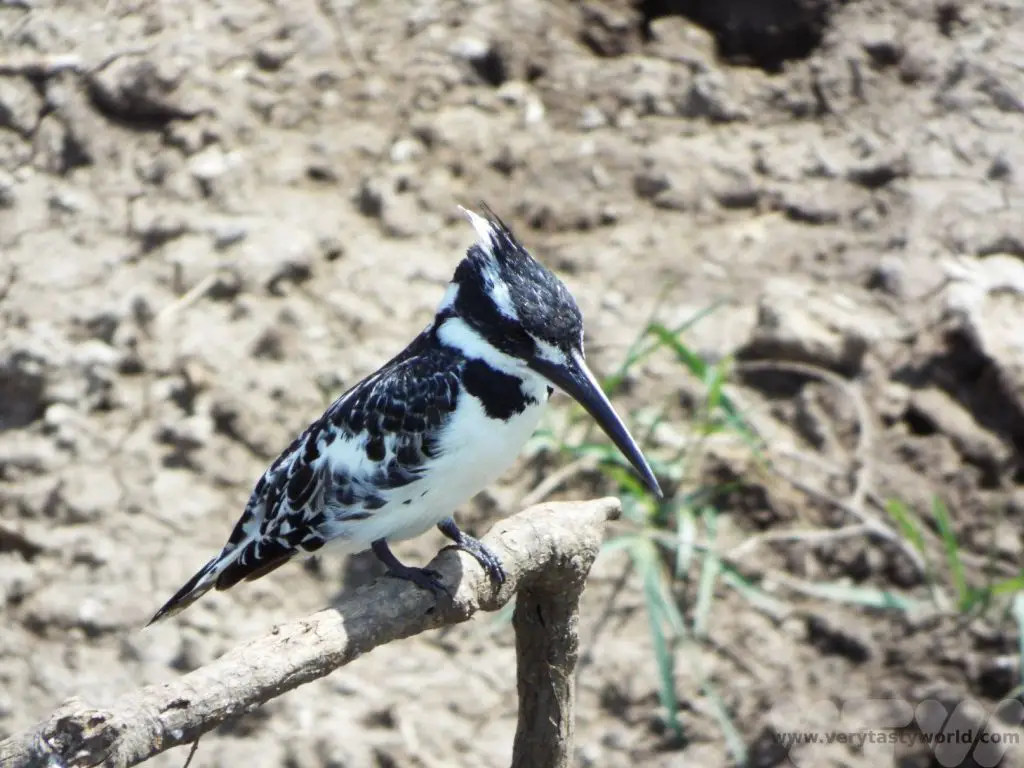
And, just as we headed back to the dock, we saw a baby hippo. Altogether now, aaah.
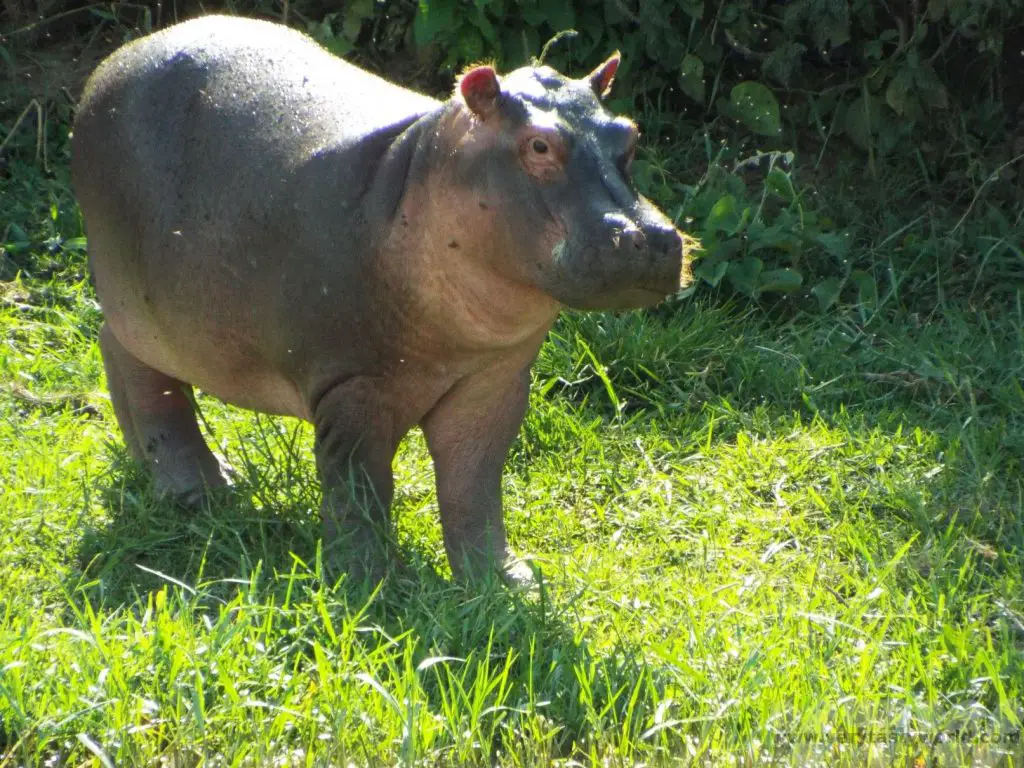
The Tree Climbing Lions of Ishasha
The following day we headed out towards the Ishasha sector located to the south of the QENP. This is a very special place. It is one of only two locations in Africa where the local lions climb trees! (The other place is Lake Manyara Park in Tanzania.)
We headed directly to our lodge and stopped to see some lions on the way.
Can you see them?
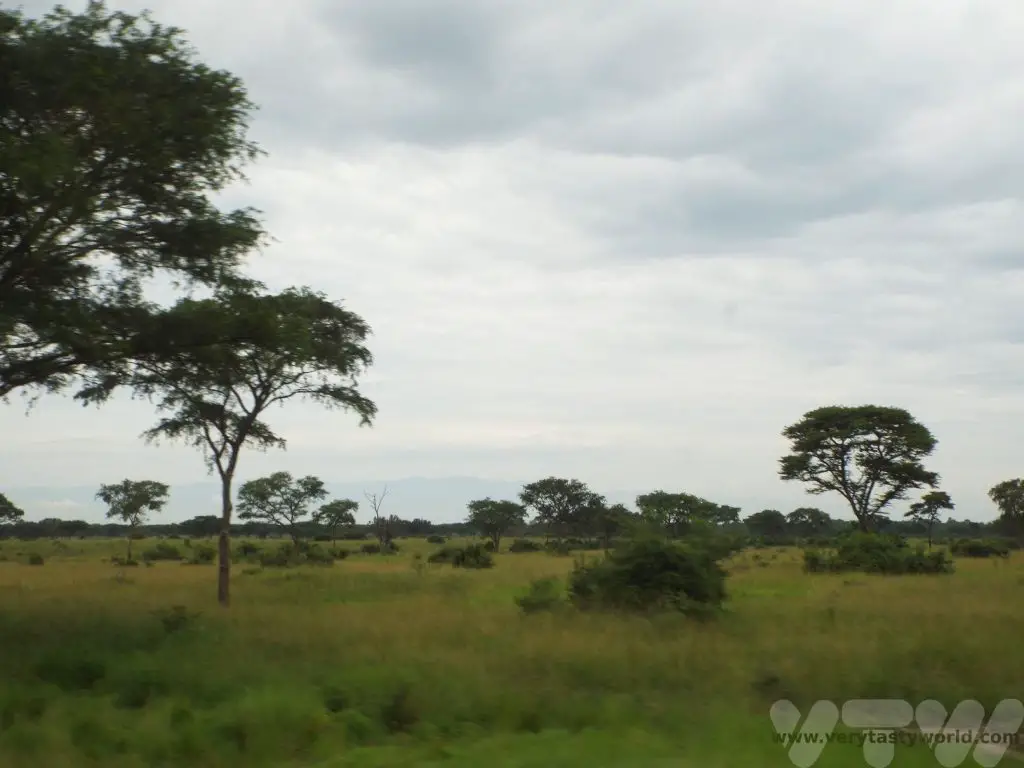
Fortunately, our cheap little bridge camera had a pretty good zoom.
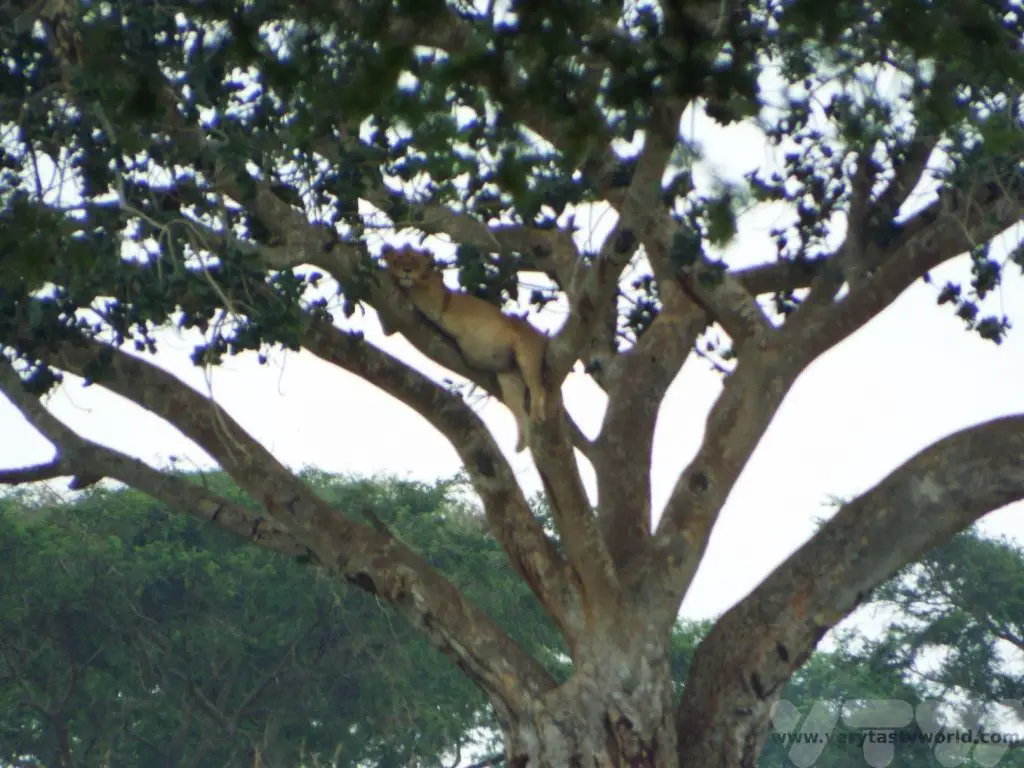
Unlike some big cats (and some little cats) lions aren’t natural climbers. It is thought that they have learned this behaviour in this very localised area. No one is really sure why – there are some theories that the lions climb off the ground to avoid insects or to enjoy a cool breeze during the heat of the day. Apparently it takes some time for them to master the art of climbing and they have to teach their cubs how to do it.
We were thrilled that we had seen the lions and trundled off to our lodge, the Ishasha Jungle Lodge, to have an afternoon rest before the evening game drive.
The lodge was lovely. Outside the entrance was a tree frequented by little yellow weaver birds. We spent ages watching these fascinating creatures. The males try to impress their mates by building the best possible nest in the tree. They spend a long time making them as structurally sound and cosy as possible. But if the female doesn’t consider it to meet her high standards she tears it apart. There’s nothing quite so disconsolate as a male weaver bird whose hard labour has been destroyed.
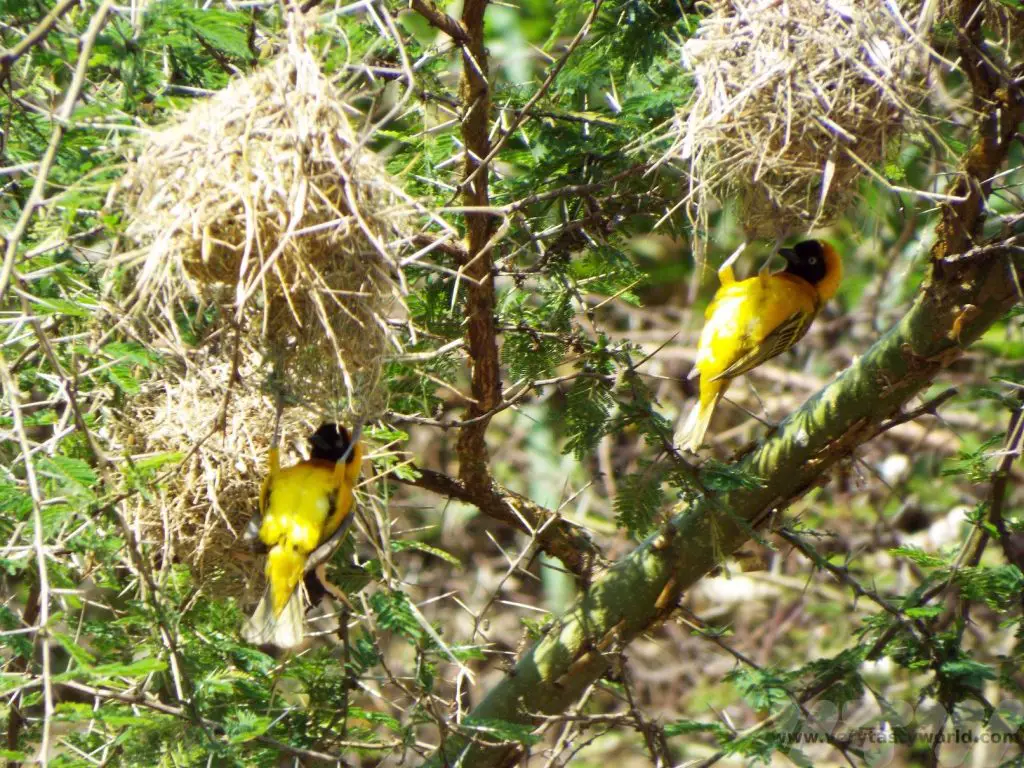
Just as we were about to have a little snooze, our guide got in touch and said that we should go out immediately. He’d received notification of a tree where some lionesses were having an afternoon nap themselves.
We rushed out and, sure enough, there were four tree climbing lions, lazing in the branches.
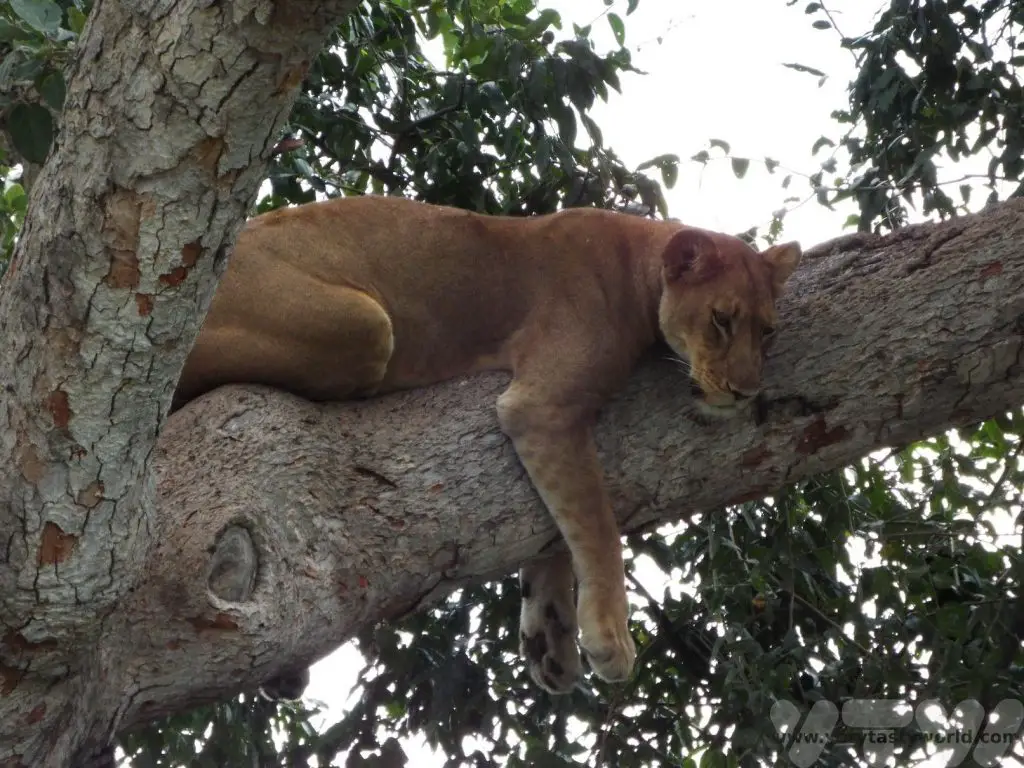
It was so exciting to get so close – just a few metres away from the tree. (Safely within our vehicle, I might add. We were excited but not stupid.)
One of the lionesses was looking extremely pregnant. It wouldn’t be long before some more cubs appear.
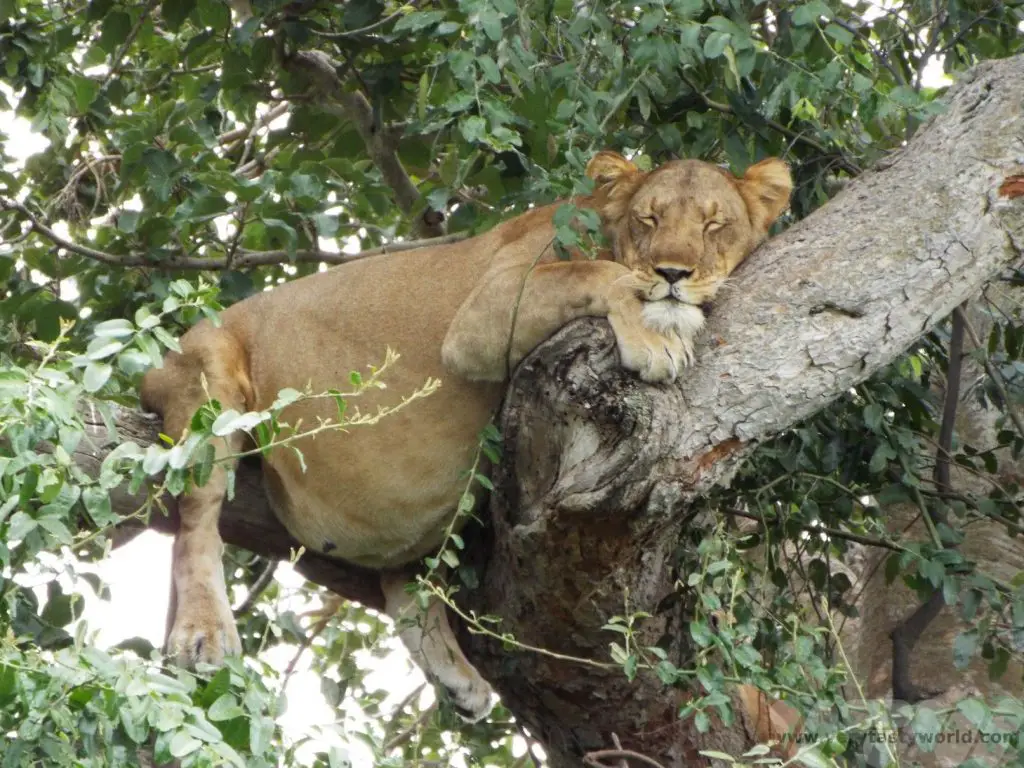
They looked so peaceful, they deserved their own simile: As relaxed as a lion in a tree, right?
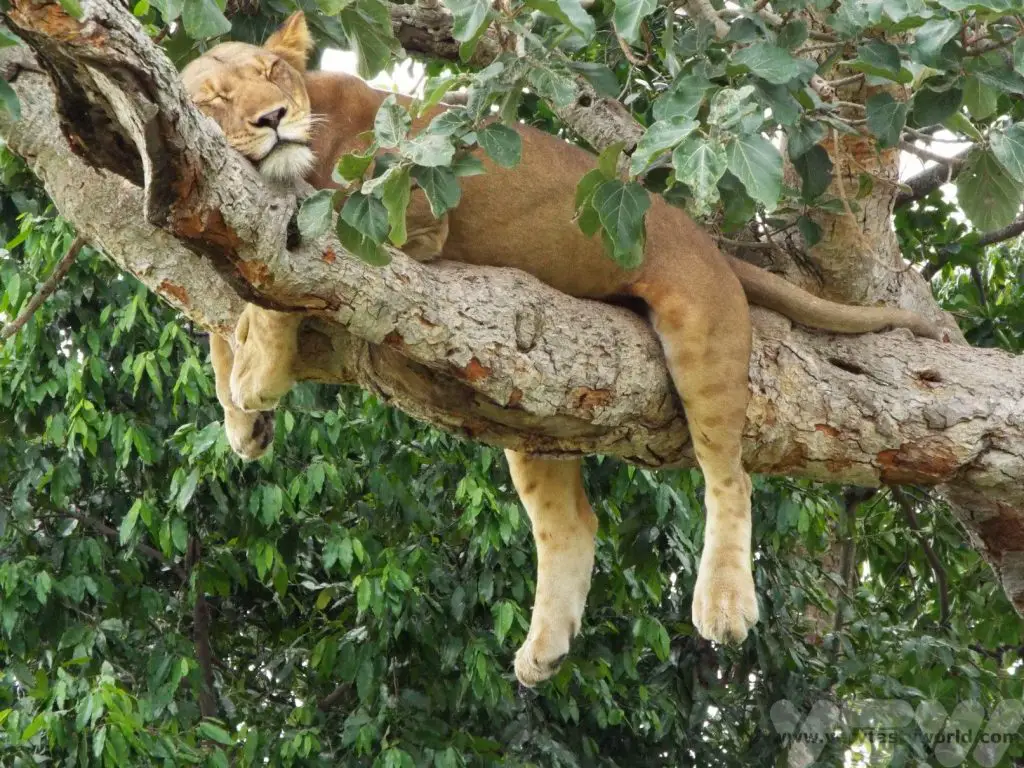
We spent ages just watching them. A really magical encounter. We were extremely lucky – they are not always there, sometimes they are a touch elusive, doing more typical lion activities like hunting.
It is easy to understand why QENP is one of the most popular parks in Uganda. While sightings can’t be guaranteed there is a good chance of seeing some remarkable wildlife.
Related Posts You May Enjoy

Costa Rica Wildlife Sanctuary – Caño Negro
Beautiful Costa Rica is well known for its amazing wildlife. This relatively small country in Central America has twenty-three national parks, three of which are UNESCO sites. We took a trip from the east coast to the west, visiting many wildlife parks. The tourism infrastructure is really well developed with easy transportation between locations and many tour operators that can offer trips to various attractions.
Please note that this post contains affiliate links. If you click through and decide to make a purchase we will make a small commission, at no extra cost to you, which will help towards the costs of running this site.
Having enjoyed Tortuguero, where we had been lucky to see a greenback turtle nesting, we moved onto La Fortuna de San Carlos, close the Arenal volcano, in the middle of the country. It is an ideal location to use as a base to explore this region and there are loads of exciting activities to undertake in the area, from caving to wildlife viewing.
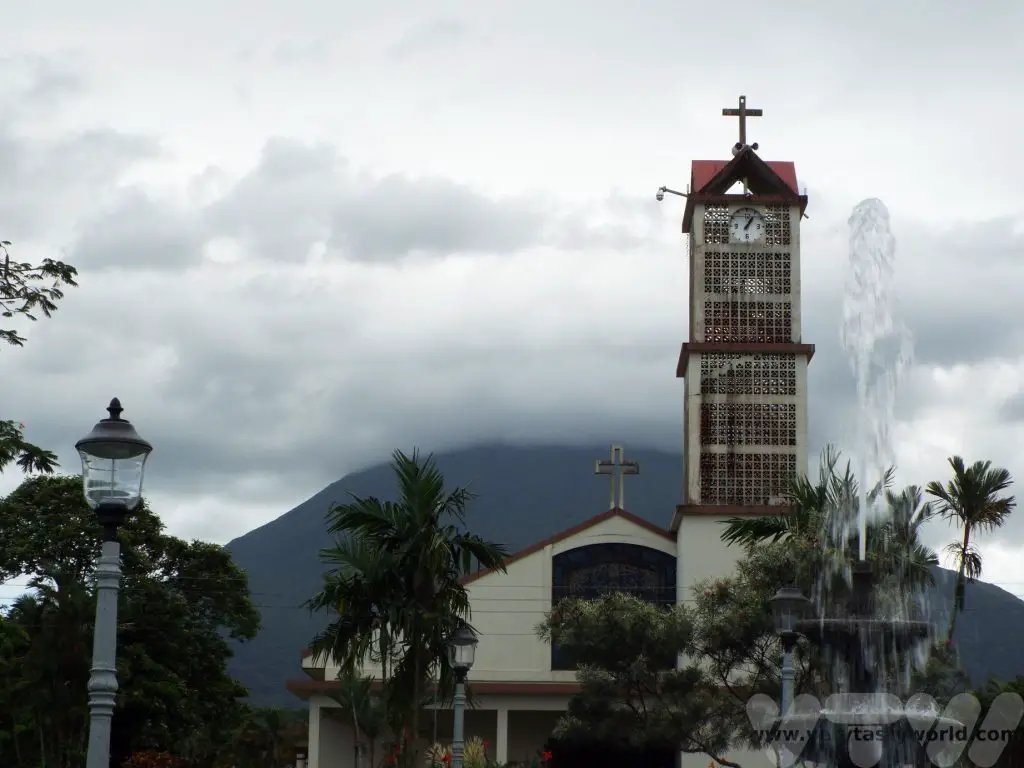
One of the trips we enjoyed was to the Caño Negro wildlife sanctuary. As with most tours in Costa Rica, there are companies in La Fortuna that can arrange the trip and will pick you up from your hotel or guest house.
It’ll take a couple of hours to get there from La Fortuna. Our guide was a naturalist who was not only knowledgeable about the local wildlife but was also really keen to tell us all about the fruit that grows in the region as well.
The Caño Negro, close to the Nicaraguan border, is a Costa Rica wildlife sanctuary which has the status of a national park, a Ramsar wetland of international importance, and one of the most biologically diverse areas in the country.
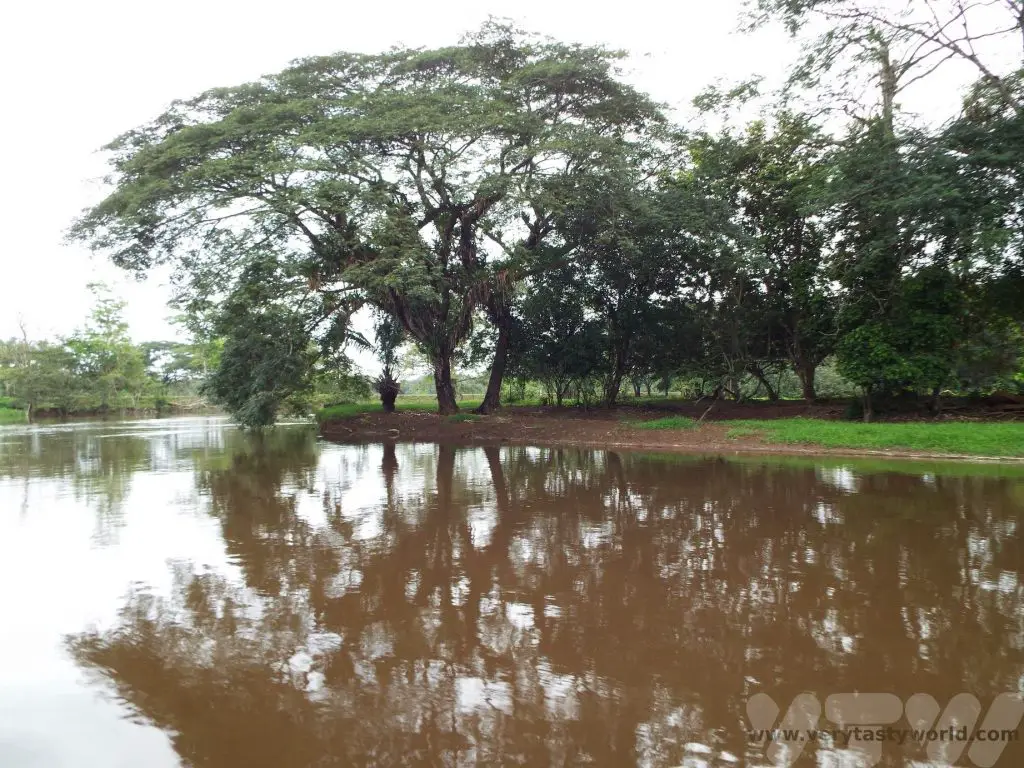
Boat Trip on the Río Frío
Once at the Caño Negro you can board a boat and enjoy a fascinating cruise up and down the Río Frío.
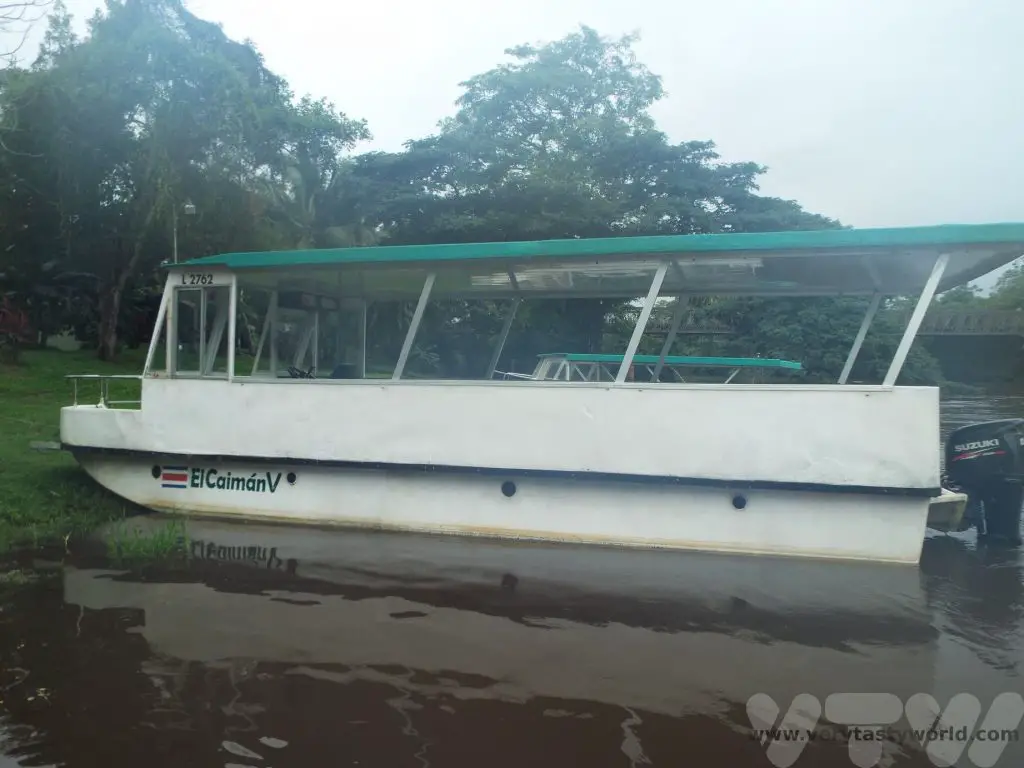
Wildlife viewings are pretty much guaranteed. Good guides will be able to spot plenty of birds, reptiles and mammals and, importantly, be able to point them out so that you can take pictures. Of course, you may not get to see the more elusive residents: the cougars, jaguars and ocelots, but there were plenty of monkeys, iguana, caiman, beautiful birds and, of course, sloths to see.
Howler monkeys are the loudest monkeys in the area. Their calls can travel 5km! They use the vocalisation to communicate with each other and establish territory.
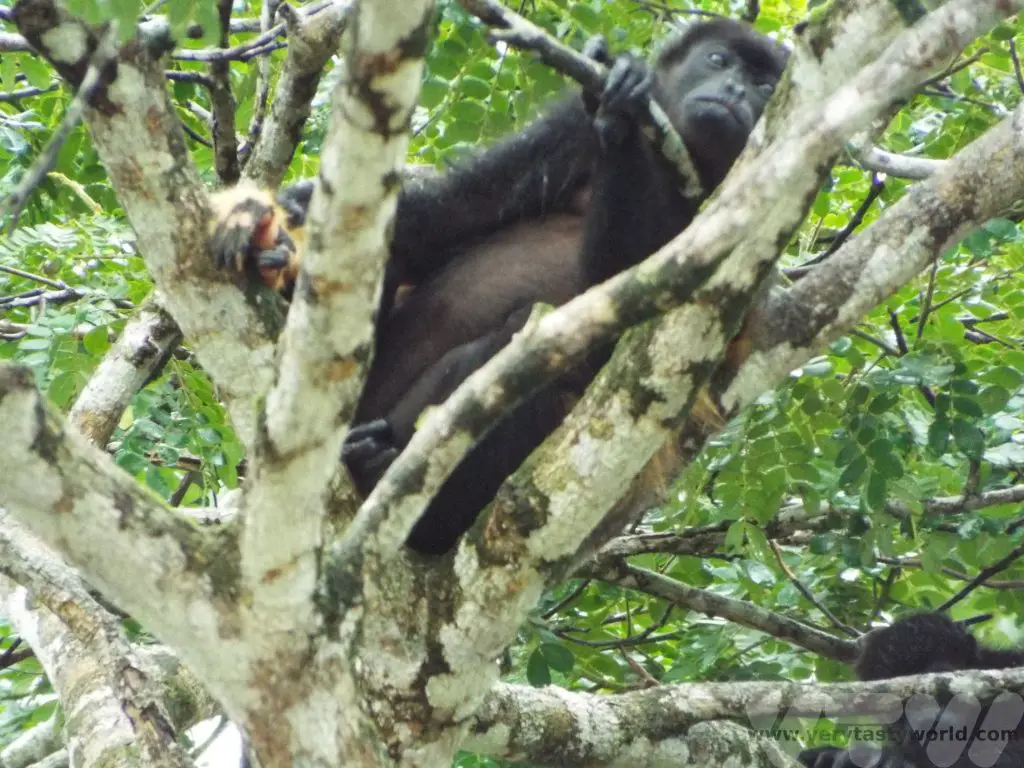
White faced monkeys, also known as capuchin monkeys, look adorable but are very naughty. They are regarded as the most intelligent of the monkeys in the region but can be quite vicious, fighting over the fruit in the trees and stealing from each other.
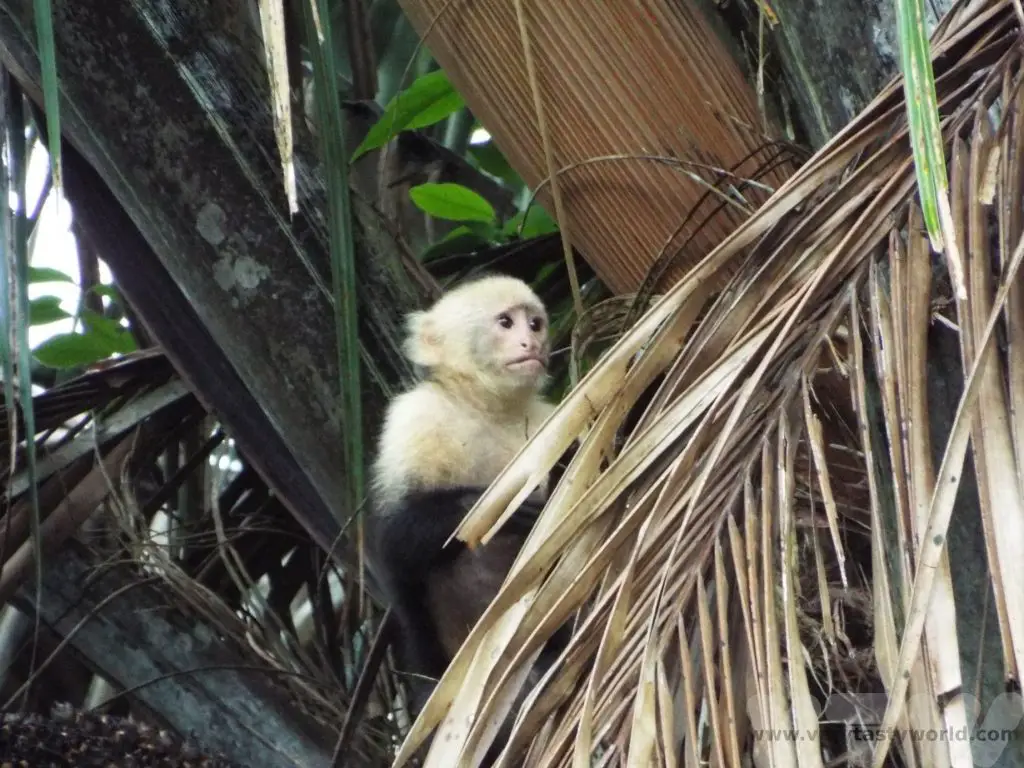
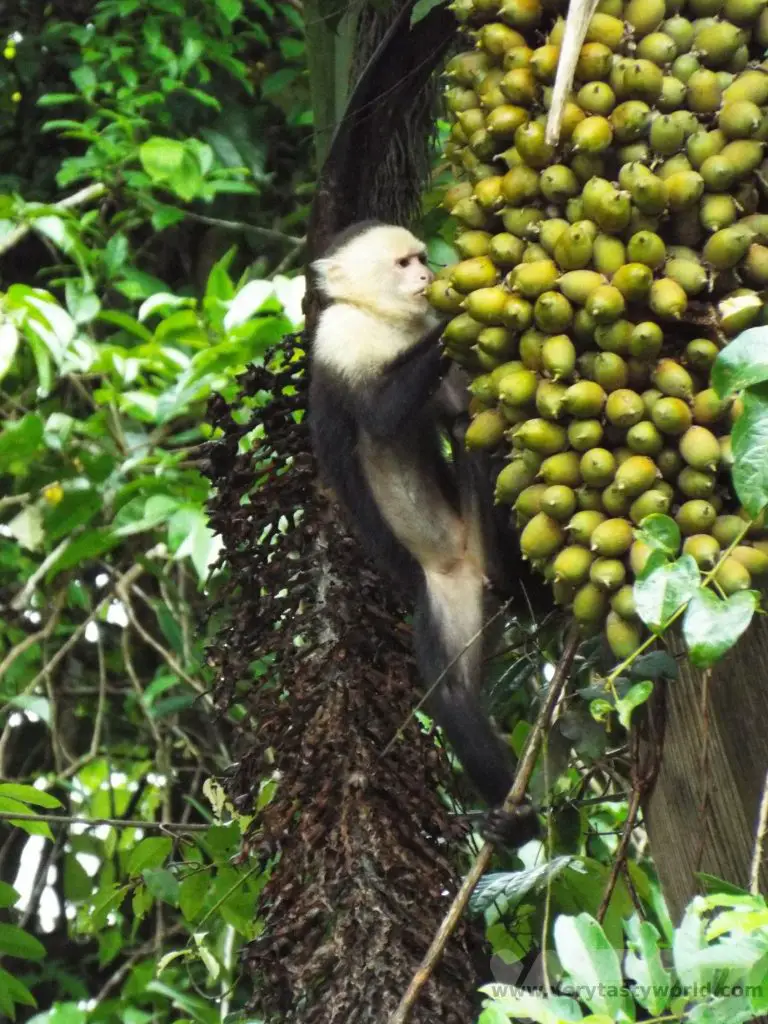
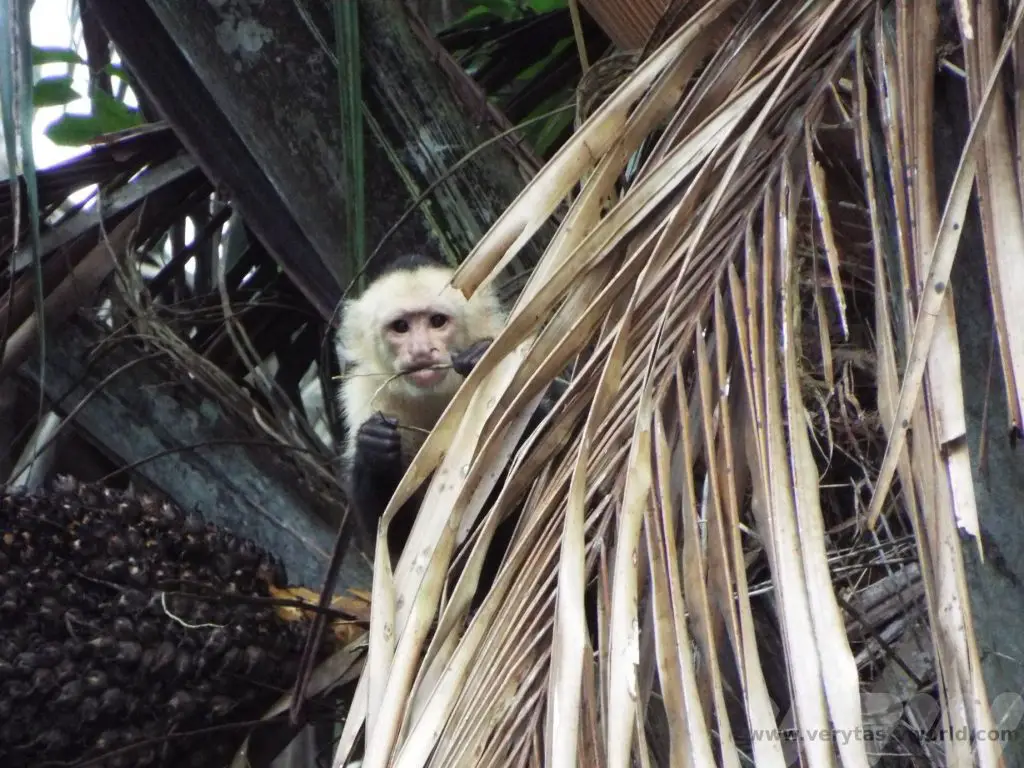
This beautiful kingfisher got lucky catching a fishy snack.
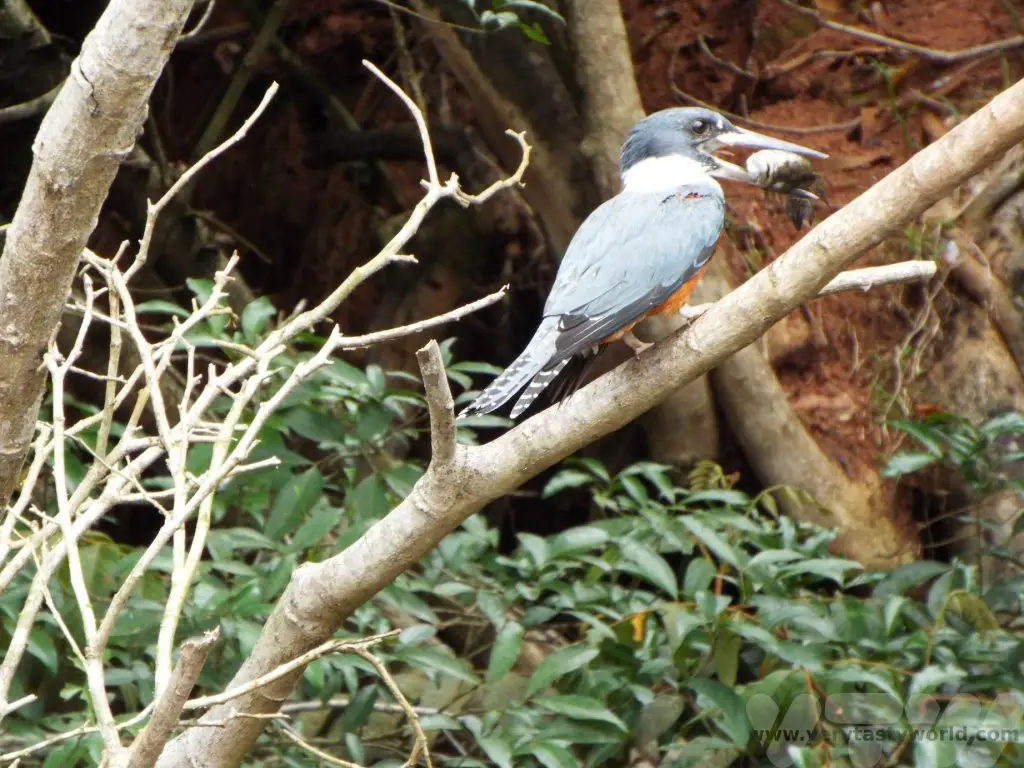
And this egret was having a good wade searching for food.
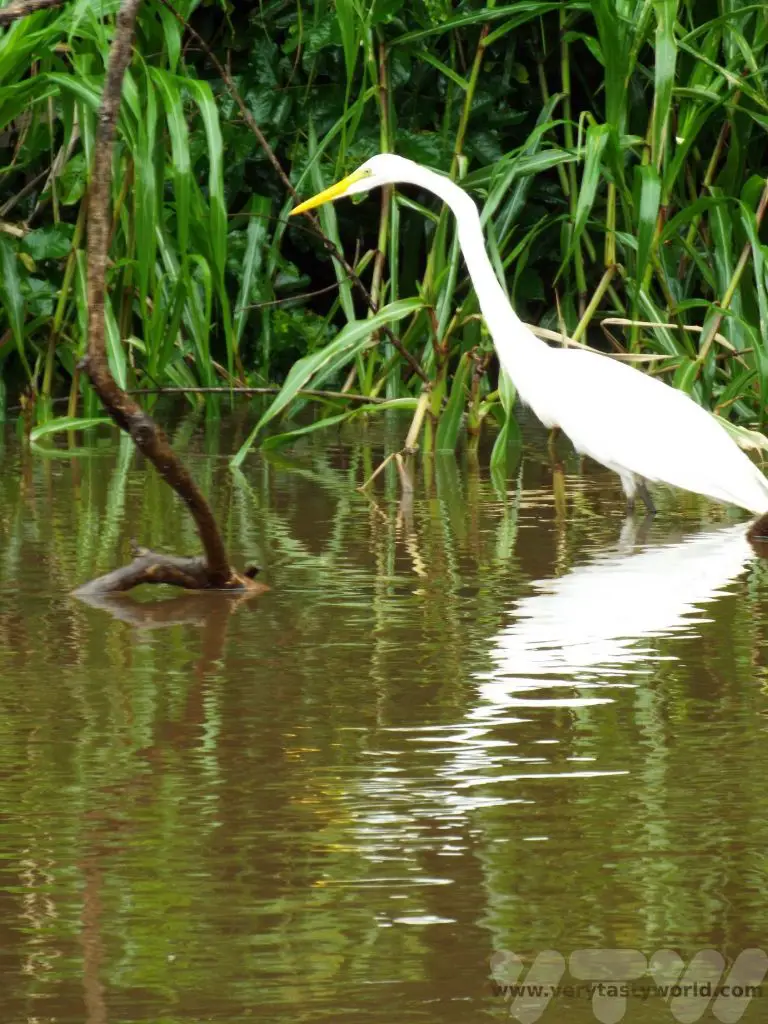
And there were plentiful iguana hanging around in trees and on the surrounding fields.
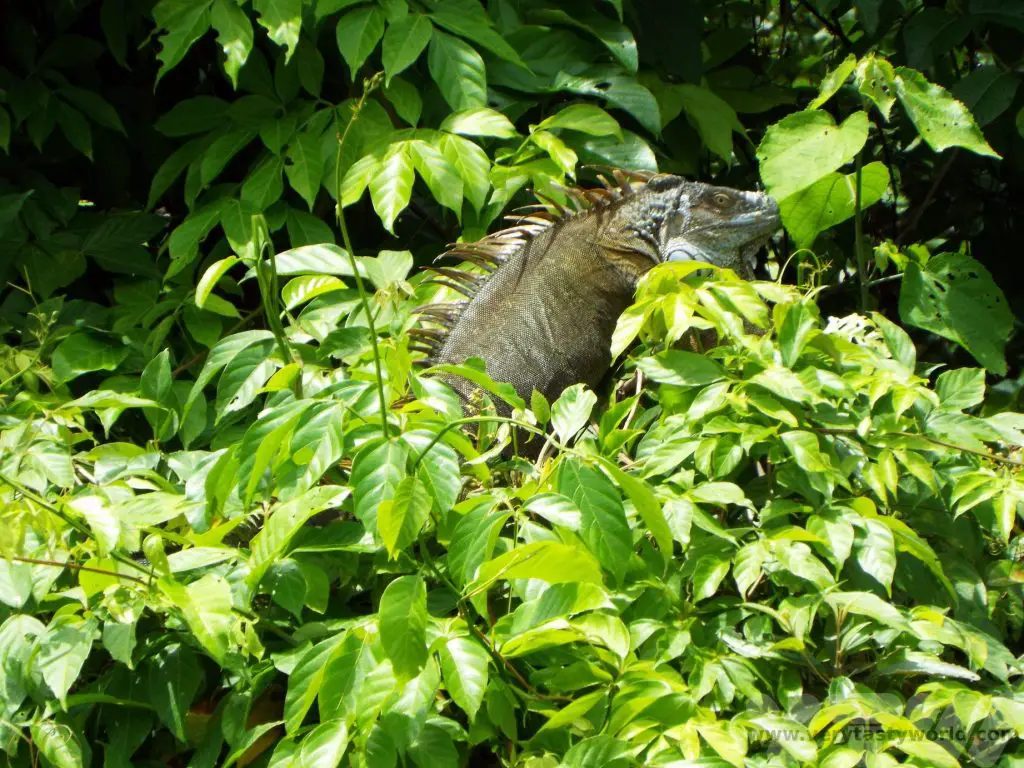
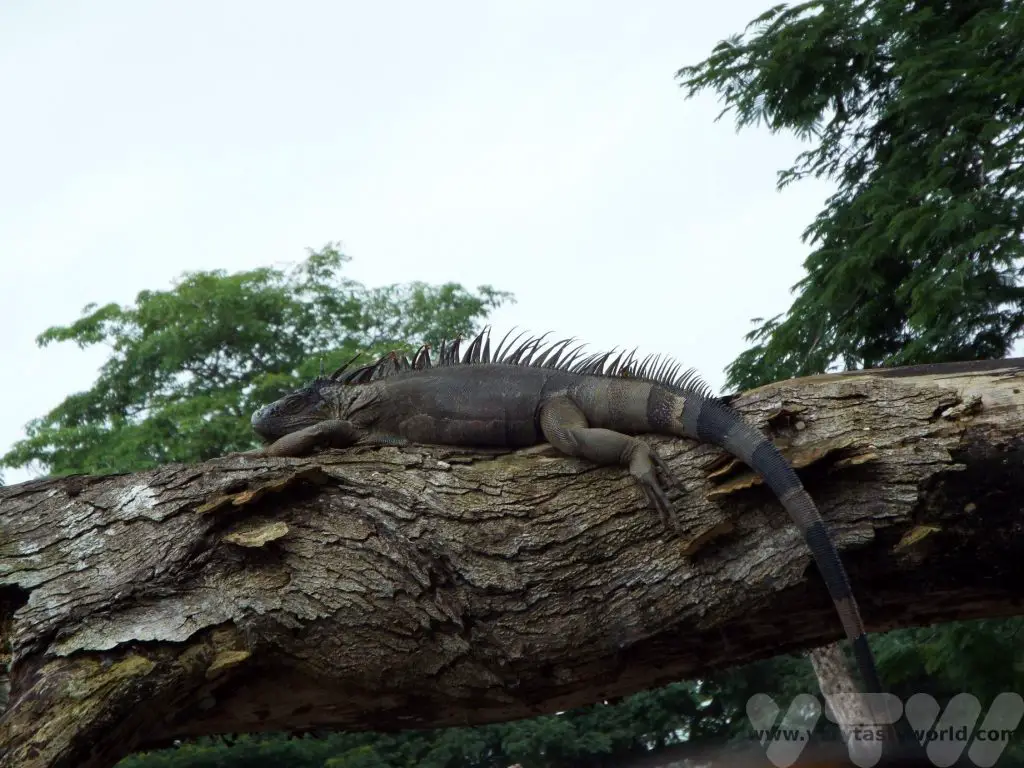
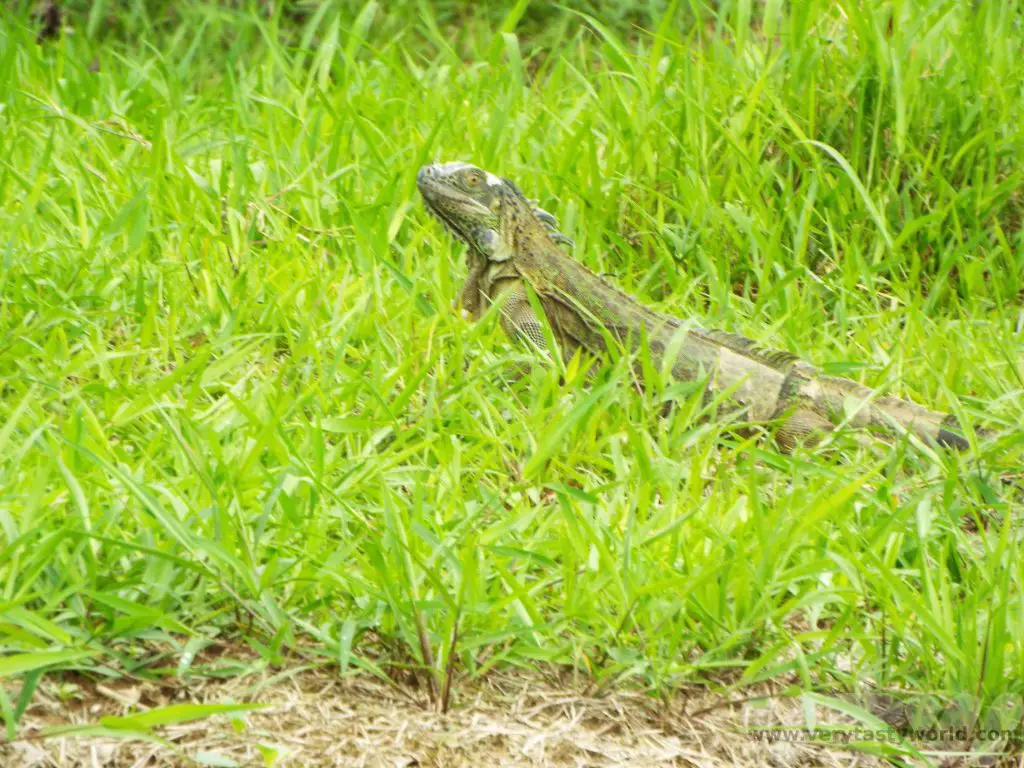
The anhinga is also known as the snake bird because when it swims in the water you can only see its elongated neck, which has the appearance of a snake gliding through the river.
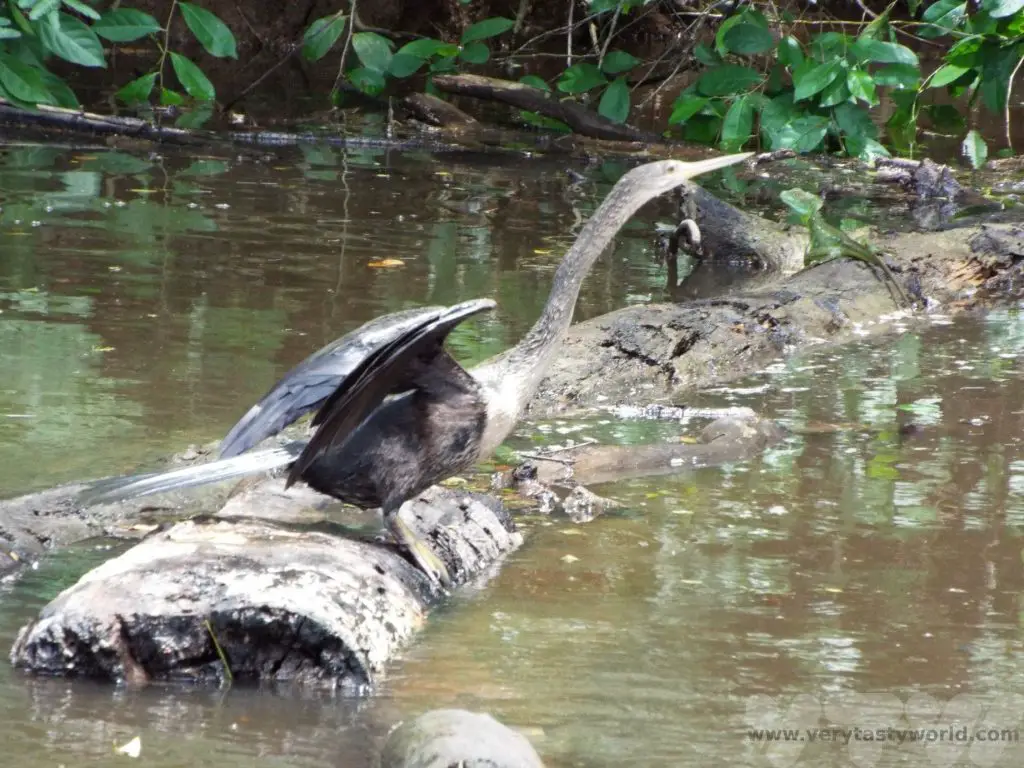
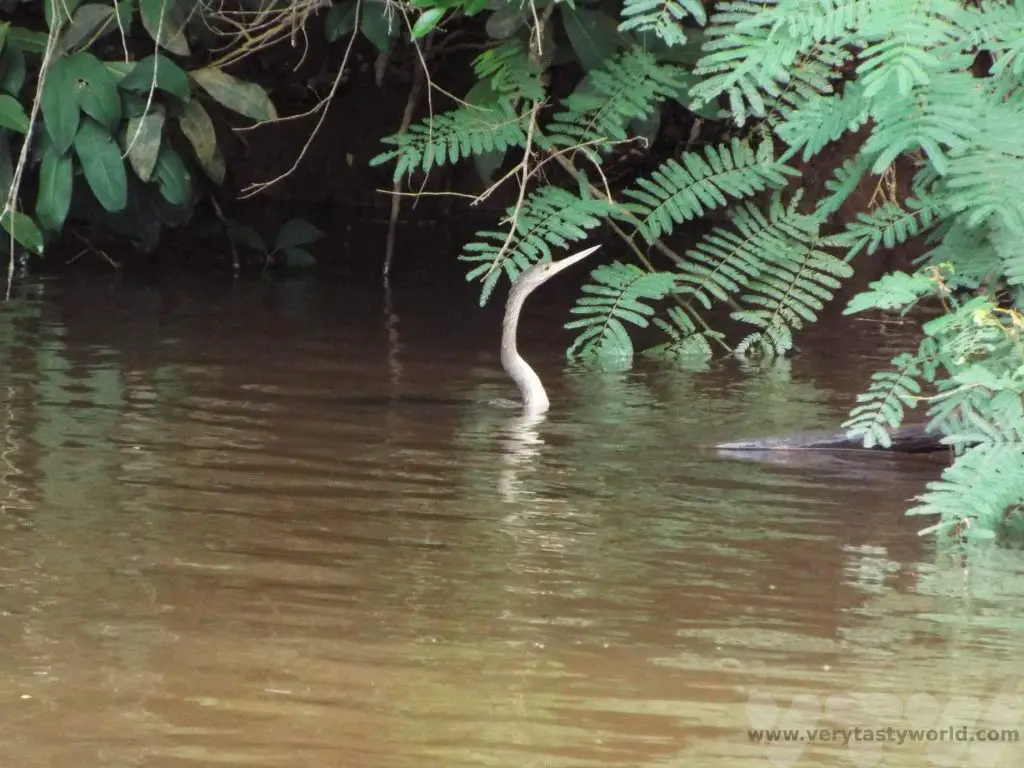
The Jesus lizard, or to give it its correct name, basilisk lizard, derives its moniker from being able to run across the water on its rear legs. It is possible for the species to do this because they have little scales on their back toes which form webs that trap water and air bubbles underneath them. If they run quickly enough the bubbles underneath these webs prevent them from sinking into the water. The lizards are able to swim if they go too slow.
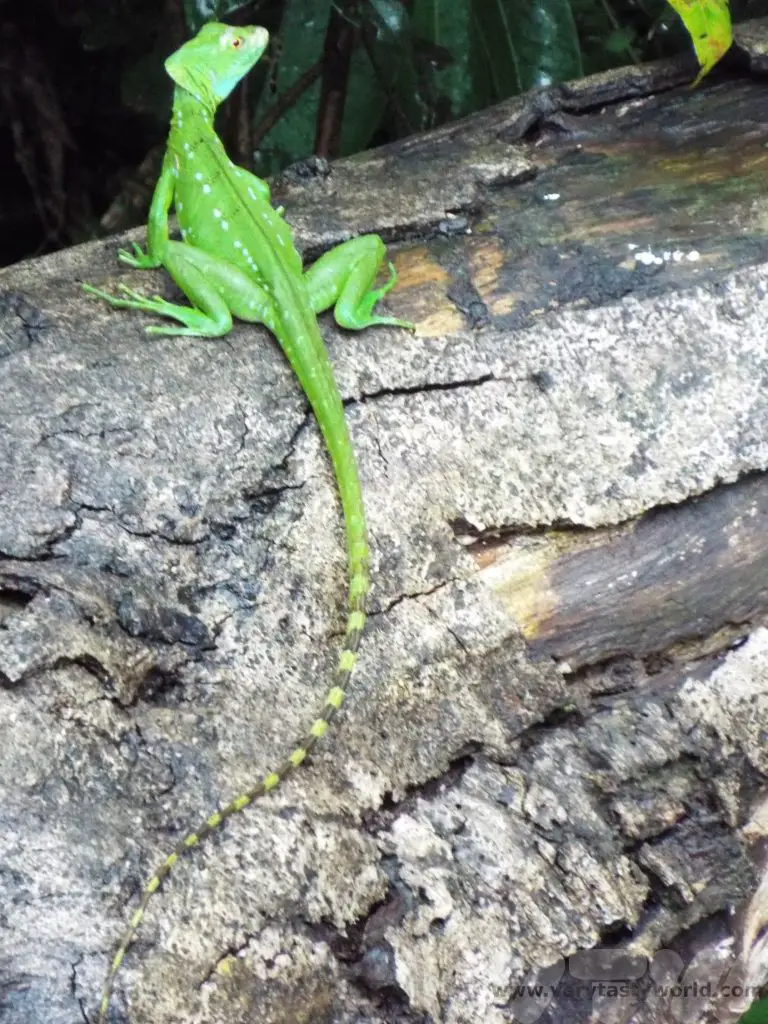
We sailed past a nonchalant caiman.
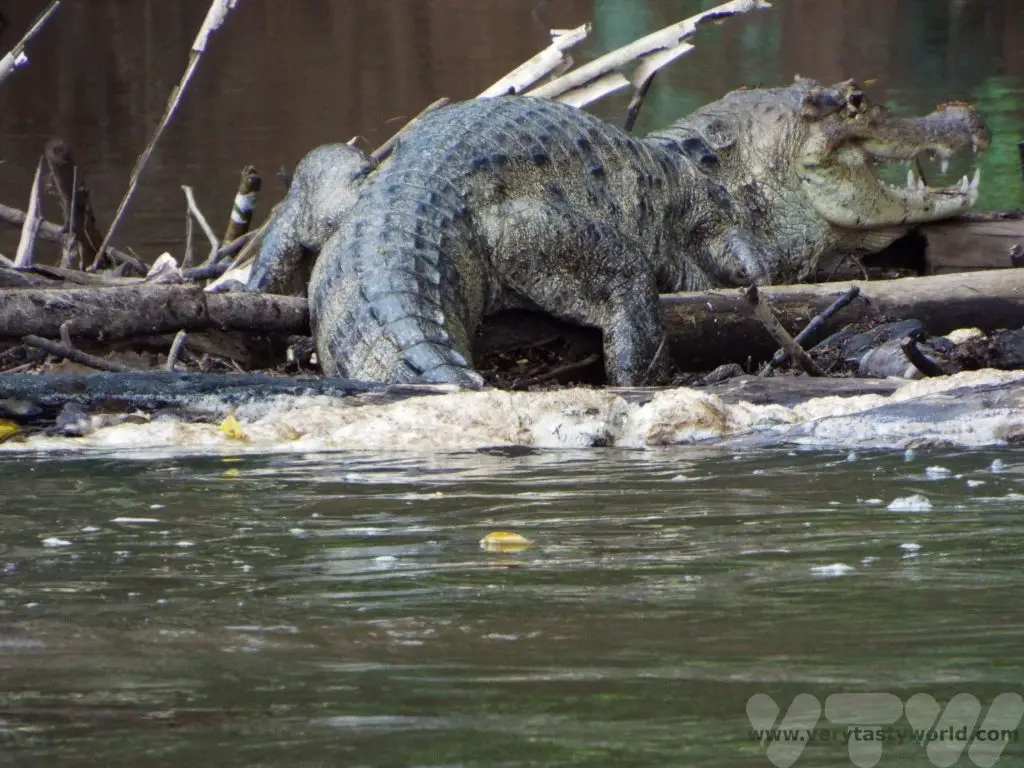
Sloths are probably the creature that most visitors to Costa Rica definitely want to see. On this excursion we saw a Two-Toed sloth, hanging around in the tree, which is what sloths do best.
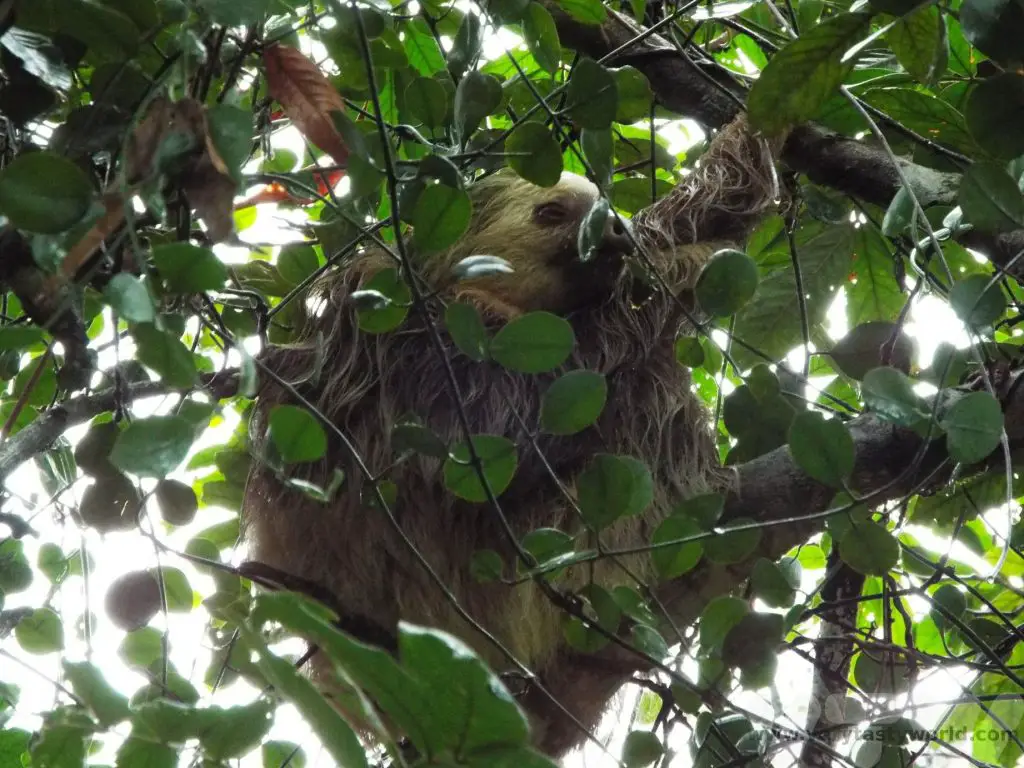
There are two species of sloth in Costa Rica: Two-Toed and Three-Toed. (We did see the Three-Toed Sloth, but on the Pacific coast, not on this river trip.) They are absolutely fascinating creatures – they appear to be incredibly lazy but this is largely because they have a very slow metabolism and most of their time is spent in the tree canopies. They have a multi-chambered stomach that is capable of digesting tough leaves but the digestion process takes a very long time. Once they are up a tree they will stay there for several days, only coming down for a poo, which happens once week. Pretty much everything else happens in the trees – eating, sleeping, mating, even giving birth.
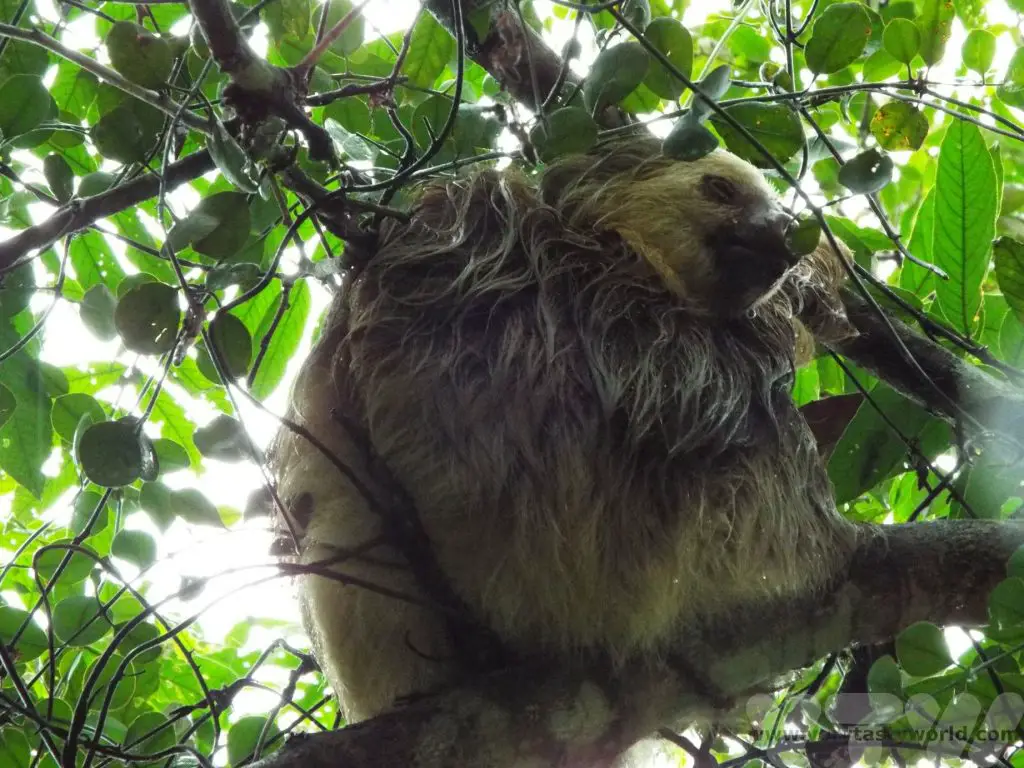
They are often covered in green algae, with which they have a symbiotic relationship, the algae providing them with some nutrition. In turn, the sloth’s fur, which retains water well, is an idea environment for the algae to thrive. It also helps provide camouflage – the sloth’s natural predators include ocelot and jaguar.
The species have been around for 65 million years, so there’s probably something to be said for taking things easy in life!
A Downpour
The river trip was hugely enjoyable but as we were travelling in the mid-season in June/July (it is rainy but not hurricane weather) we did experience something of a downpour. When it rains in Costa Rica, it rains! (Some areas we visited receive around 5000mm annually.) The showers at this time of year are extremely heavy but usually short-lived, lasting no more than twenty minutes to half an hour. The boat had a roof and our captain kindly rescued some kayakers who were enjoying their gentle paddle on the river until they got a complete soaking! They were hugely relieved when we picked them up and they stepped aboard looking somewhat bedraggled. We always recommend bringing wet weather gear if travelling at this time of year.
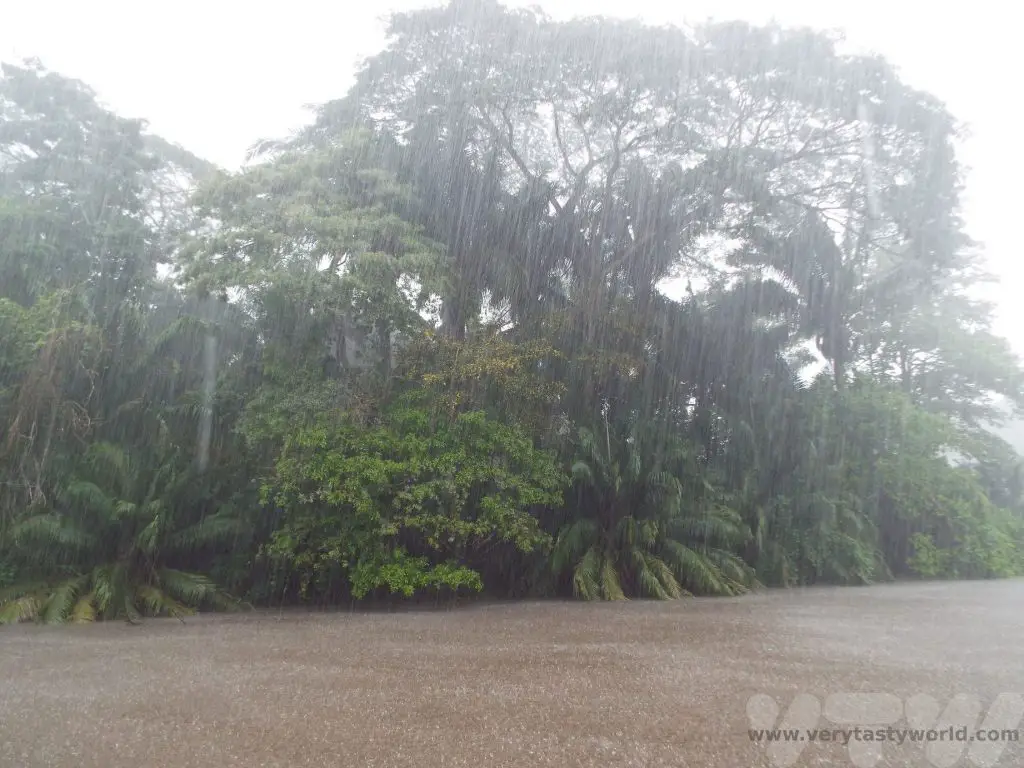
Feeling Fruity
After the boat trip through the wildlife sanctuary, lunch was provided. It was quite common at the end of most excursions we enjoyed in the country. We were treated to a fruit feast.
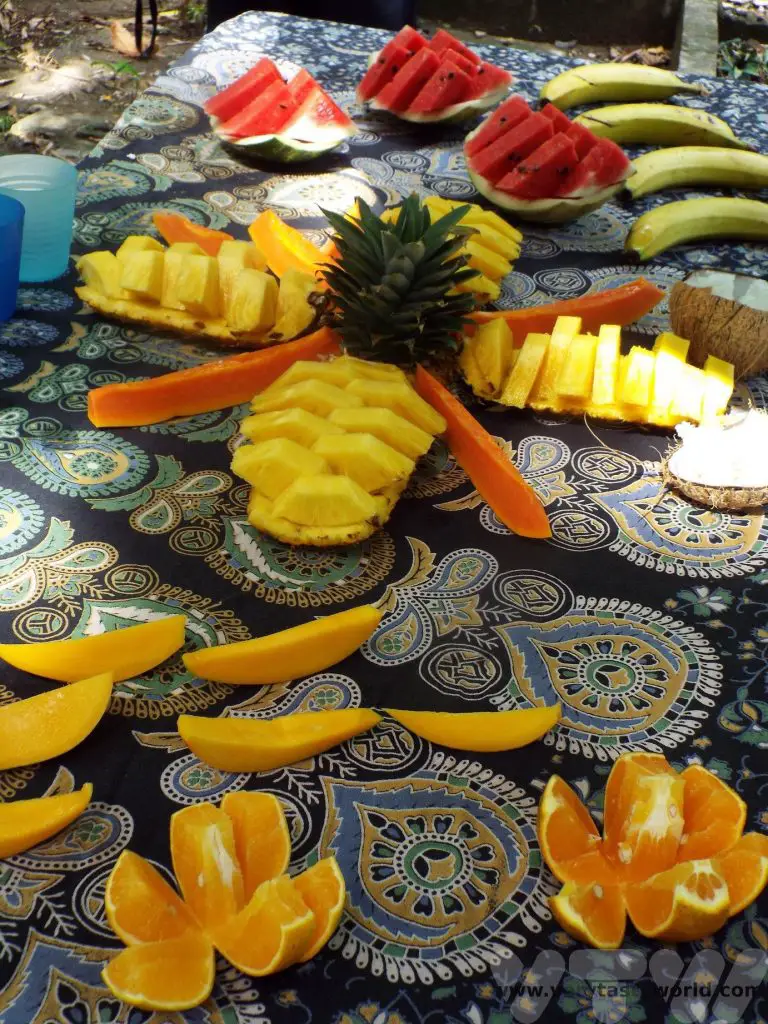
One of the wonderful things about Costa Rica is the utter deliciousness of the fruit. Around the Arenal Volcano area the soil is incredibly fertile and on our way to Caño Negro we saw vast plantations growing all sorts of fruit. In fact, the tour guide stopped the minibus a couple of times to buy some fruit from local sellers, so that he could offer us a taste. He also provided a running commentary throughout the journey telling us about the fruit industry in Costa Rica.
The pineapples were a revelation. Even the freshest pineapples we’ve ever eaten in the UK (often from Costa Rica!) were nothing compared to the organic local fruit. Most pineapples that are grown for export are treated chemically where they are stored (they can last up to a year) and ripened after they have arrived at their destination. It is such a shame that so many pineapples are grown this way – it isn’t good for the environment and the fruit’s flavour isn’t as good as it could be. Compare that to an organic pineapple and the taste is completely different. The local fruit had a really rich vibrant flavour, both sweet and tart.
The pineapple is actually a flowering plant. Only one flower grows each year per plant and it is only possible to gain a pineapple in three successive years. The first year’s is the biggest and these are the ones that are usually exported overseas. The second year’s pineapple is smaller and would generally be used for the local market or taken to a processing factory where it would likely end up in a tin. The third year’s fruit will be very small and will become juice.
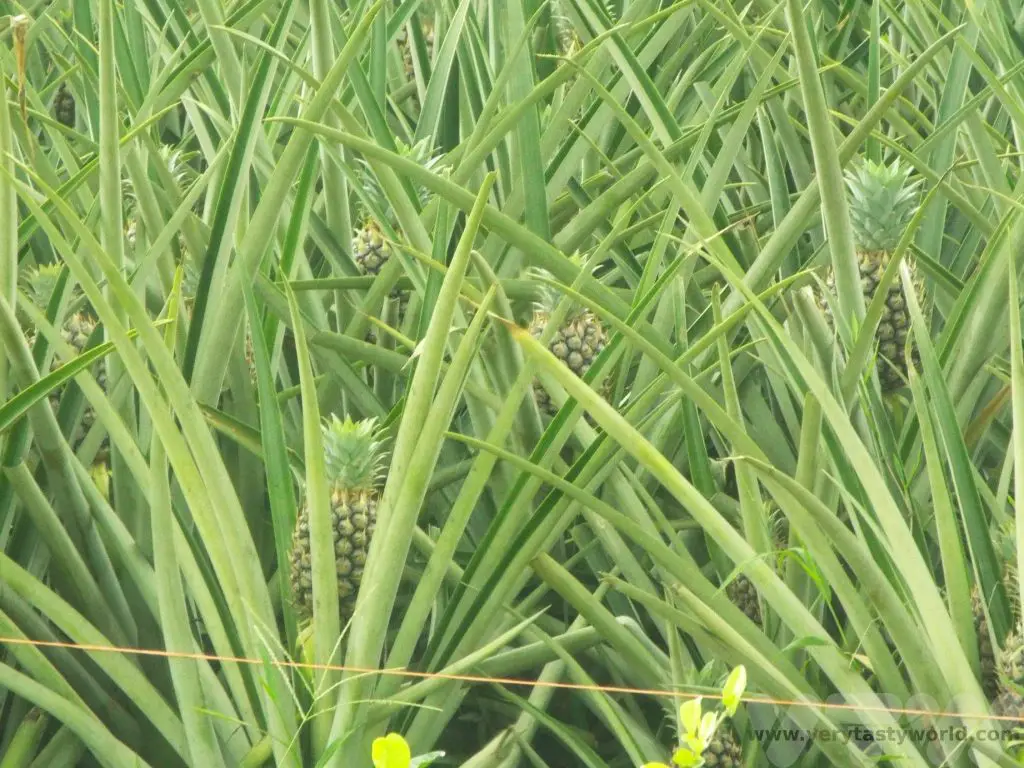
There’s a perception in many western countries that oranges should actually be orange. But many oranges aren’t as luridly orange as those classic fruit from Seville. The oranges in Costa Rica might not look the part but taste just fine. Bananas are another fruity staple of Costa Rica and plantations can be seen all over the country.
Many of the fruits grown in the country are familiar as they are exported around the world. However, there are some more unusual offerings which we were delighted to discover. Rambutan, also known as Mamon Chino, which apparently translates to Chinese Sucker, is a bizarre looking tropical fruit. You have to peel the pretty and colourful soft spikes to reveal the clear coloured flesh. They look similar to grapes or lychees and have a comparable texture although the flavour is very different, sweet and slightly sour, and nowhere near as perfumed as a lychee. There’s a seed inside that you need to be aware of – don’t bite too hard!
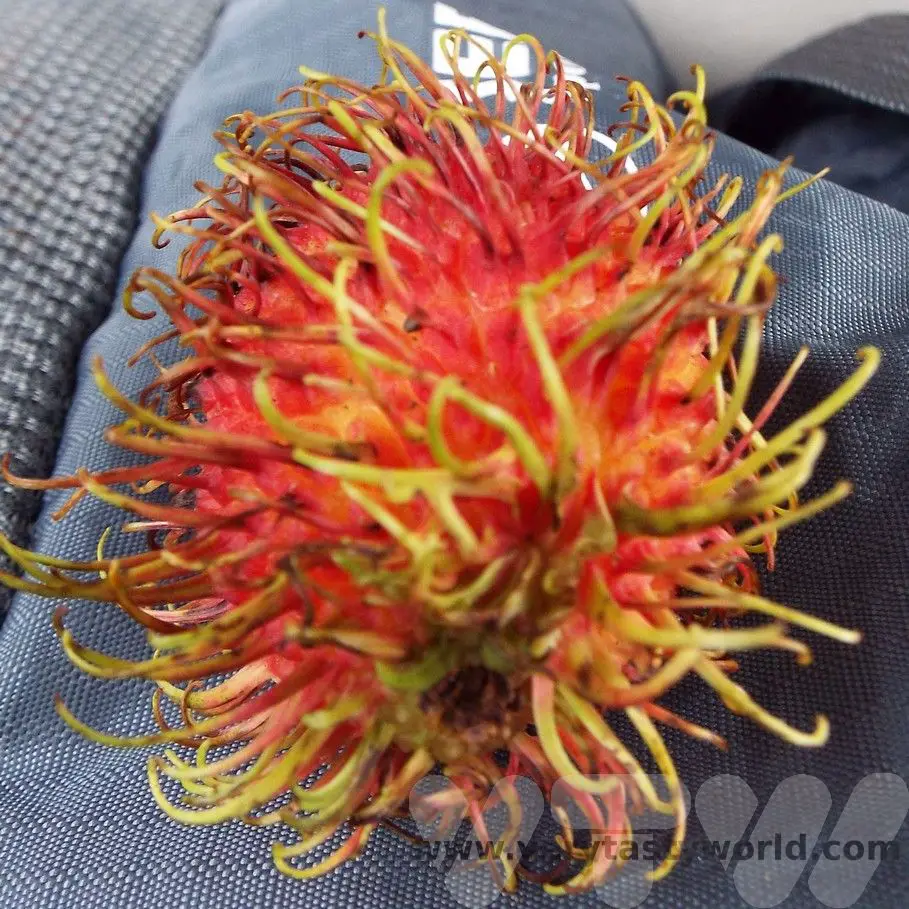
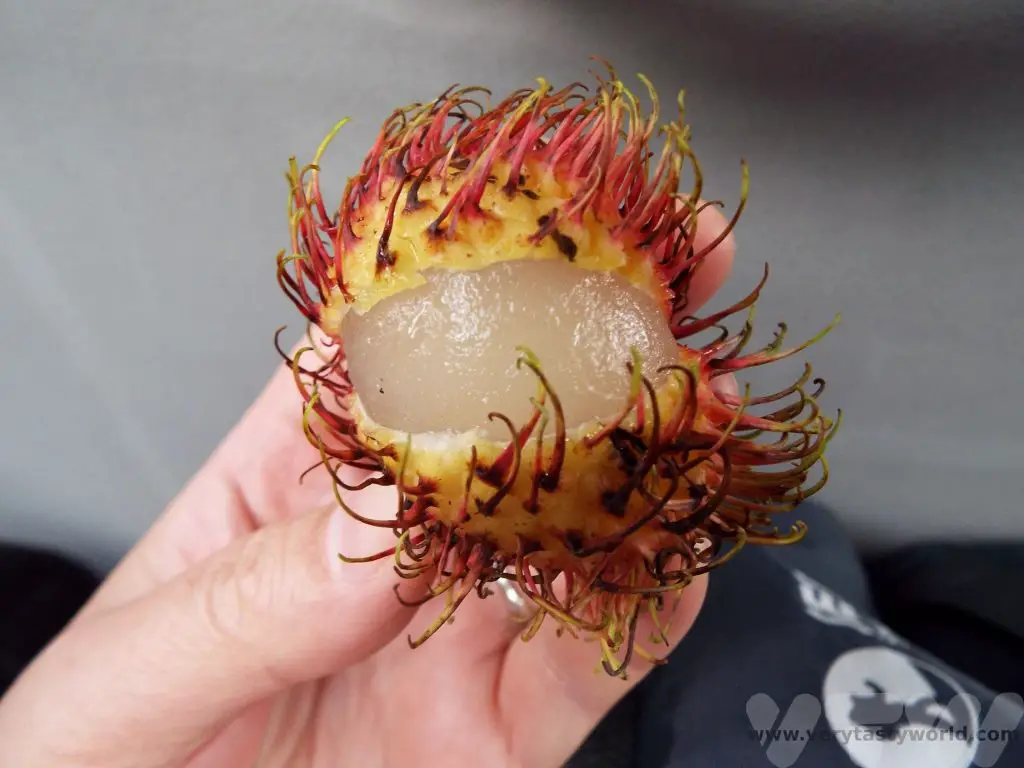
Noni is smelly and tastes bitter but apparently has health benefits. It’s not a fruit you would eat for pleasure. Some people mix it with other fruits in smoothies to disguise its flavour.
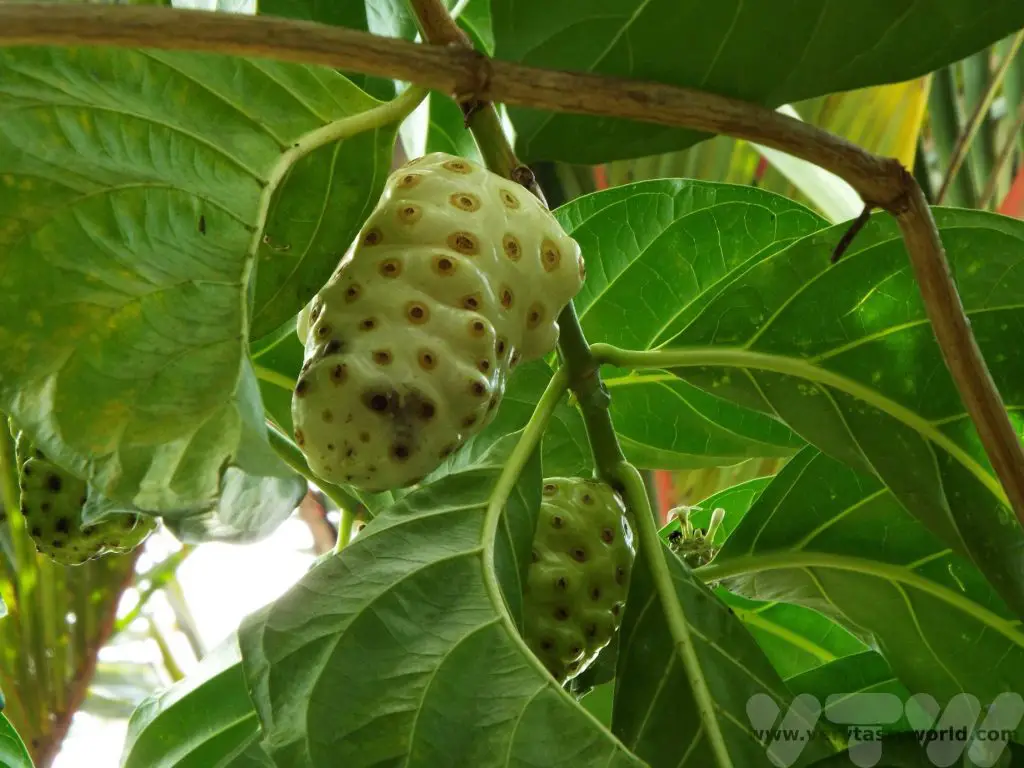
In Costa Rica you are guaranteed to enjoy at least ten of your ‘five a day’.
Related Posts You May Enjoy

- Best Time To Visit Machu Picchu 2024 Update
- A 2 Week Patagonia Itinerary
- Day of the Dead in Campeche
- A Galapagos Land Based Itinerary
- RECIPE: How to Make Costa Rica’s Gallo Pinto
- A Tasty Puebla Food Tour
- Costa Rica Wildlife Sanctuary – Caño Negro
- Visit Torres del Paine National Park in Patagonia
- Atacama Desert Itinerary
Kibale National Park Chimpanzee Trekking
Uganda is one of the best places in the world to view wildlife. From the Murchison Falls park, through Kibale National Park, the Queen Elizabeth Park, and into Bwindi Impenetrable, where the extremely endangered mountain gorillas reside, there are opportunities to get really close to all sorts of amazing wildlife all over the country. While it’s very possible to encounter all the ‘big five’ game animals Uganda is also an exceptional location for encounters with large primates.
Kibale National Park is one of the best places to go chimpanzee trekking. Kibale is located in western Uganda, around 340 km from Kampala. It would take around 5-6 hours to drive there, depending on road conditions.
The opportunity to spend time in the forest following the local primates is a marvellous experience. You need a permit to enter the park – the tariffs are published on the Uganda Wildlife Authority website.
Kibale National Park – The Briefing
On arrival at the park you receive a briefing and are then split into small groups. Each group comprises six people who are accompanied by two guides. The chimps are wild but habituated, that is, they are comfortable in the presence of humans. It is a privilege to be able to track them, so it is important to pay close attention to the briefing and to follow the guides’ instructions at all times.
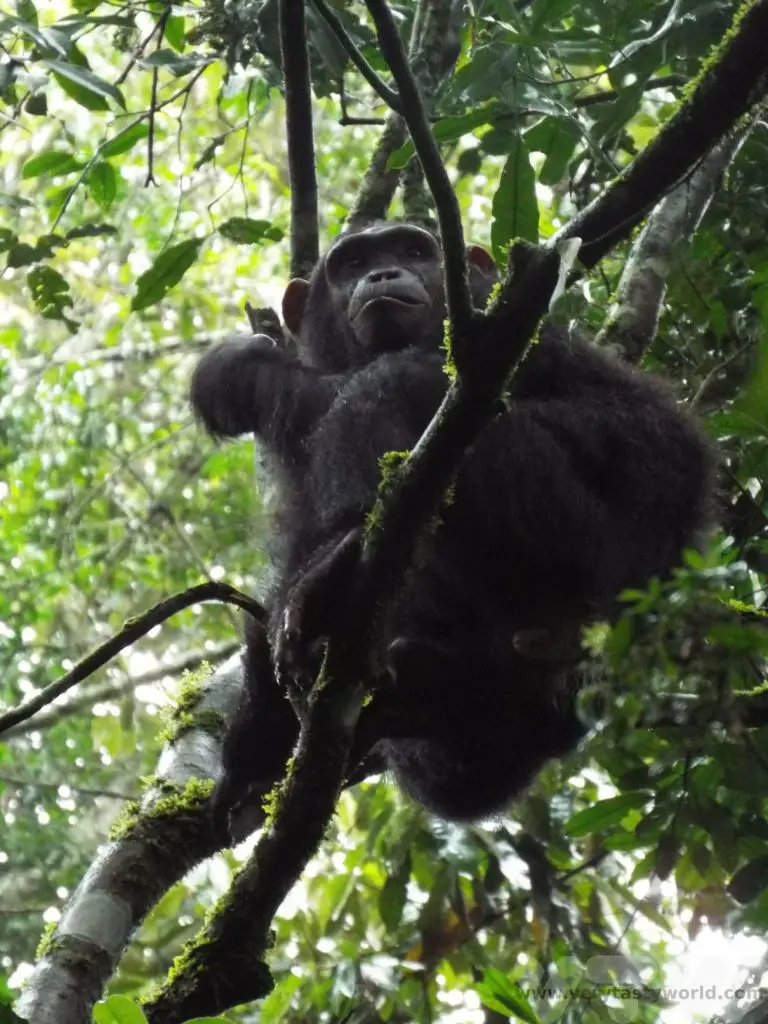
It is essential not to visit if you are feeling unwell. We share about 98% of our DNA with these amazing primates so passing on a virus or disease could wipe out the population.
There are a number of rules to abide by to ensure the safety and welfare of both the chimps and the humans while tracking: these include staying with the guide, keeping your distance from the chimps (unless they decide to walk past you) and – our favourite – don’t imitate the chimps’ vocal sounds – you don’t know what you might be saying!
Chimpanzee Trekking
We arrived in the morning and many of the chimps had yet to wake up. So the first part of the trek involved looking up. Sure enough, the chimpanzees were in the trees. They were eating breakfast – their diet mainly consists of fruit, supplemented by insects such as termites and leaves. The forest in Kibale has an abundance of fig trees so figs are usually the breakfast of choice.
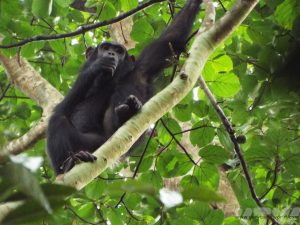
Walking though the forest is relatively easy – unlike Bwindi Impenetrable, the terrain is pretty flat and the paths through the forest easy to navigate. Sturdy shoes are recommended and waterproof gear is useful if you are trekking during the rainy season.
Each group tracks the chimps through the park, following the guides’ instructions in order to keep both the chimps and the visitors safe. It’s advisable to be reasonably fit as you may need to move pretty quickly to follow the chimps.
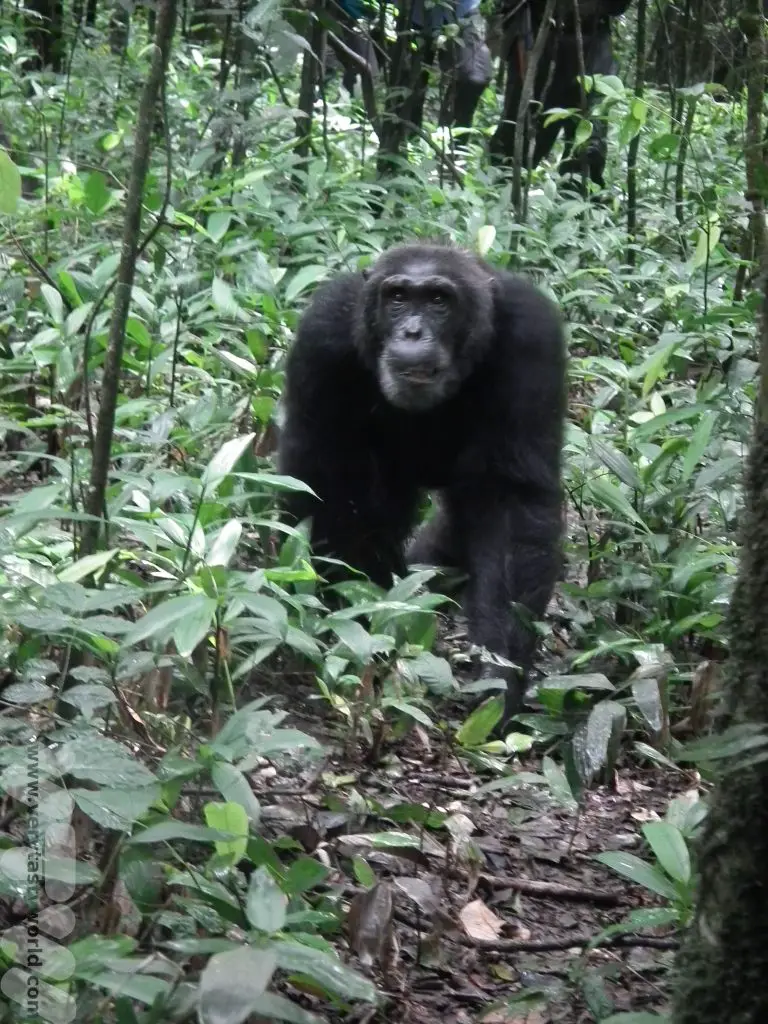
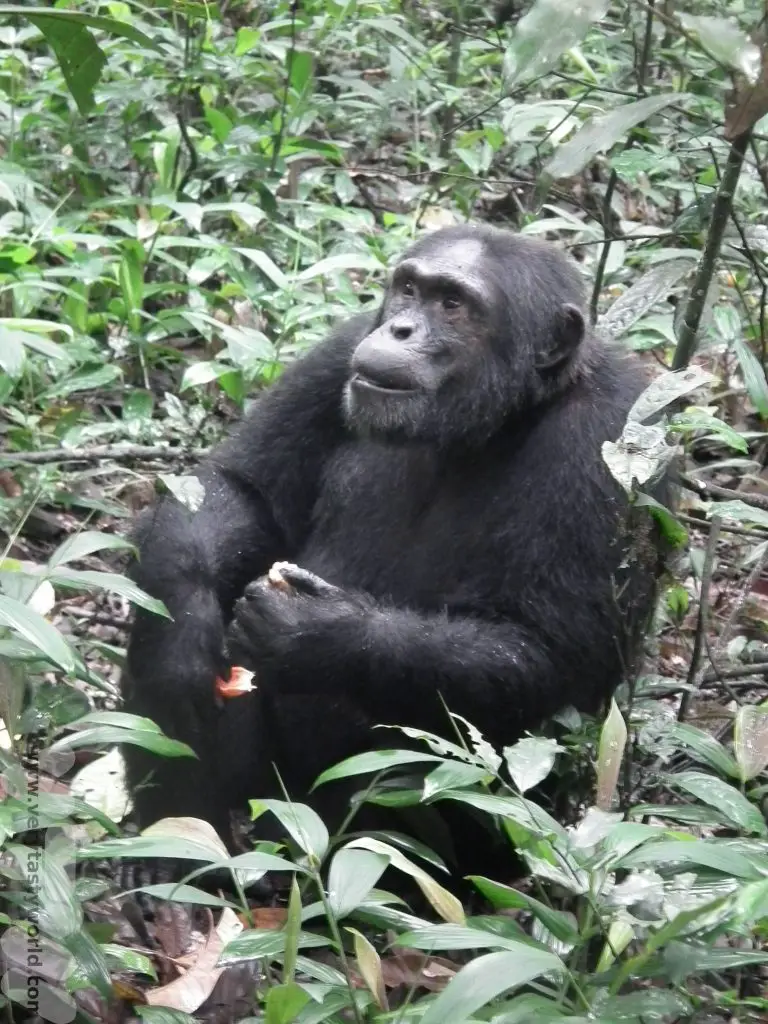
As the day progresses some of the chimps will come down from the trees and wander through the forest. It’s okay to follow them – just stay with the guide and keep a respectful distance.
One chimp climbed down from his tree and decided that he was going for a walk. He just strolled by. The rangers told us that you are lucky if you get within 10 metres of a chimp. This chimp passed by within 10 centimetres! He was totally nonchalant as he walked on. I could barely contain my excitement!
Other Activities In Kibale National Park
While in Kibale, it’s also possible to visit the local communities. The Bigodi community offer the chance to see how the local people live and work. We visited various craftspeople, including a brewer who made his own banana beer, weavers, a local shaman and a coffee maker .
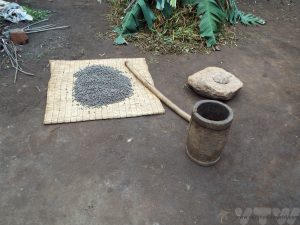
The local coffee maker makes a very fine brew. The coffee berries have been dried in the sun…
… they are then pounded to remove the husks
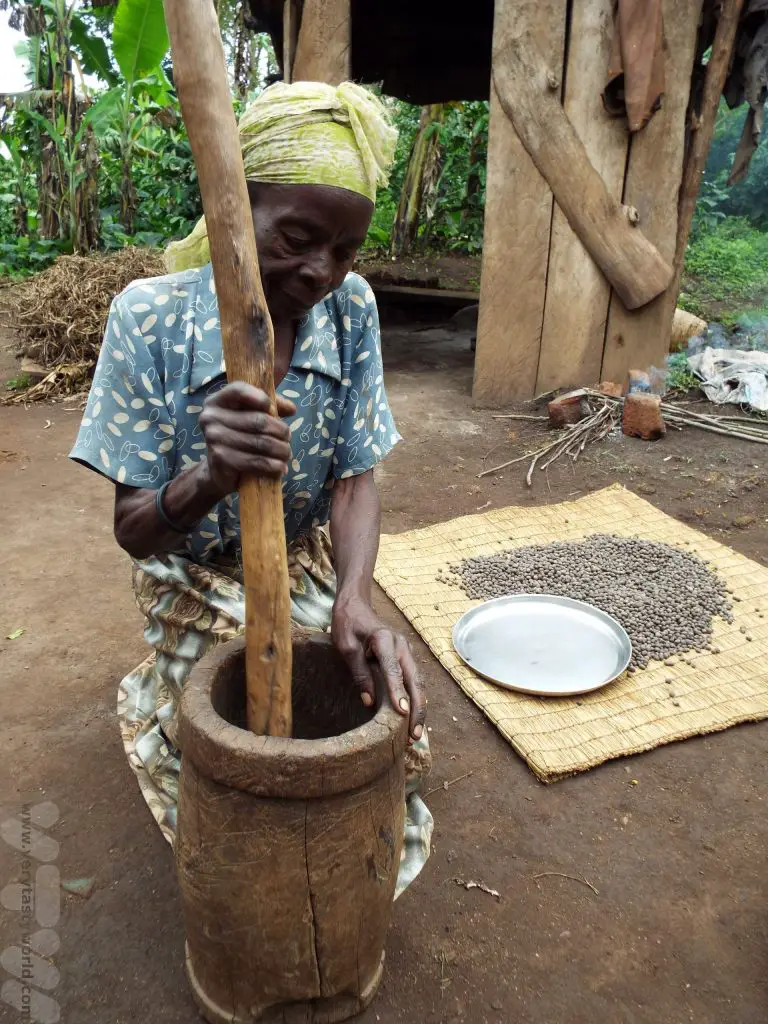
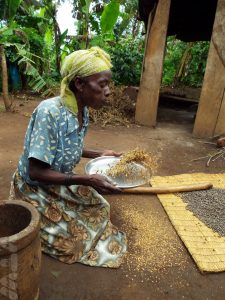
It’s a fine art to blow away the husks from the beans.
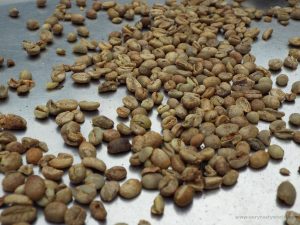
Then it’s time to light the fire and roast the beans .
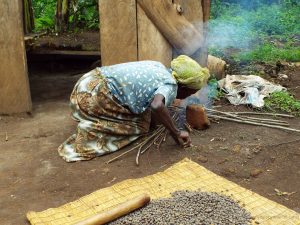
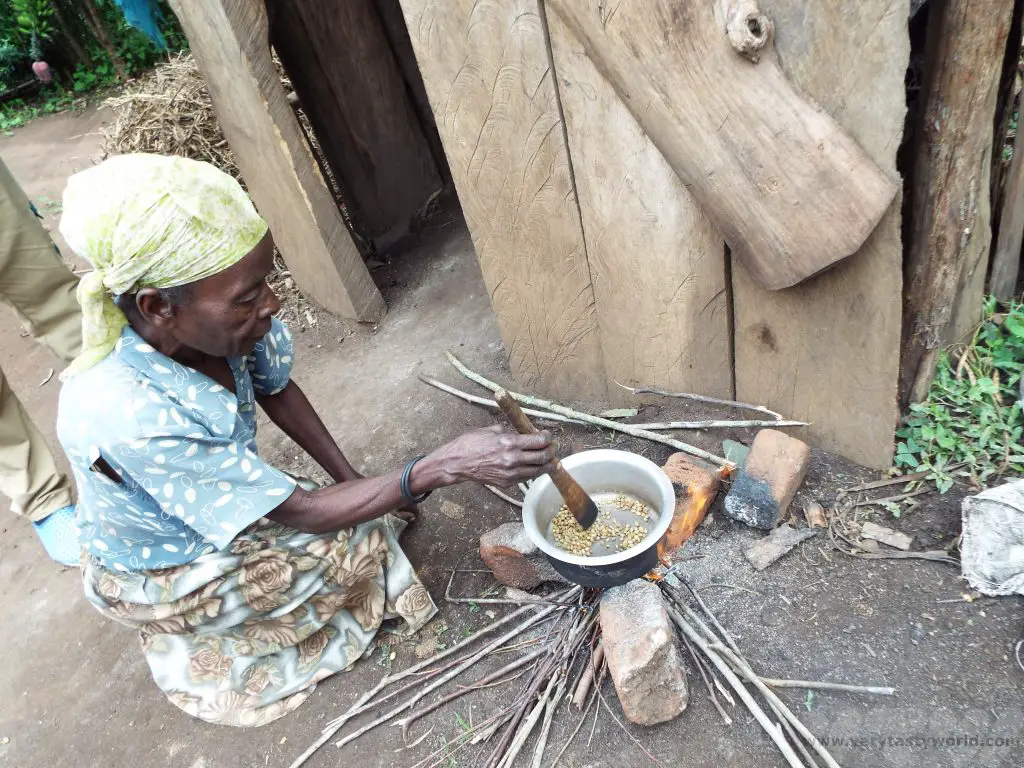
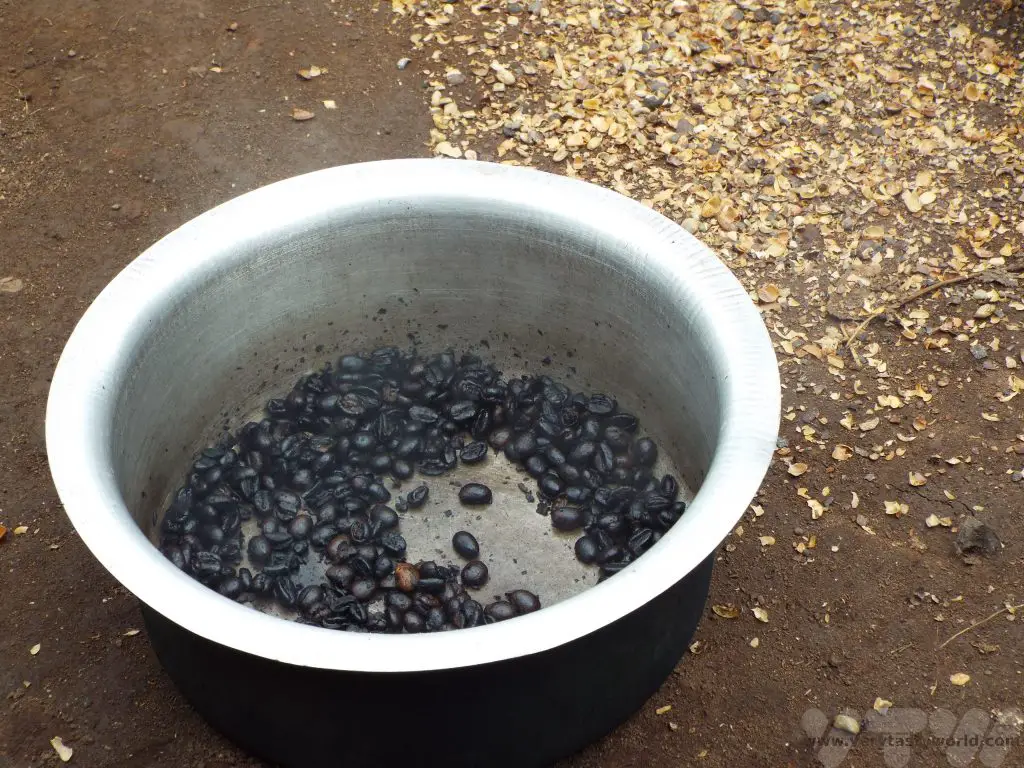
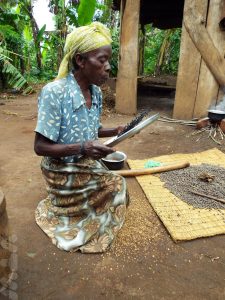
They are cooled off before grinding.
The final step is to brew with water for a damn fine cup of coffee.
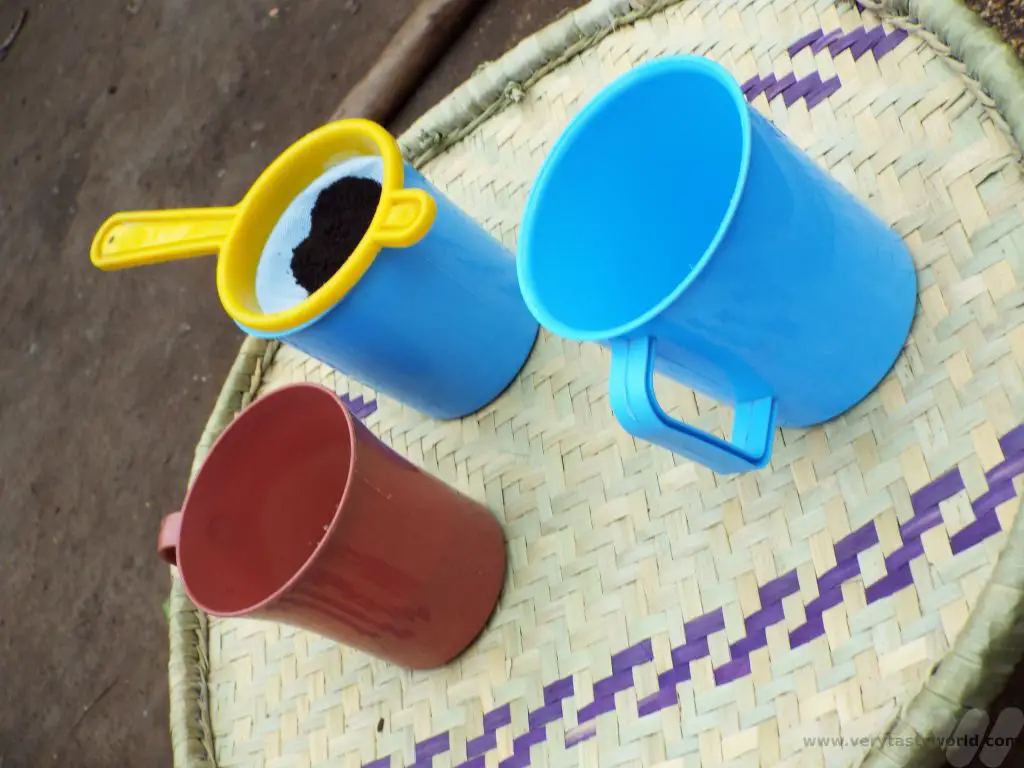
From bean to cup in half an hour. Cheers!
We also met the banana brewer. He stores large bunches of bananas in a wooden shed on stilts. A fire is lit underneath to ripen the bananas. The fruit needs to be ripe but not over-ripe. The bananas have a natural sweetness and the sugars are perfect for fermentation.
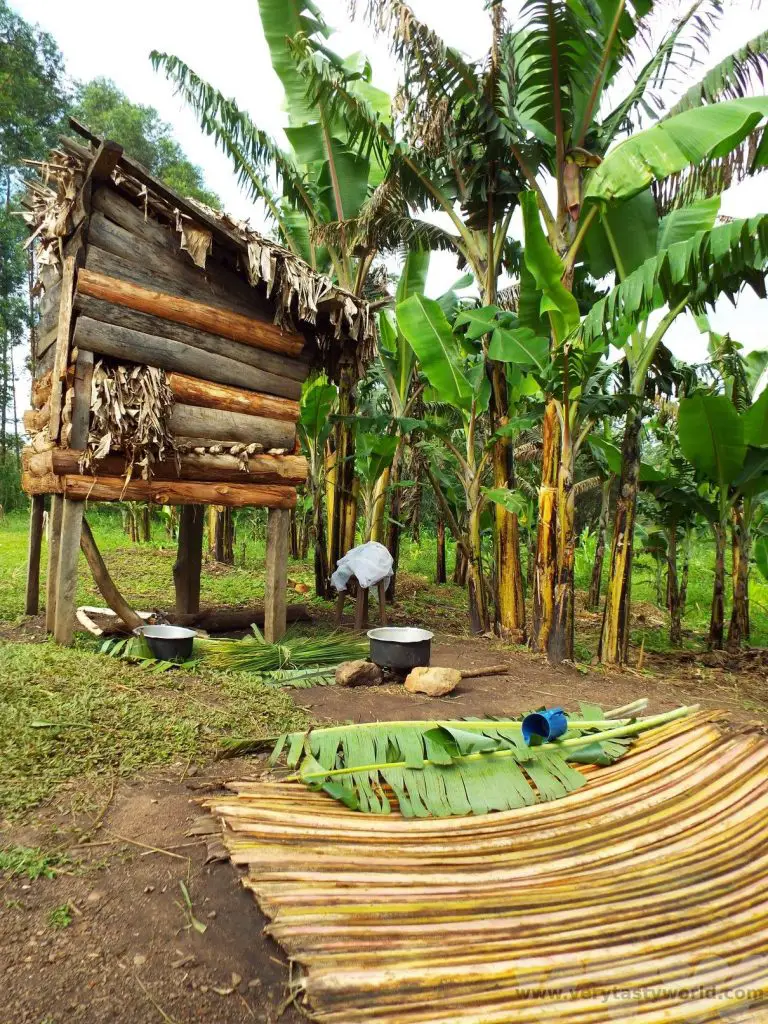
The bananas are peeled, mashed and mixed with leaves to extract the juice. The mash is filtered to separate the juice from the pulp. The resulting liquid is fermented for a day or so then bottled to produce a tasty and refreshing banana beer.
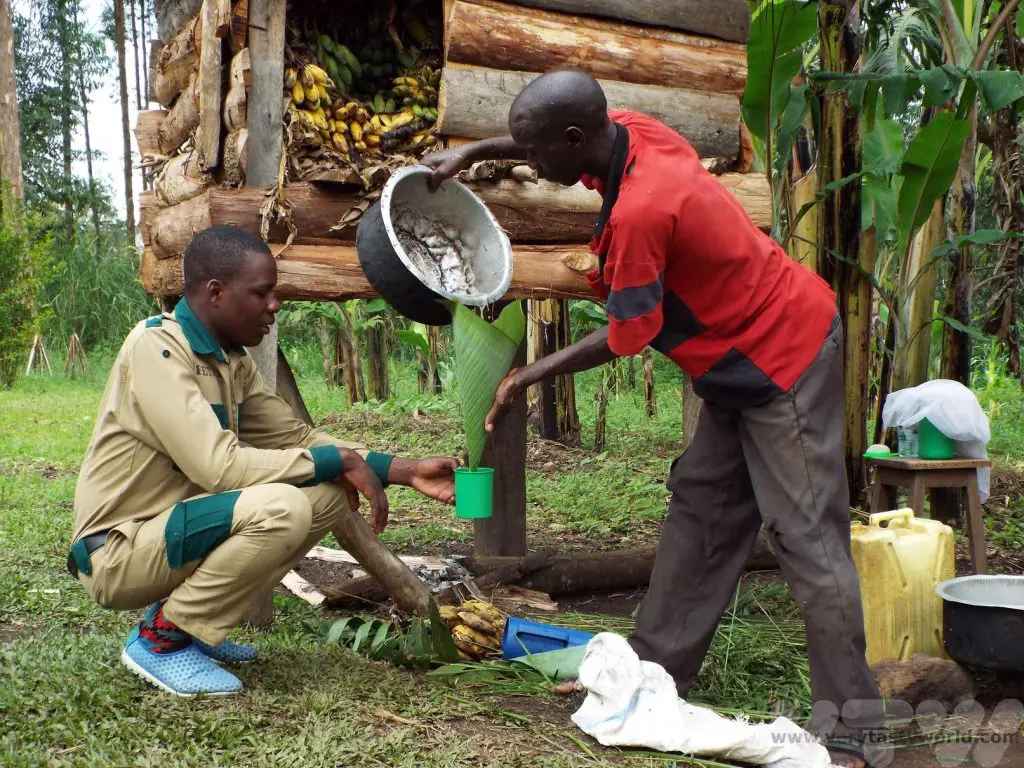
Some of the beer is distilled into a banana spirit which packs a punch!
A local shaman taught us about the medicinal uses of plants in the area and demonstrated some of the healing rituals he performs within the community.
We also met some weavers who showed us how to weave baskets using reeds from the area.
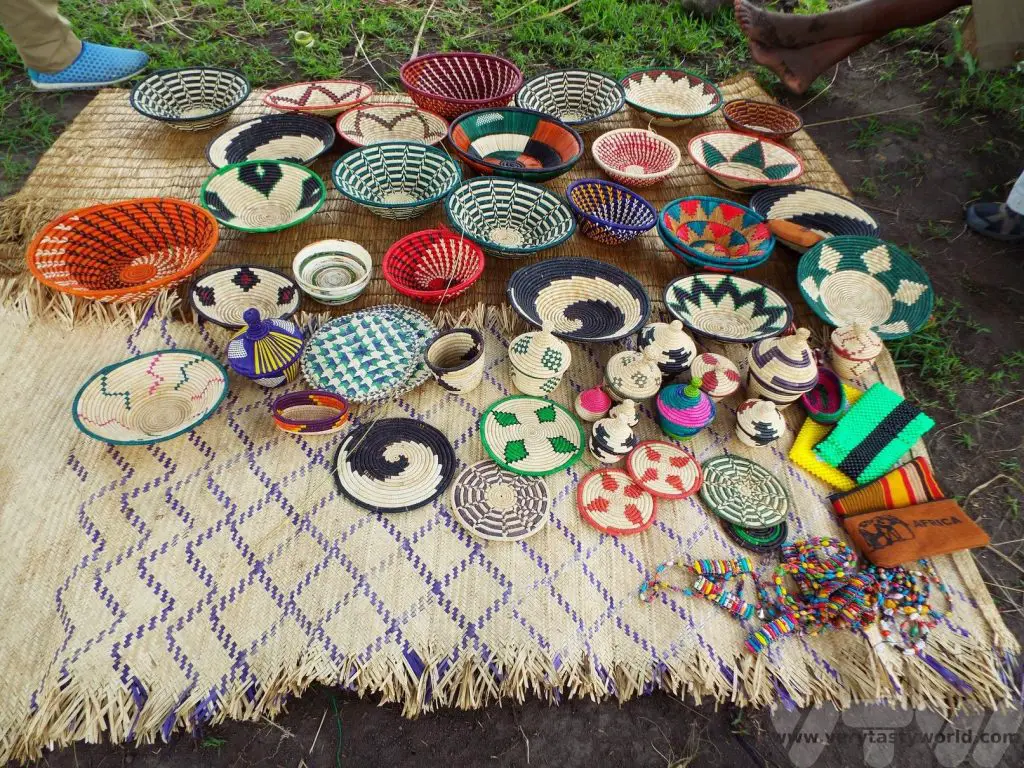
It required a lot of dexterity – they made it look so easy!
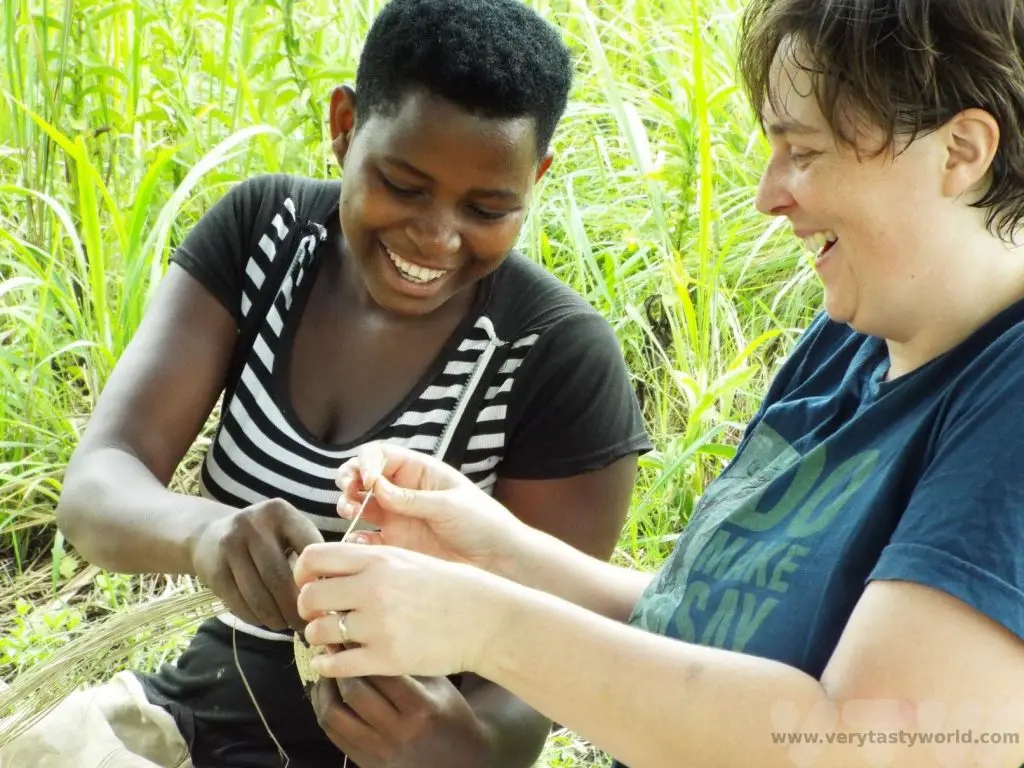
Related Posts You May Enjoy

Etosha National Park Self Drive Safari
The Etosha national park in Namibia is located in the north of the country and is probably its most famous park and a popular tourist attraction. It’s well designed and has great wildlife viewing opportunities. The best thing about it is that you can take yourself on safari as Etosha National Park self drives are very easy.
Etosha National Park Self Drive – Take a Drive on the Wild Side
Namibia is a fantastic country for a fly-drive holiday. The distances may be long but the roads are well made and largely empty. And the scenery is spectacular. It’s worth noting that some of the roads are gravel, so it’s worth packing a spare tyre, and that the petrol stations can be quite a distance apart. We travelled on the principle of topping up the tank every time we passed a petrol station, trying never to let the tank go below half-full.
The great thing about Etosha is that it is accessible for all types of car. We had hired a two-wheel drive saloon car – perfect for the pair of us – and encountered no difficulties at all, there was no need to have hired a 4WD. (Indeed we had been absolutely fine with the two-wheel drive throughout our journey in Namibia, even on the Skeleton Coast.) The roads are clearly marked and easy to navigate. There is plenty of parking around the waterholes, which are the best places for viewing wildlife.
The park is located in the vast Etosha pan, the largest salt pan in Africa. Four of the ‘Big Five’ game animals – lions, leopards, elephants and rhino (black and white) – live in the area. Etosha became a game reserve in March 1907 and a national park in 1967.
The word ‘Etosha’ means ‘great, white place’ in the language of the Ovambo tribe, which is entirely appropriate. The pan was a lake several thousand years ago. Angola’s Kuene river used to flow into the area but changed its course over the years, eventually flowing into the Atlantic. The result was that the lake dried up completely. However, there are a number of springs in the pan and lower lying areas fill with water during the rainy season. Indeed, if the wet season is particularly rainy the lake can re-form across Etosha, although these days it is fairly shallow and dries up again swiftly. If the area is flooded the chances of seeing wildlife can be reduced as they have no need to travel to the watering holes. Hence the best time to visit is during the dry winter season, from April to October.
Entry To The Etosha National Park
On entry to the park you need to pay a fee per person and for the vehicle. and you will also need to show ID. Your passport will be fine to use for this purpose.
On entering the park, the first thing we had to do was stop… for a zebra crossing!
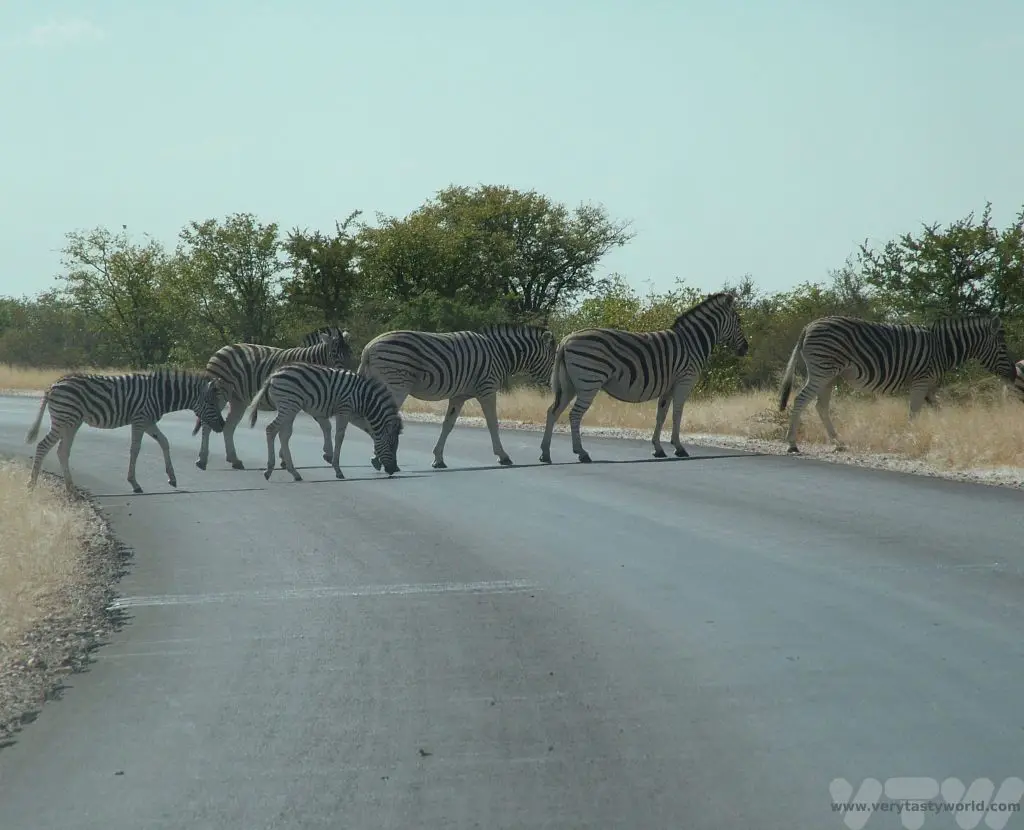
Although organised safaris are available, we thoroughly enjoyed exploring the park at our own pace. The advantage of an organised tour is that the local rangers can communicate with each other via mobile phone to let each other groups know about particular sightings.
We found that when visiting a watering hole it was actually better to wait. A number of organised safari tours turned up to the watering hole, quickly established that there was no wildlife there, and moved on. But waiting turned out to offer a much more rewarding experience. Sitting in the car, looking out across the vast, vast pan, we saw what appeared to be some angular shapes appear on the horizon. We continued to watch. Slowly, a group of giraffe sauntered across the plain. It was such a pleasure to see them as a group.
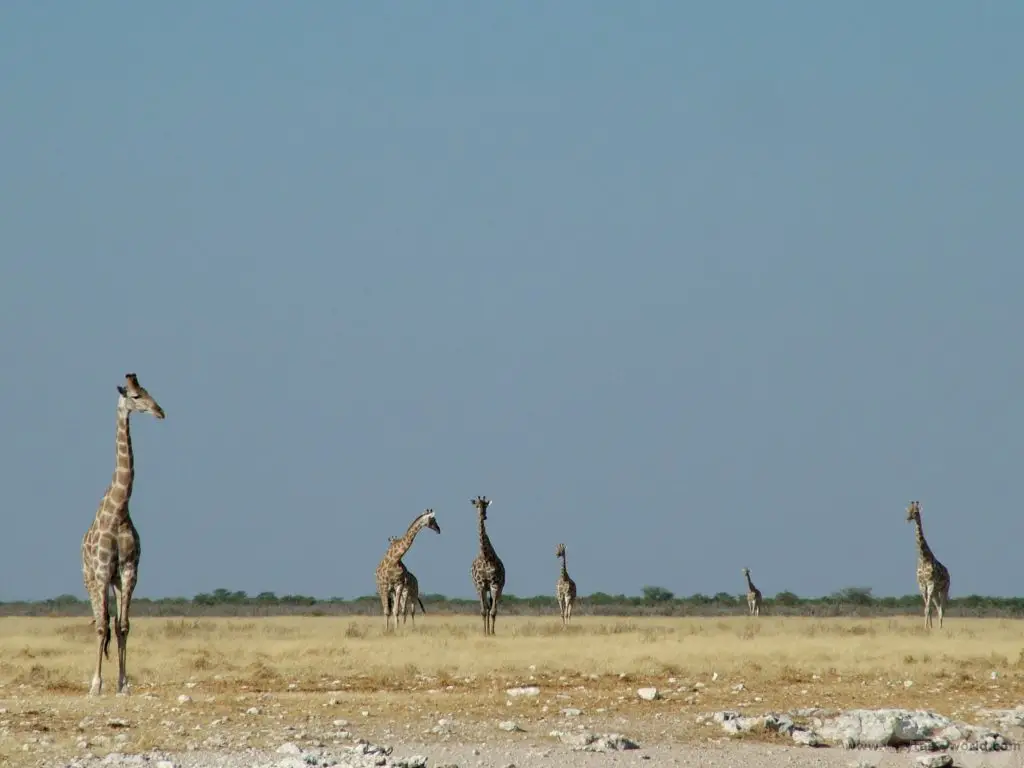
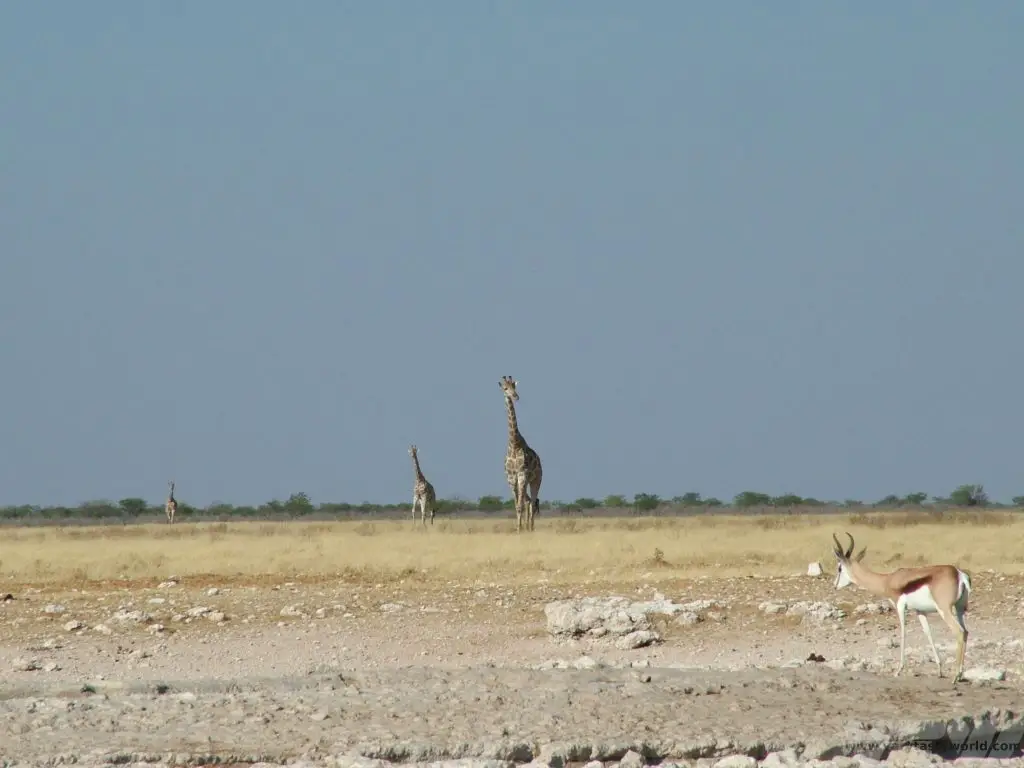
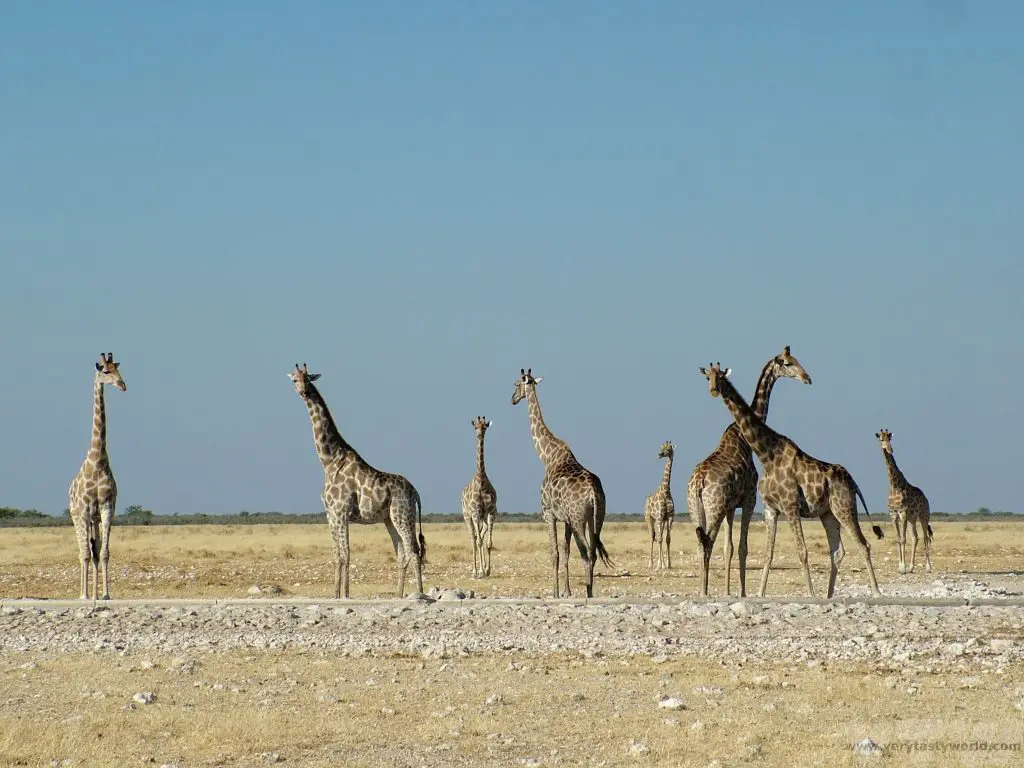
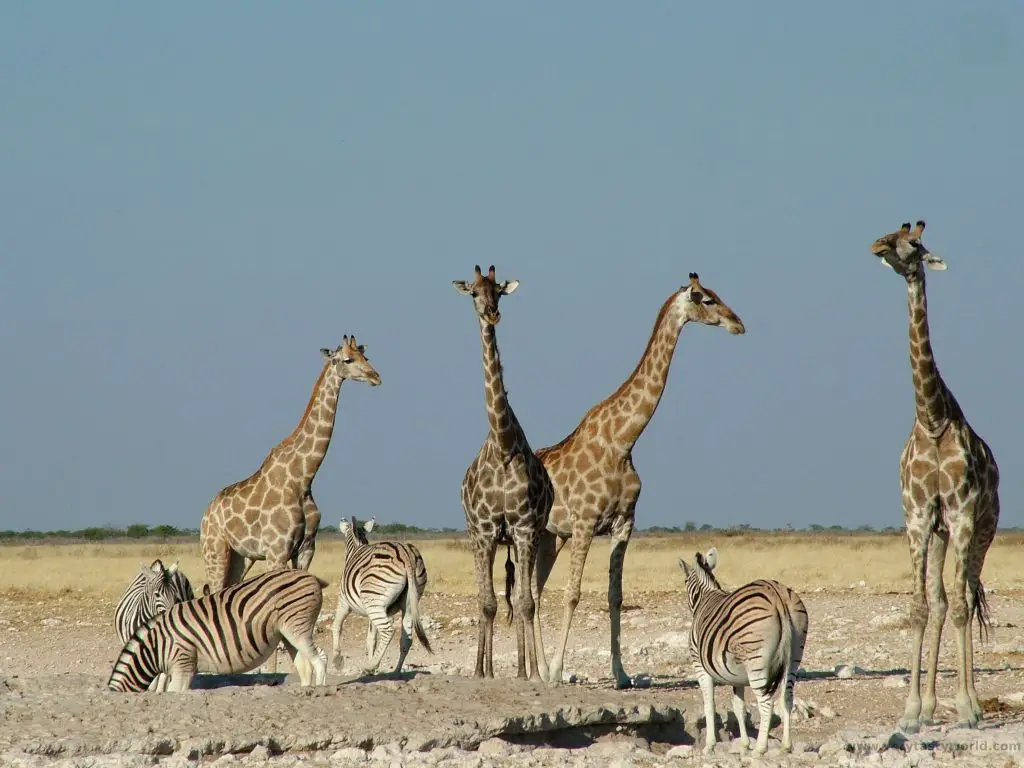
Giraffe often appear to be somewhat ungainly but actually they were very graceful creatures. It was fascinating to see them part their legs, despite their long necks, in order to reach the water and have a long, cool drink.
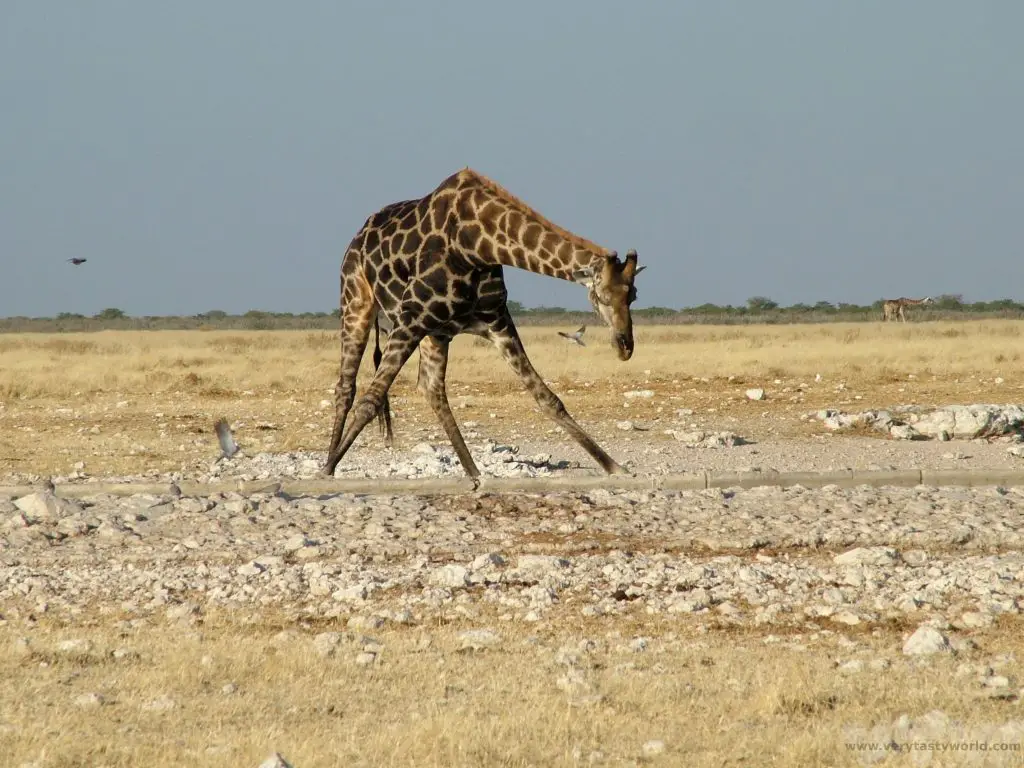
We saw wildebeest having a rut.
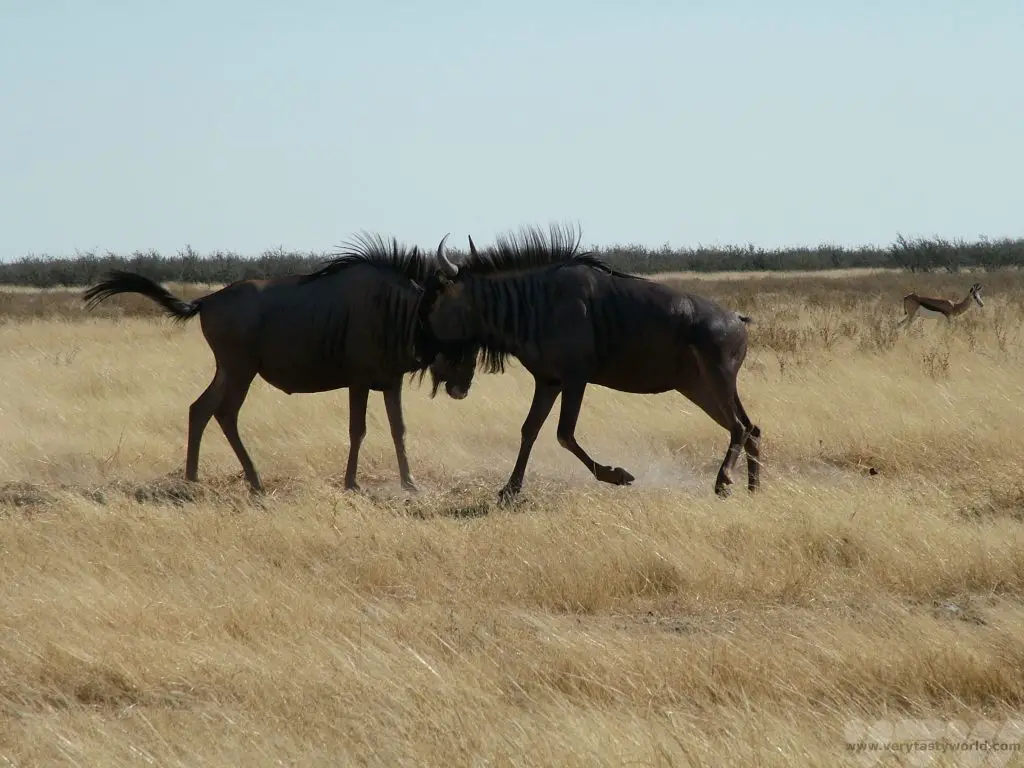
An encounter between a young lion, an elephant and an impala. (The lion is in the background.)
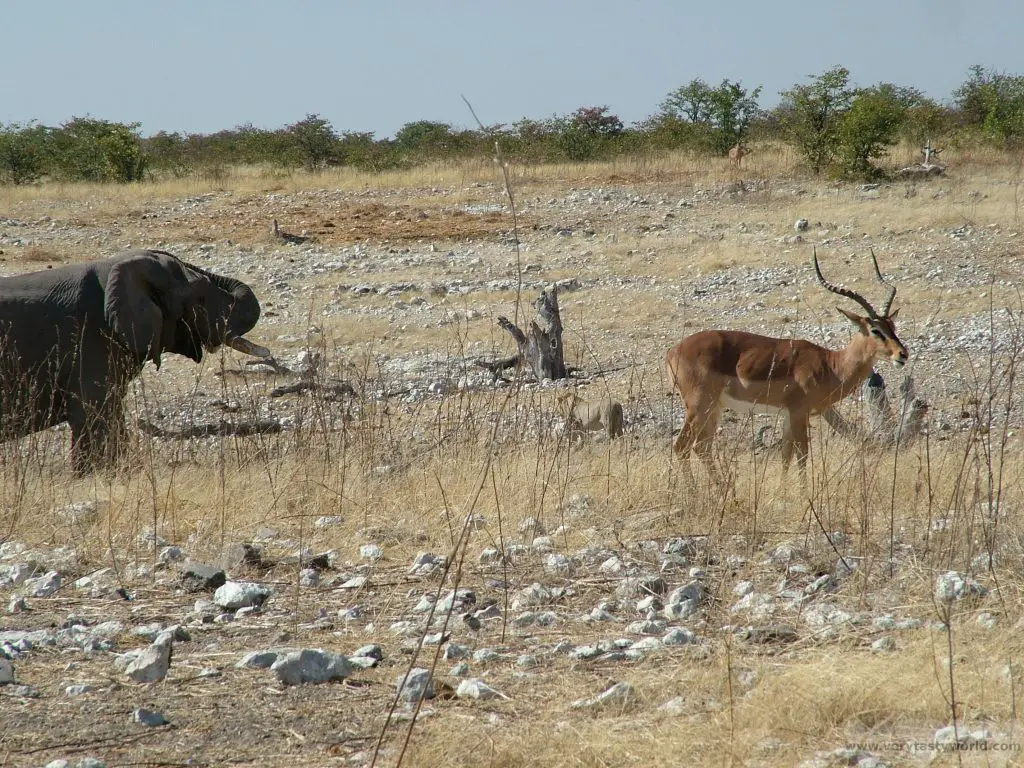
The impala was very aware of the lion’s presence…
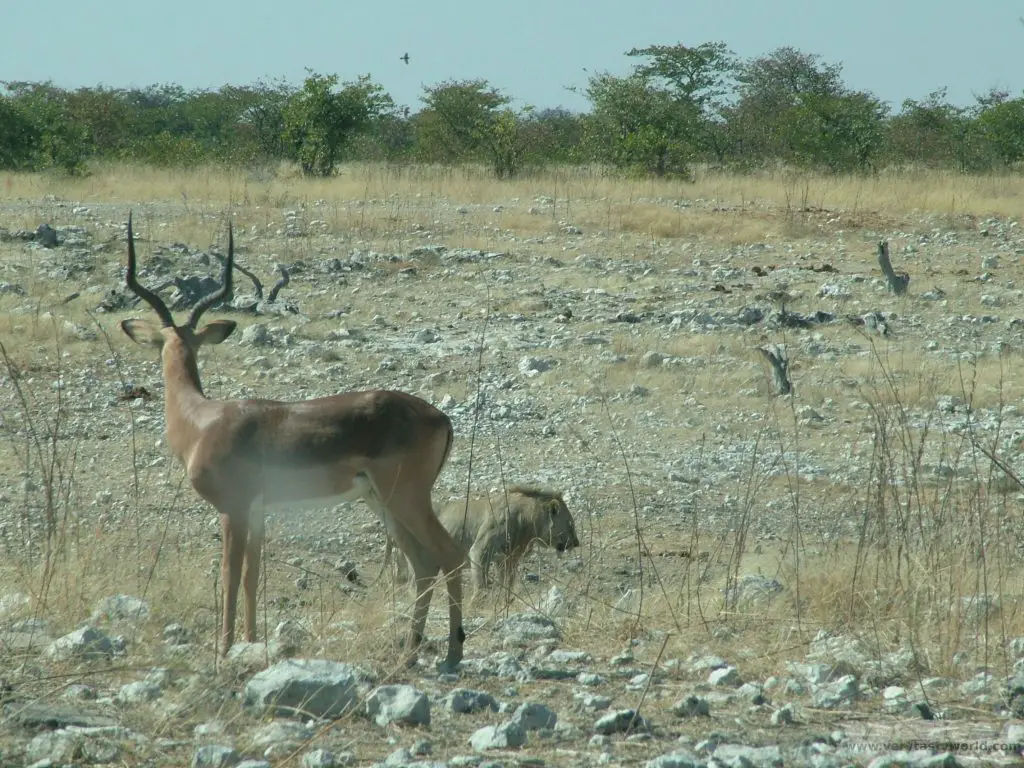
…but he made the best decision to saunter away.
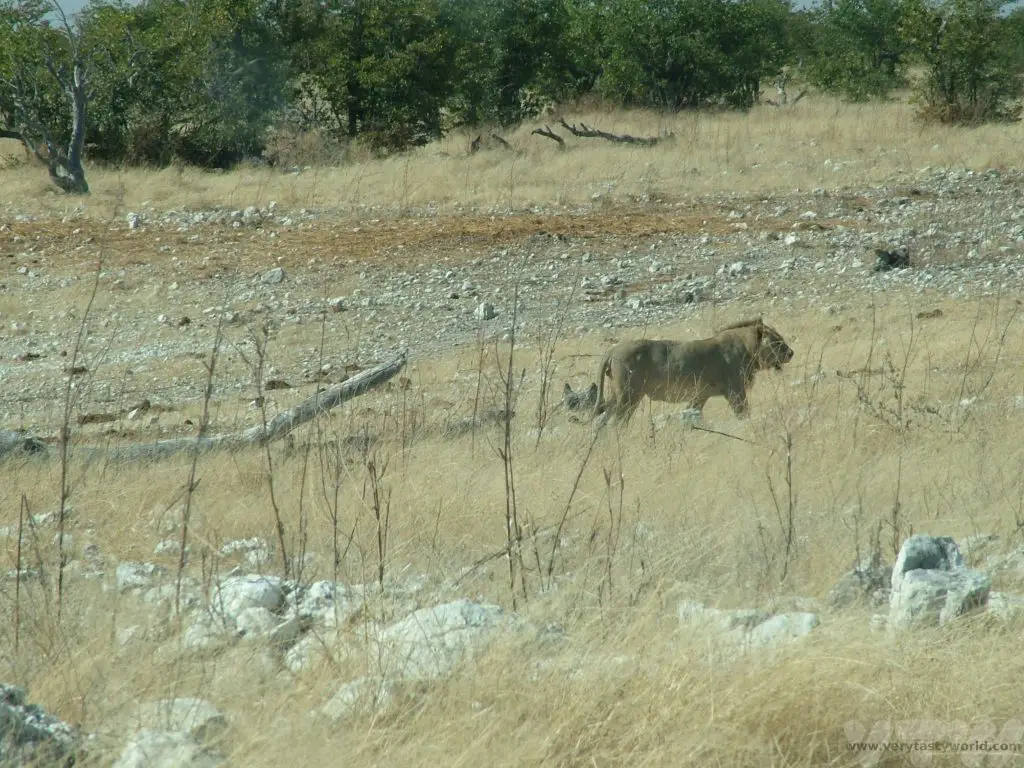
Although the large mammals are the obvious attraction, it’s also great to discover some of the smaller animals, birds and flora.
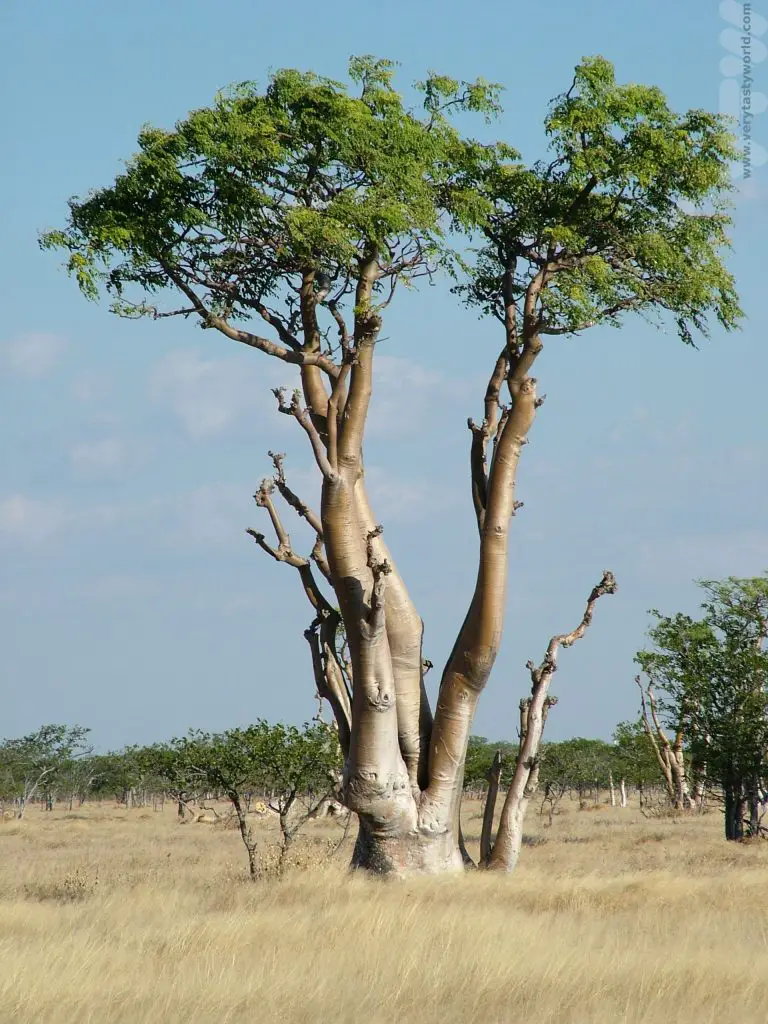
Moringa ovalifolia is a succulent tree which looks very otherworldly, almost like it has been planted upside down.
And the park is abundant with zebra…
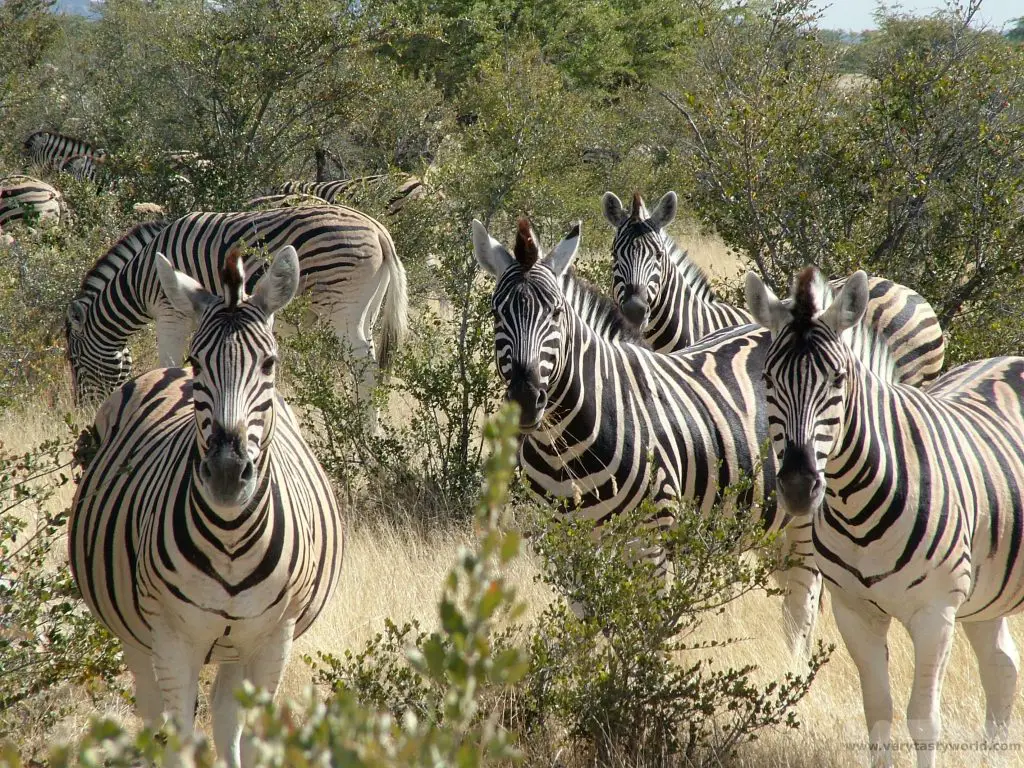
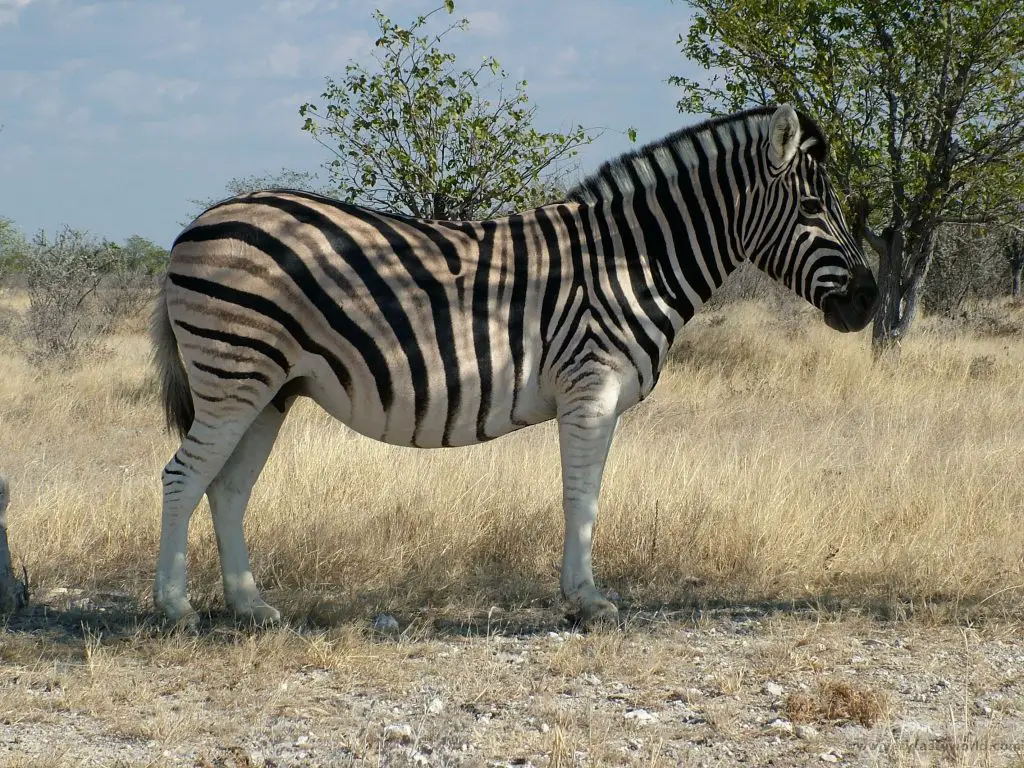
…impala
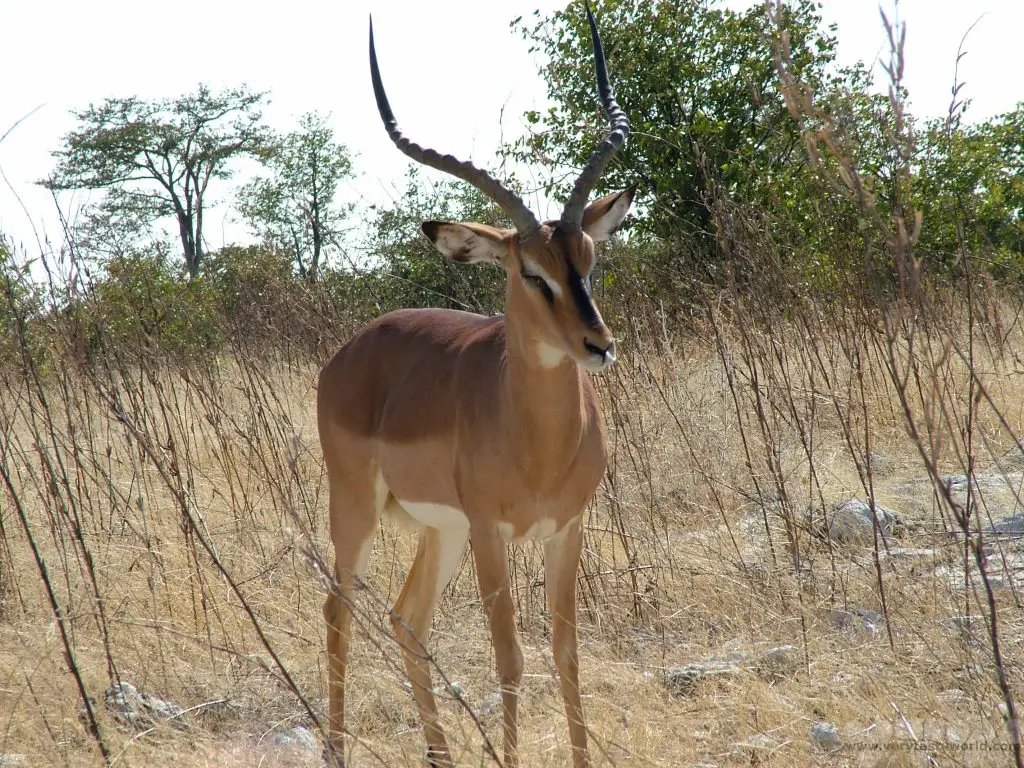
and gemsbok and springbok.
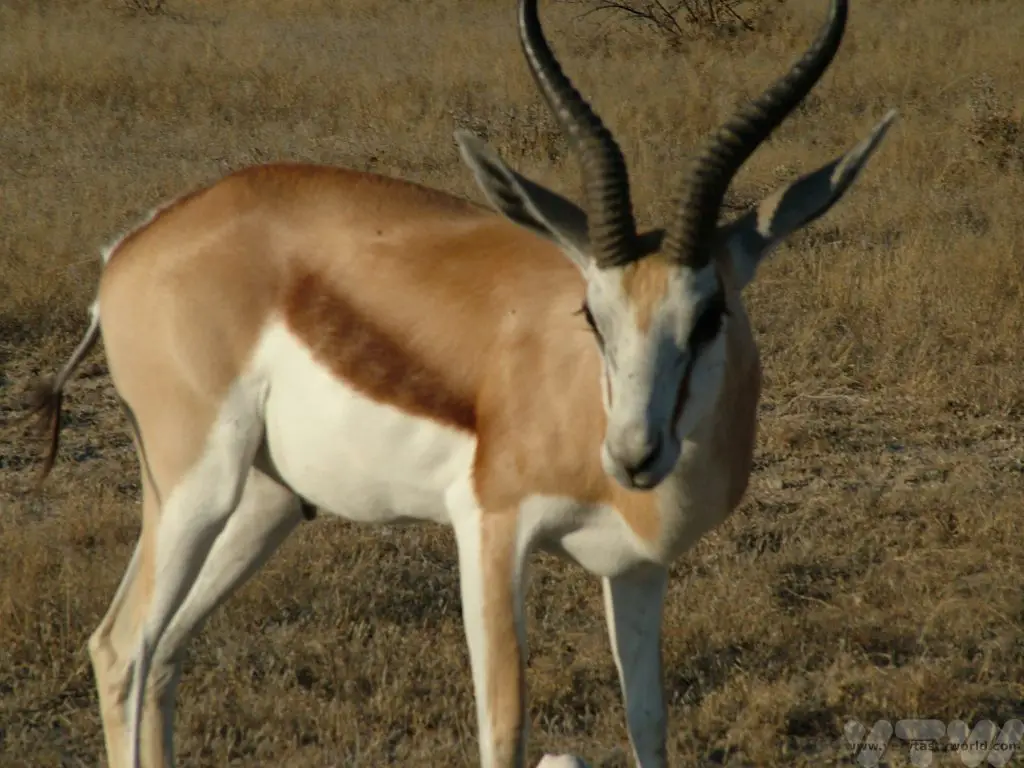
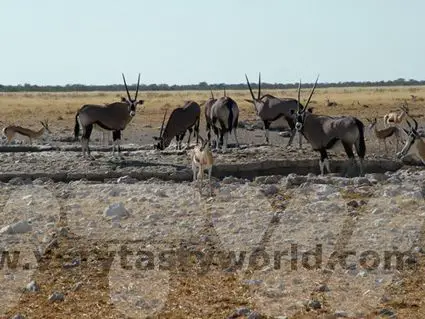
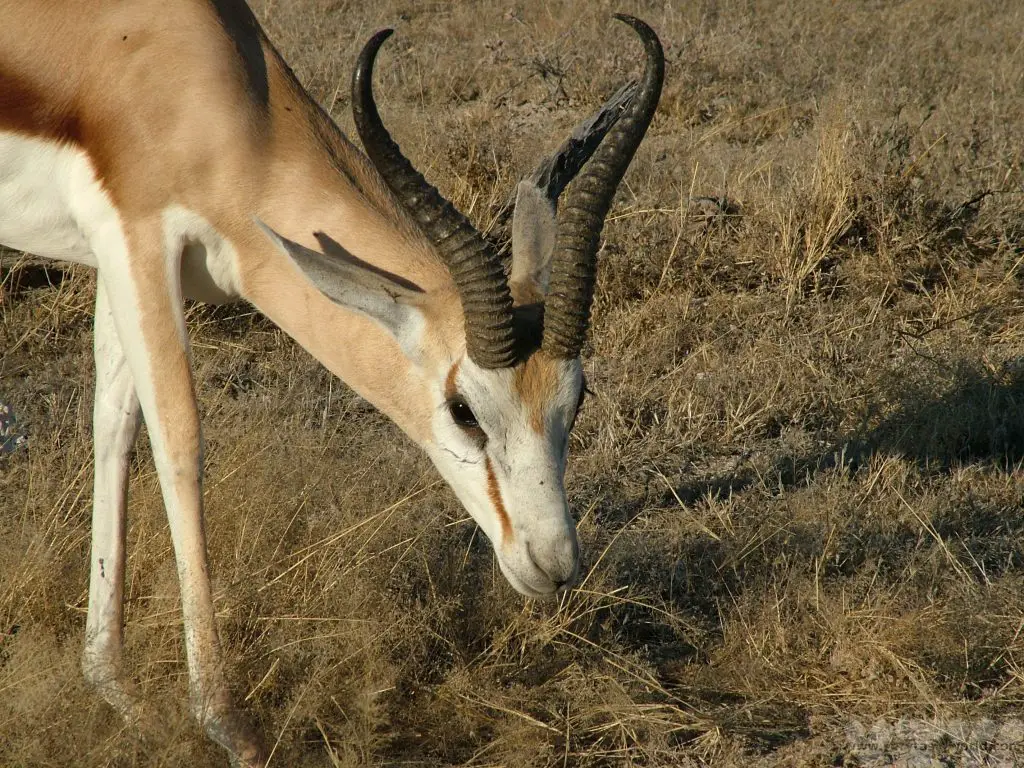
We also saw a ground squirrel, a marabou stork and a jackal.
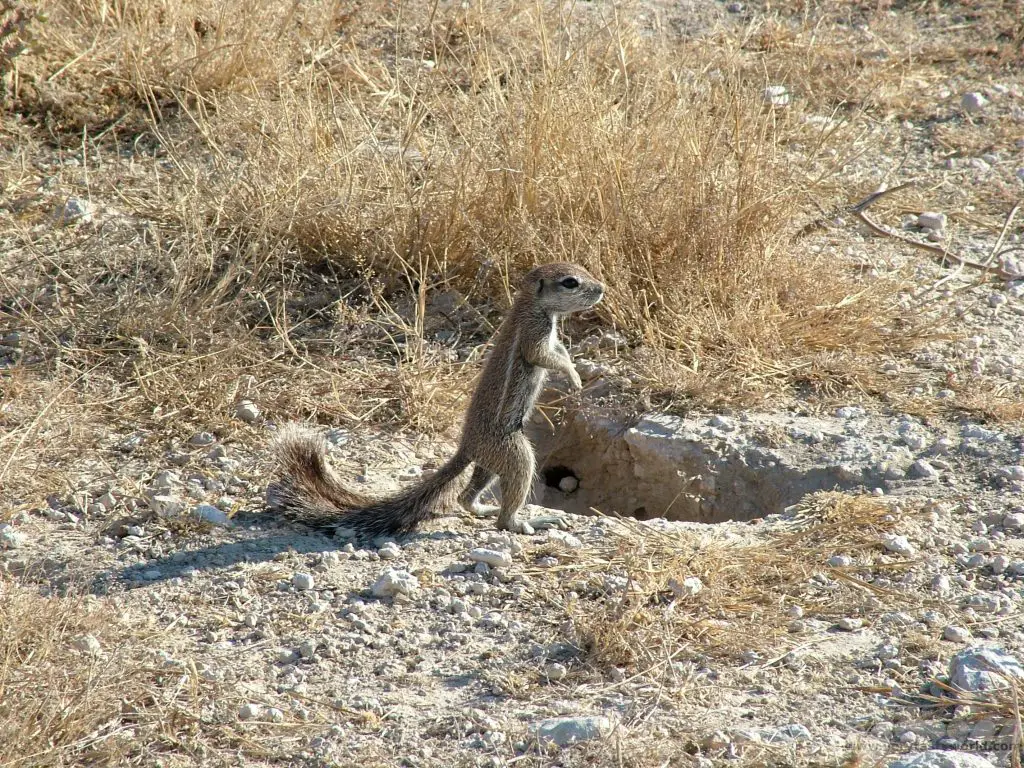
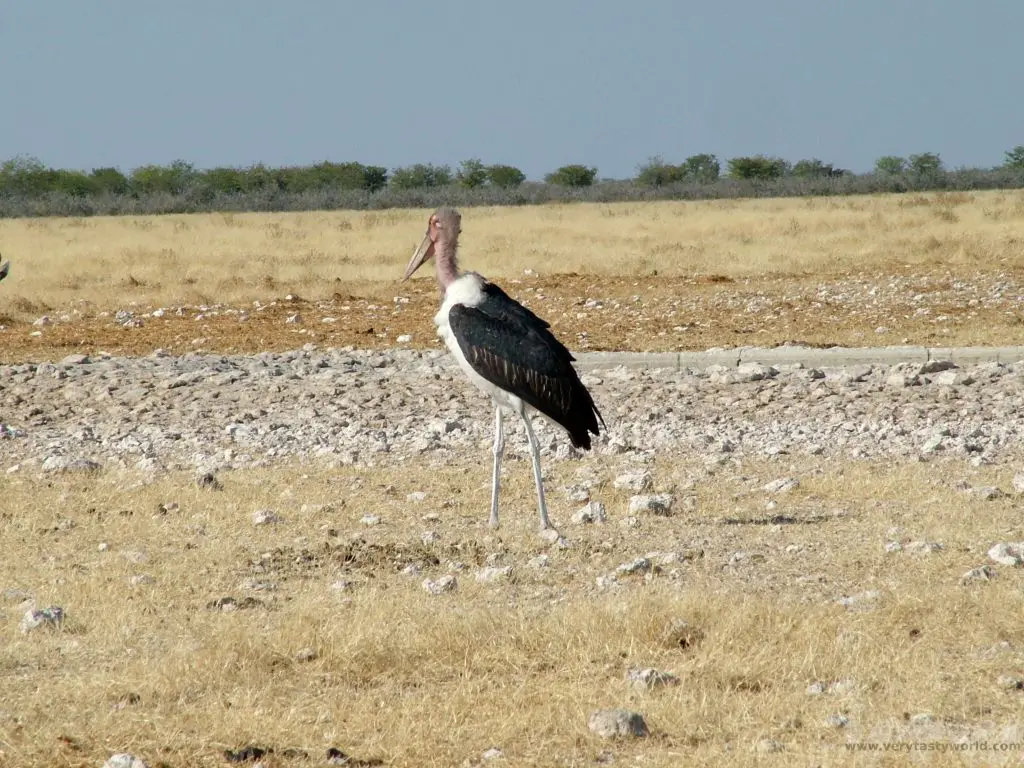
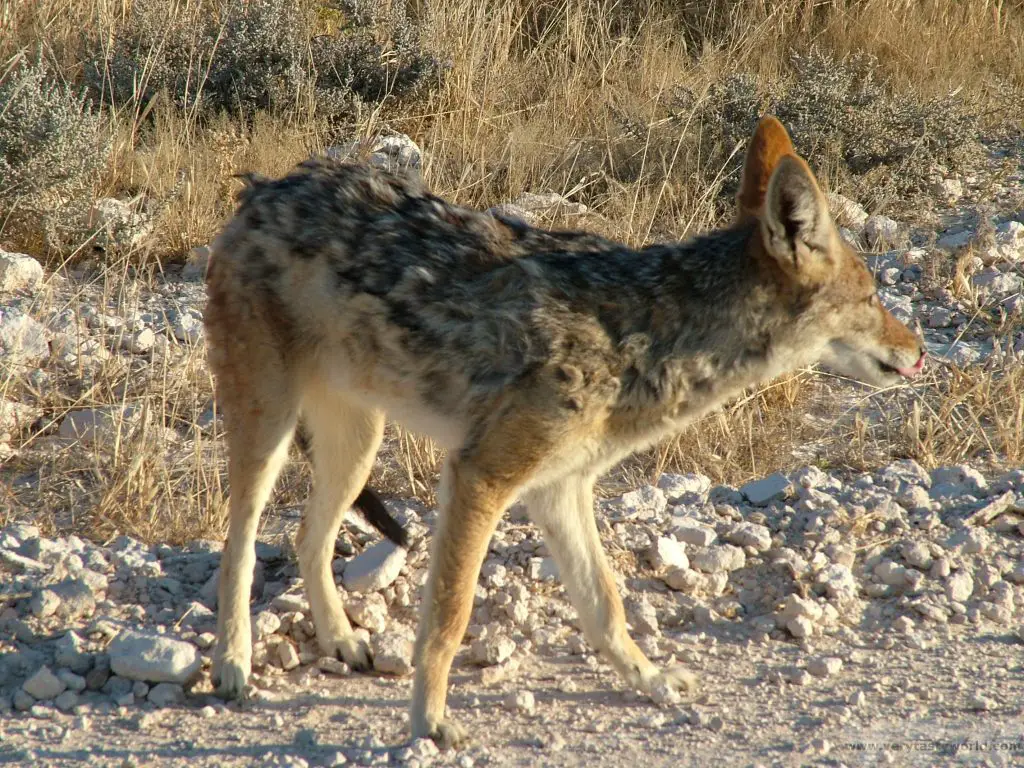
There are a number of safety rules at the Etosha national park in Namibia. Obviously stay in your vehicle and it’s advisable keep the windows closed when you’re out in the park. You are not allowed to drive at night, so make sure you leave enough time to get back to your rest camp. The speed limit is 60 km/h but it’s far better to drive at a leisurely pace – you have a greater chance of spotting wildlife if you’re not zooming around. Look for other vehicles that have stopped – there’s a good chance that someone has spotted some wildlife worth viewing.
Staying At Etosha
The area has a number of rest camps with all the facilities you might need. There are various levels of luxury in terms of accommodation. We were in self-catering accommodation in Okaukuejo Rest Camp.
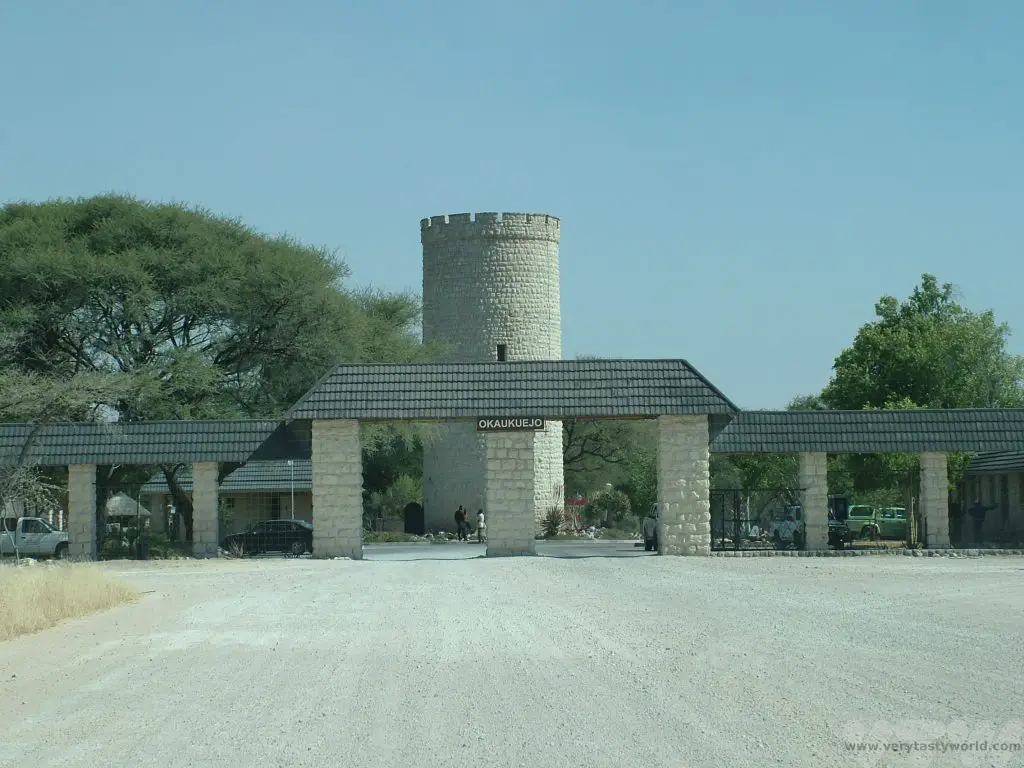
It has a restaurant as well as shops where you can pick up food and other items. And, of course, the all-important petrol station. Our cabin was clean and comfortable with a couple of bedrooms, a bathroom, kitchen area and it also had a braai, an African barbecue. You can buy meat and charcoal in the local shops and it’s rather nice to relax with a few beers and a barbecue as the sun goes down.
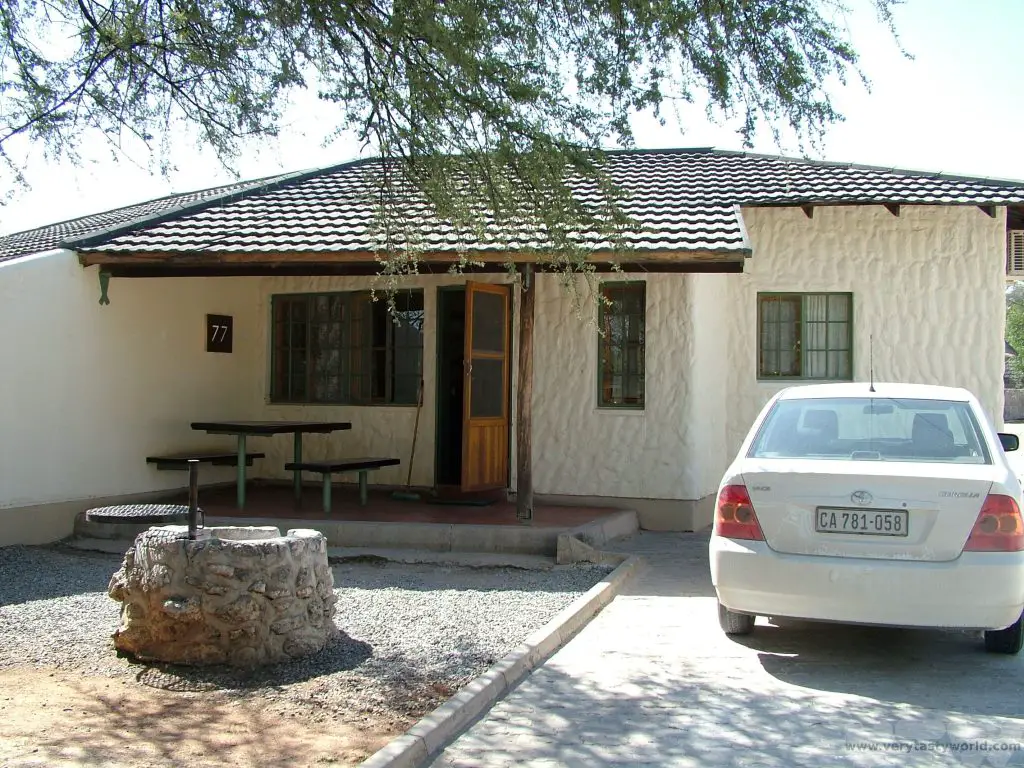
The safari experience doesn’t end in the evening. The rest camps are located very close to (fenced off) watering holes that are floodlit at night so it is possible to wander out to the fence and watch the wildlife as they come to drink in the cooler evening. It was fantastic to be able to see endangered rhino enjoying both a drink and a bathe.
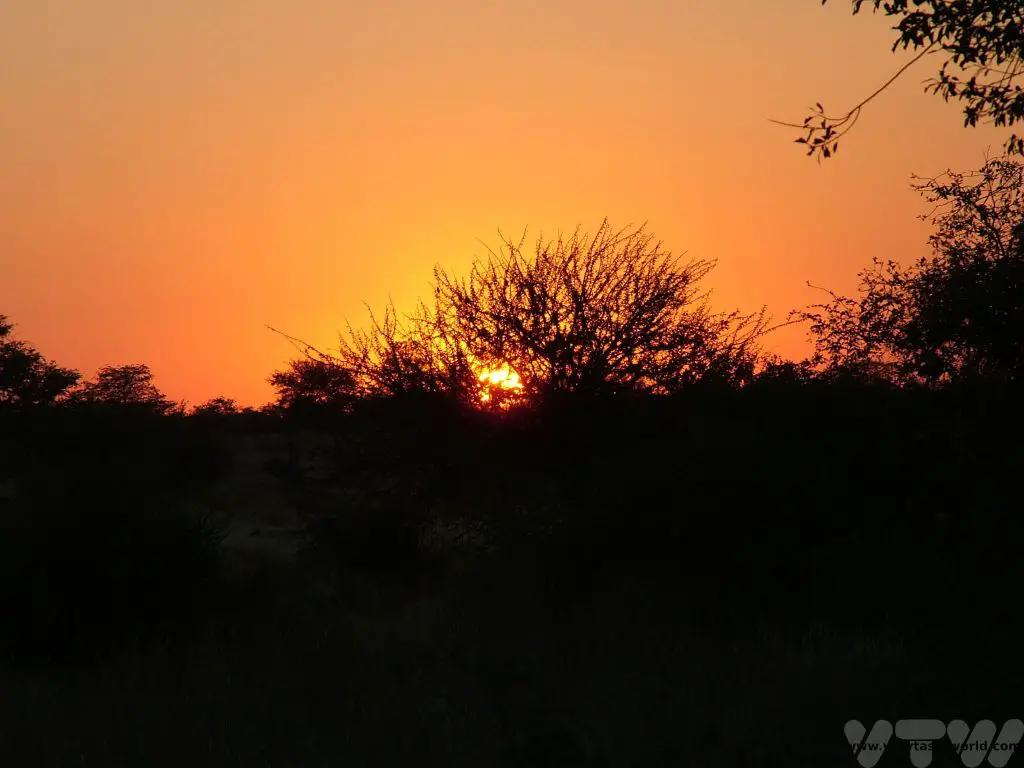
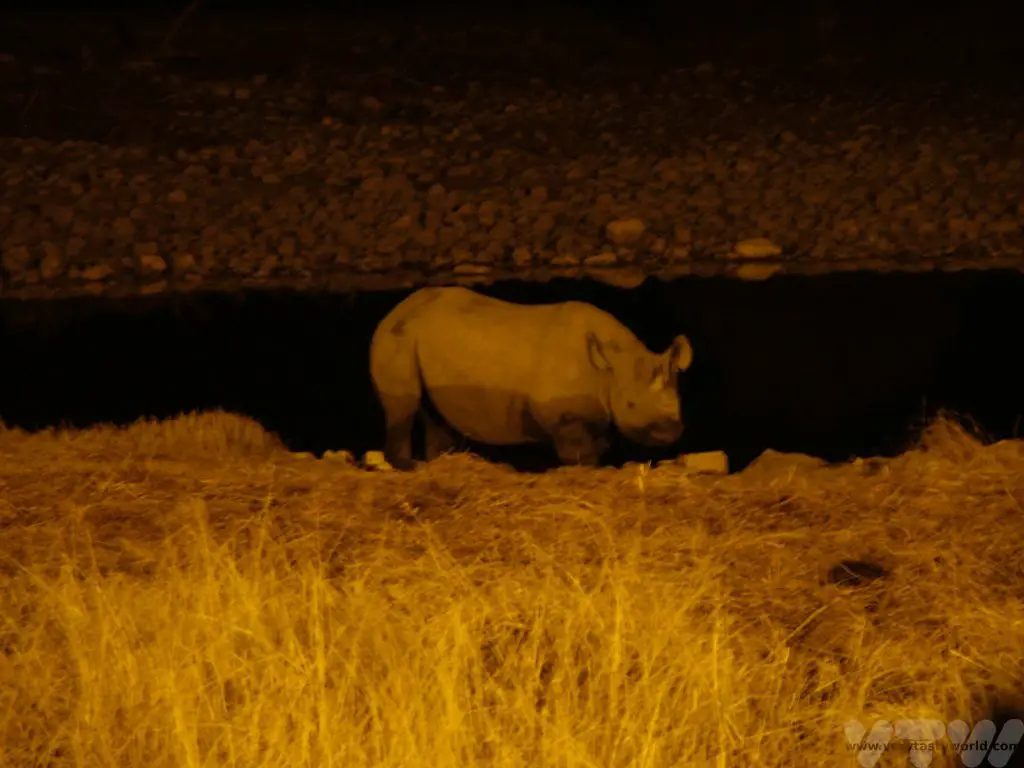
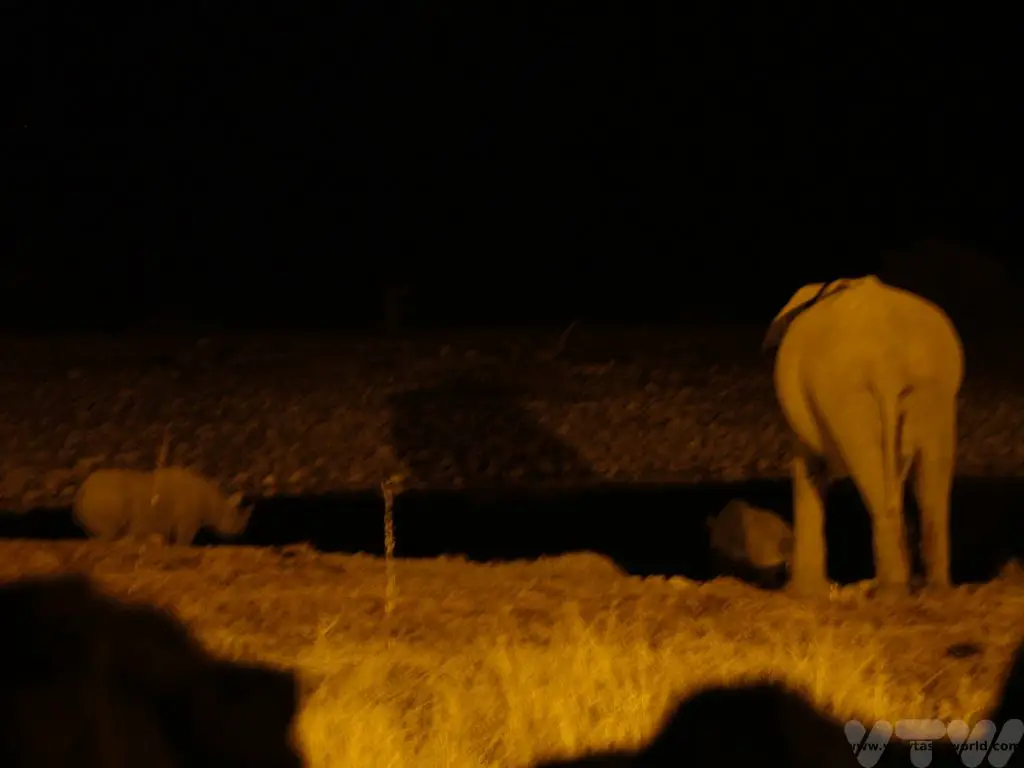
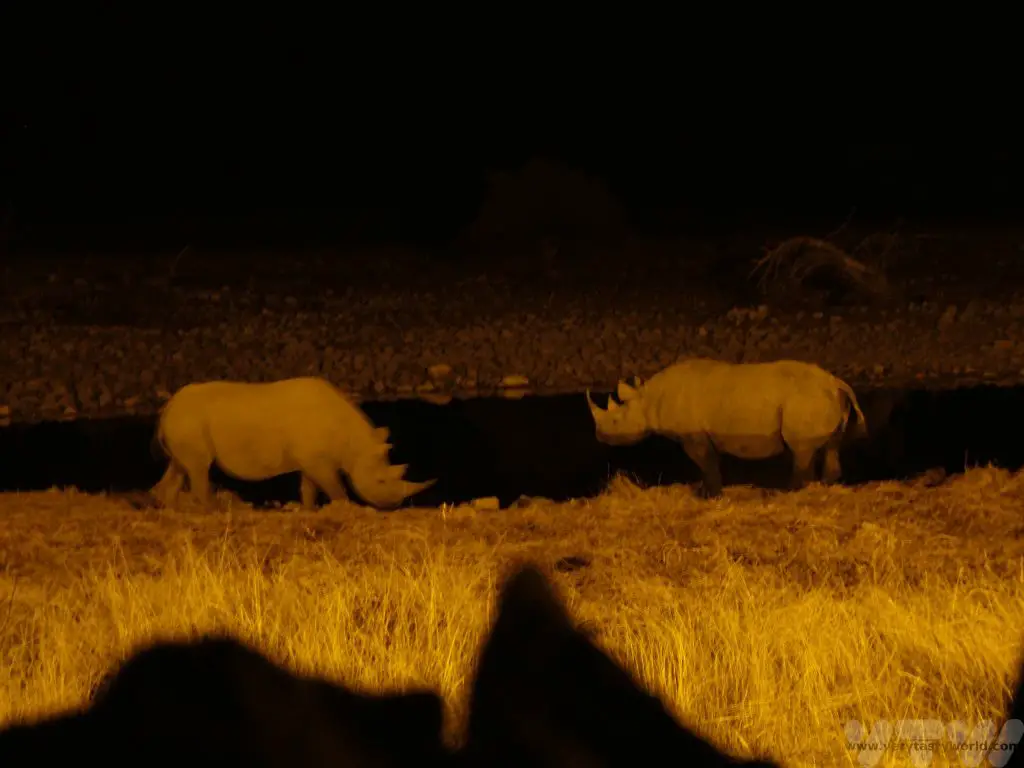
One thing that rounded off our experience happened on leaving the park just as we were checking out. Throughout our journey in Namibia, a number of people approached us, at park gates or local attractions, to ask whether we would be prepared to give their friends or colleagues a lift to the next town. We were happy to do this – it was a fantastic opportunity to chat with local people on a long drive.
At Etosha we were asked whether we could give one of the park rangers a ride to Otjiwarongo. We were delighted to be able to help. We had a brilliant chat with him and learned loads about the park. He was very interested to hear about the wildlife in our country. We don’t have anything nearly as exotic or large as elephants – we reckoned the largest animal in the UK is probably a red deer. And we had a laugh comparing Namibia’s enormous termite mounds with England’s teeny-tiny ant hills. The Etosha National Park, Namibia is an ideal place to take yourself on safari and view amazing wildlife.
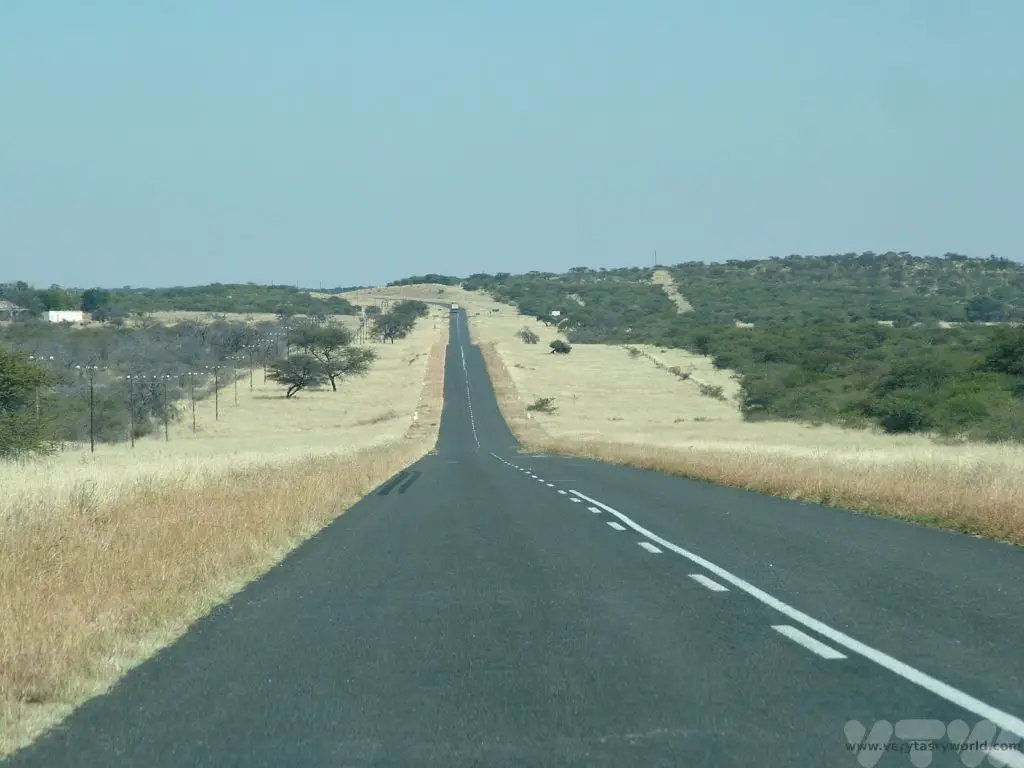
Related Posts You May Enjoy

1 Day Gorilla Trekking Uganda
Although it has its fair share of excellent safari locations where you can see the so-called Big Five game animals, Uganda is also well known as a top destination to see primates. We had the opportunity to track chimpanzees in Kibale and mountain gorillas in Bwindi Impenetrable in the south-west region of the country. 1 day gorilla trekking in Uganda is one of the country’s top attractions.
Gorillas in the Mist… And Pouring Rain
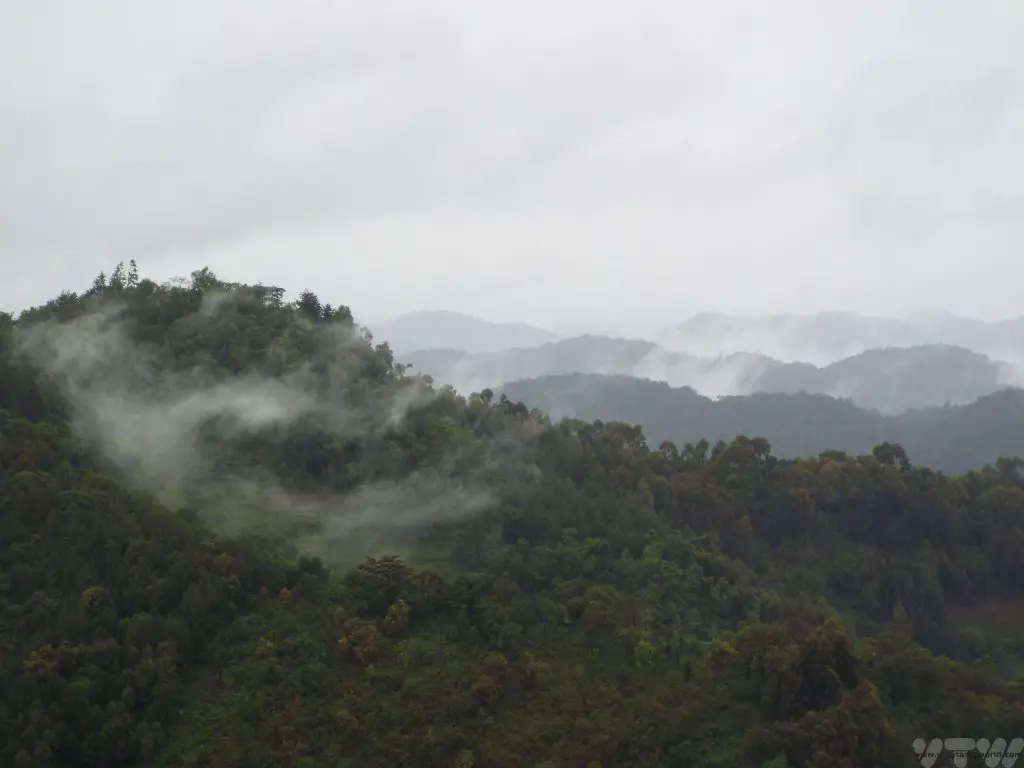
The mountain gorillas are critically endangered – there are only about 900 left in the wild and they can be found in Uganda, Rwanda and the Democratic Republic of Congo. Uganda and Rwanda offer a limited number of gorilla tracking permits each day. We chose to travel in the low season when it is more likely to be rainy, because the cost of the permits is reduced significantly during certain months of the year. It’s worth booking the permits in advance. They are really expensive, even out of season, but the money goes directly towards the conservation of these marvellous creatures. And it is really a once in a lifetime experience.
The Ugandan conservation programme has ensured that half of the gorilla population has been habituated – wild, but comfortable in the presence of humans – and the other half remain completely wild. This is a good strategy. The conservationists’ greatest fear is that the gorillas, which share about 98% DNA with humans, could catch a human disease for which they have no immunity. You are requested not to track the gorillas if you have a cold. Following the start of the pandemic, the area was closed off for a while, Covid presenting risks both from the disease but also an increase in illegal poaching activities, but it has now opened up with extra precautions in place that trekkers need to adhere to in order to protect these magnificent creatures.
Bwindi Gorilla Trekking – The Briefing
The trip starts with a briefing at headquarters. Then you are allocated to a gorilla group – a maximum of eight people join each trek. It can take any time between 30 minutes and 6 hours to reach the gorillas – some parties have returned after nightfall in the past. Additionally, we were tracking at altitude, around 2300m above sea level, which enough to knock the breath out of you going up some of the steeper slopes! We were assigned the Bitakura group in the Ruhija area. One member of our party had mobility issues and was carried on a sedan by a team of four porters (who rotated shift with an additional four porters at regular intervals) who did an amazing job and ensured that she had full access to the gorillas. Our guide called it “the helicopter”. This system can be used if any trekker becomes unwell during their hike.
You wouldn’t have known it was the rainy season for most of our trip – virtually every day was bright and sunny and it had rained for a maximum of 15 minutes on just a couple of the days throughout our trip. Of course, on the day we really wanted it to stay dry the rain absolutely chucked it down. That’s why we packed good walking boots and raincoats.
We were advised to borrow walking sticks and also to employ porters to accompany us on the trek. This was a really good idea. Not only do they carry your backpack (you are advised to take three litres of water and a box lunch because you just don’t know how long it will take to reach the gorillas and you will need the energy) they will also hold your hand to steady you if things get slippery and push/pull you over obstacles if necessary. Importantly, they are local people who can earn a decent living from tourists, so hiring a porter also contributes directly to the community. The porters are available at the starting location and will be allocated if you ask for one.
1 Day Gorilla Trekking Uganda – The Trek
The Uganda Wildlife Authority (UWA – apparently pronounced Oo-er!) have an excellent system in place which ensures that you have practically 100% chance of seeing the gorillas: each morning two trackers head out into the forest to find the troop based on their location the previous day. They then radio to the guide, who will lead the tourists via the best route to see the gorillas. The trackers do an amazing job – they spend all day with the gorillas, even after the tourists have left, so that they know where to trace them to on the following day. We were advised that they would appreciate a personal tip as most tourists don’t recognise the brilliant job they do and we were delighted to do this.
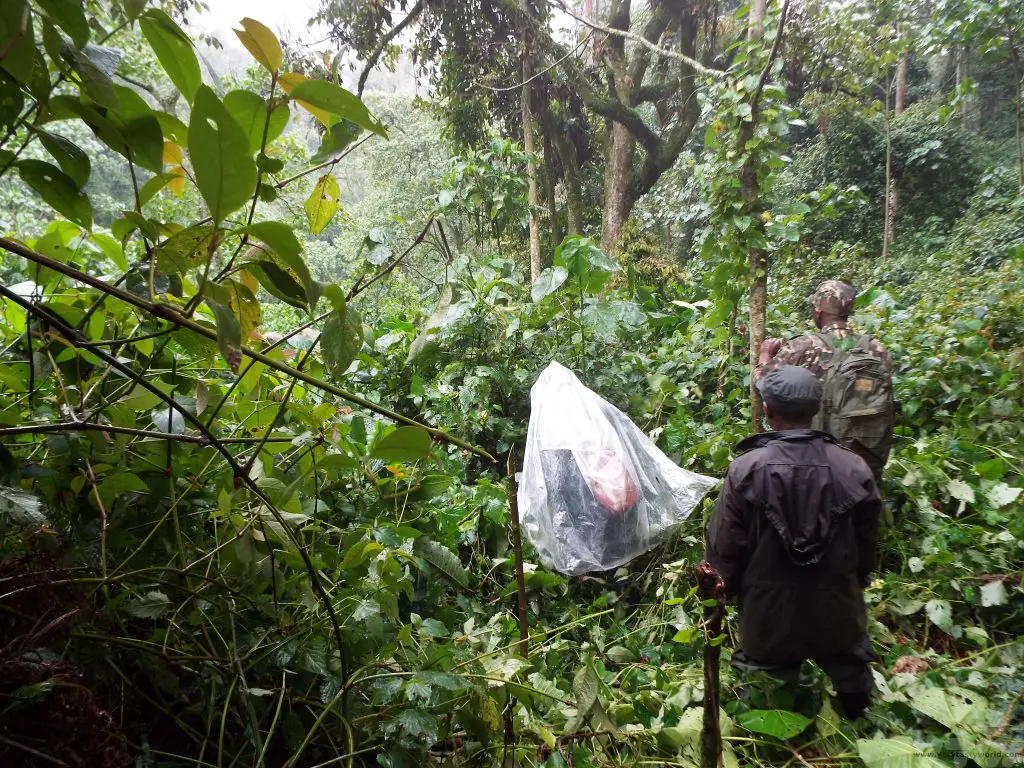
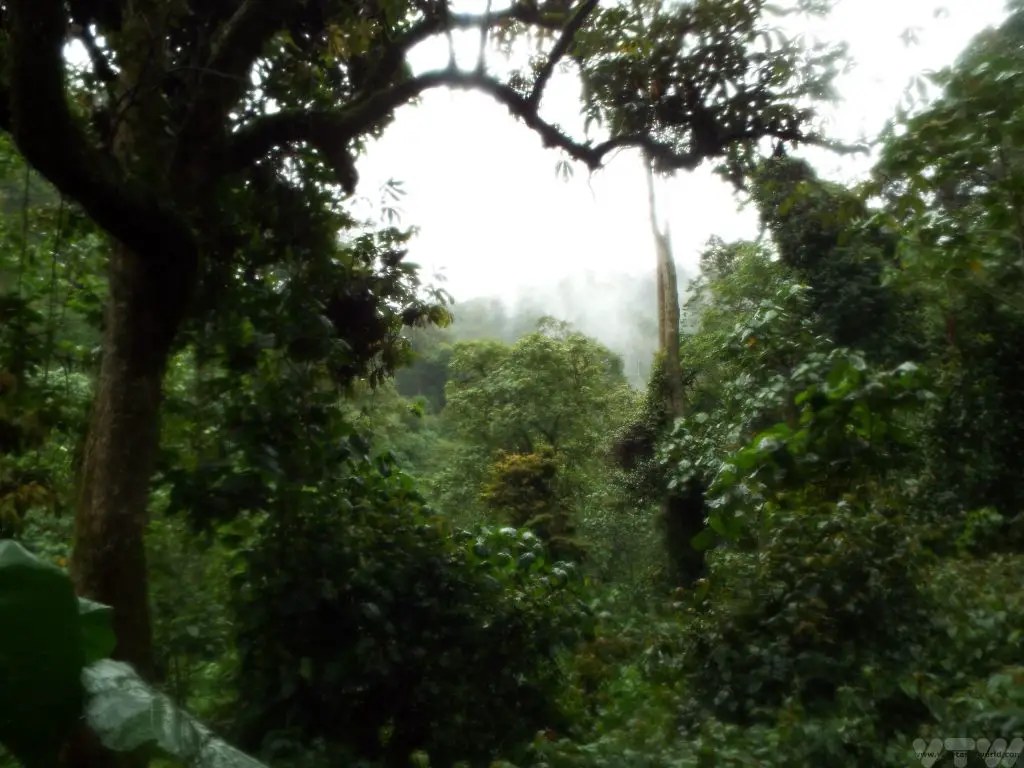
There’s a reason the region is named “Bwindi Impenetrable”. We trekked along a main path – up and down some very steep, muddy and slippery slopes, for a couple of hours. Then our guide indicated that he was close to the trackers. The rangers/trackers cut through the forest with machetes and we followed a newly made path, through dense forest to where the gorillas were located.
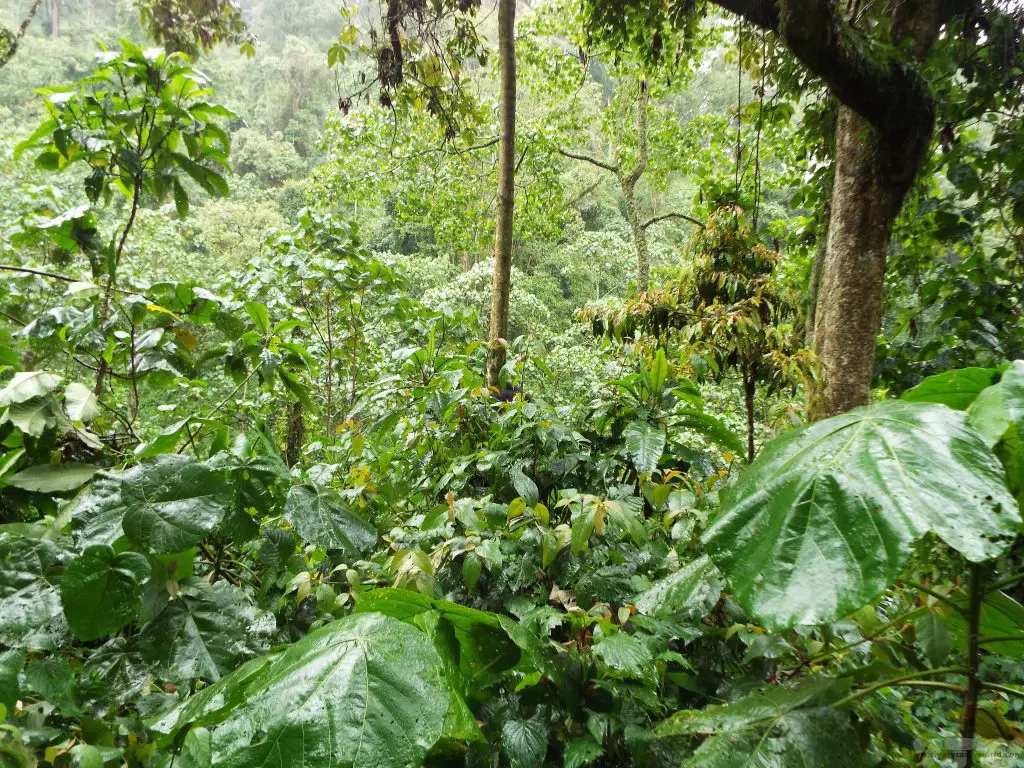
We were soaked through to the skin, muddied, shattered and utterly bedraggled. But nothing beats the sight of wild gorillas just a few metres away from you.
We saw one of the group’s silverbacks…
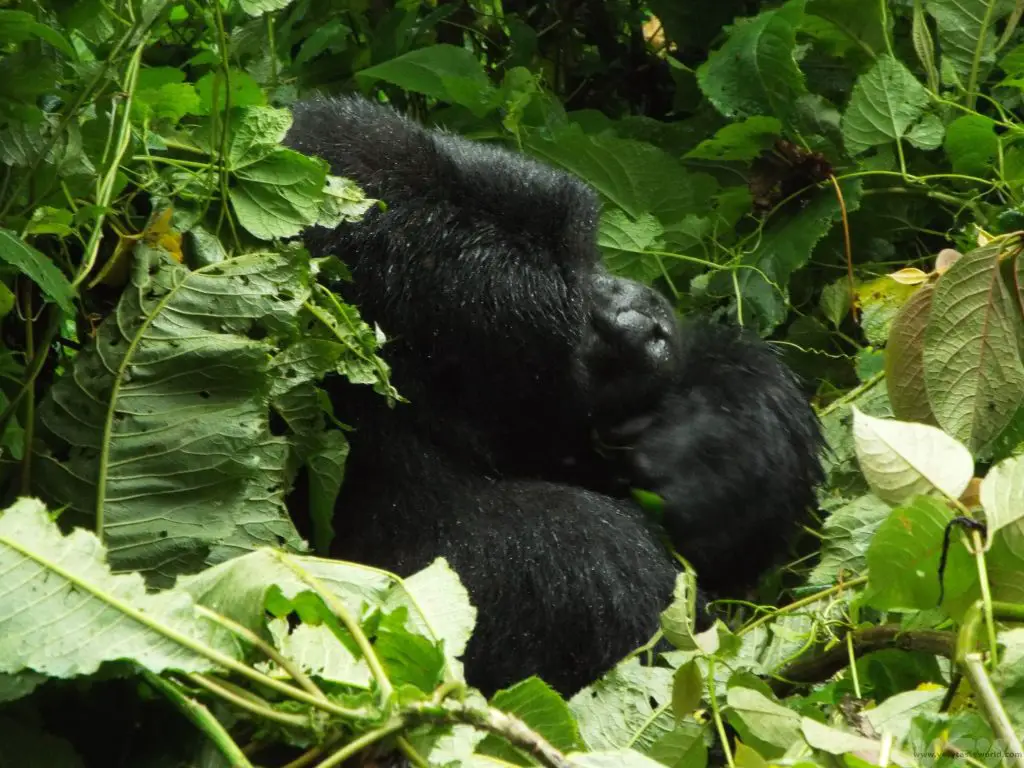
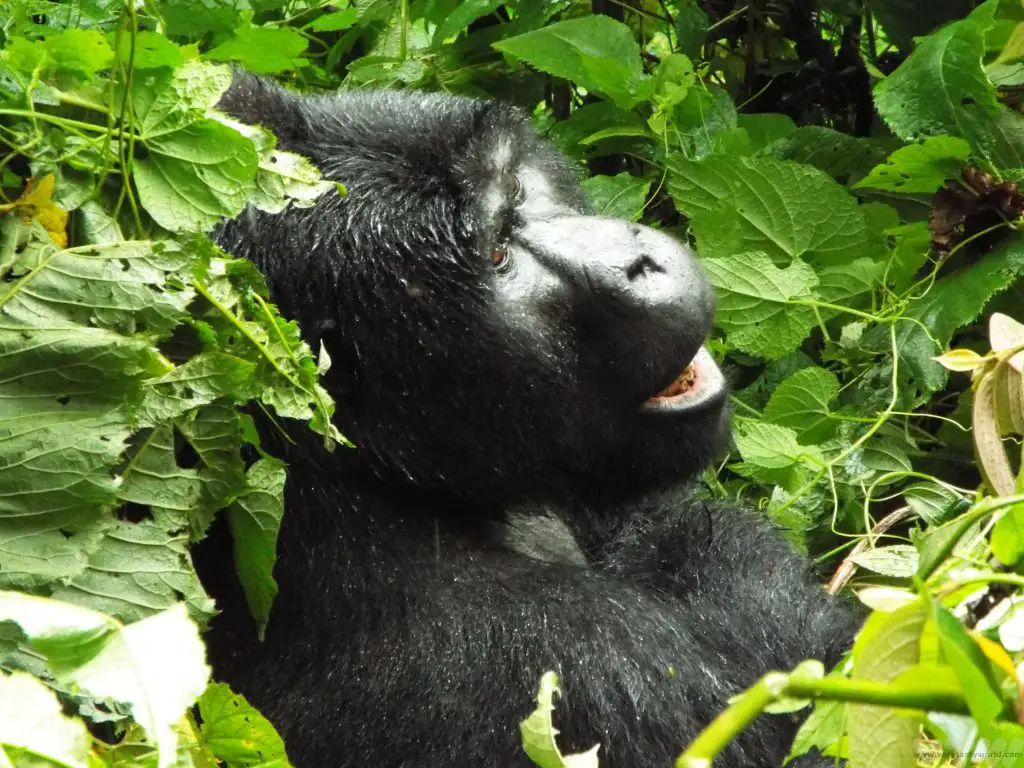
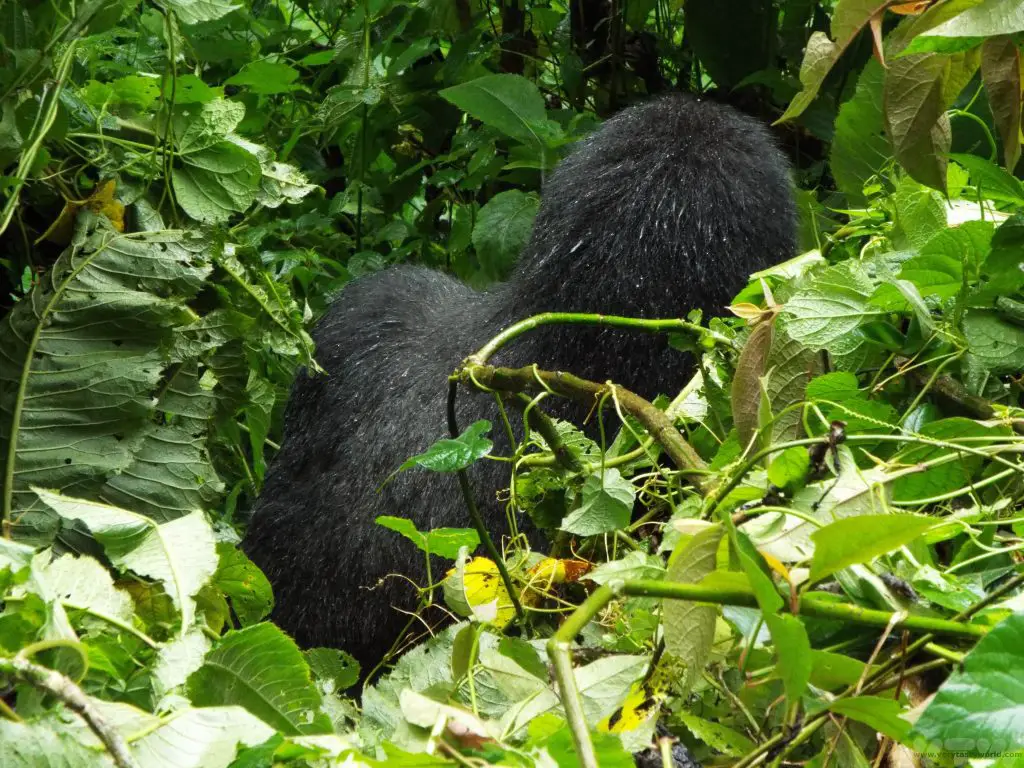
…some younger males…
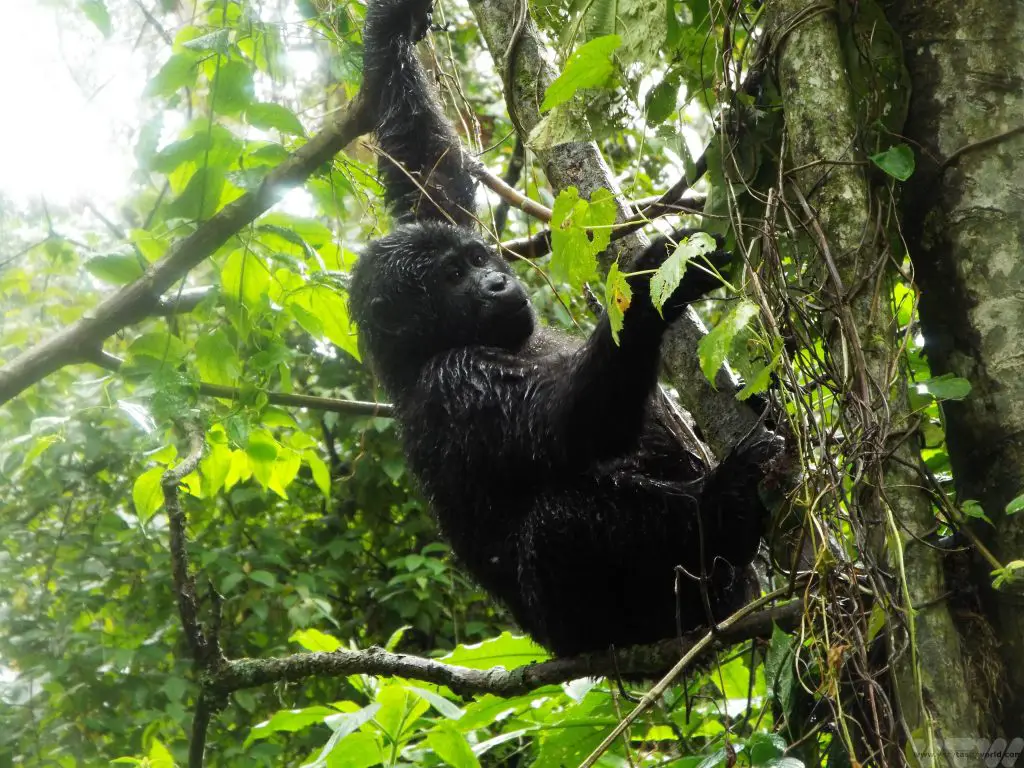
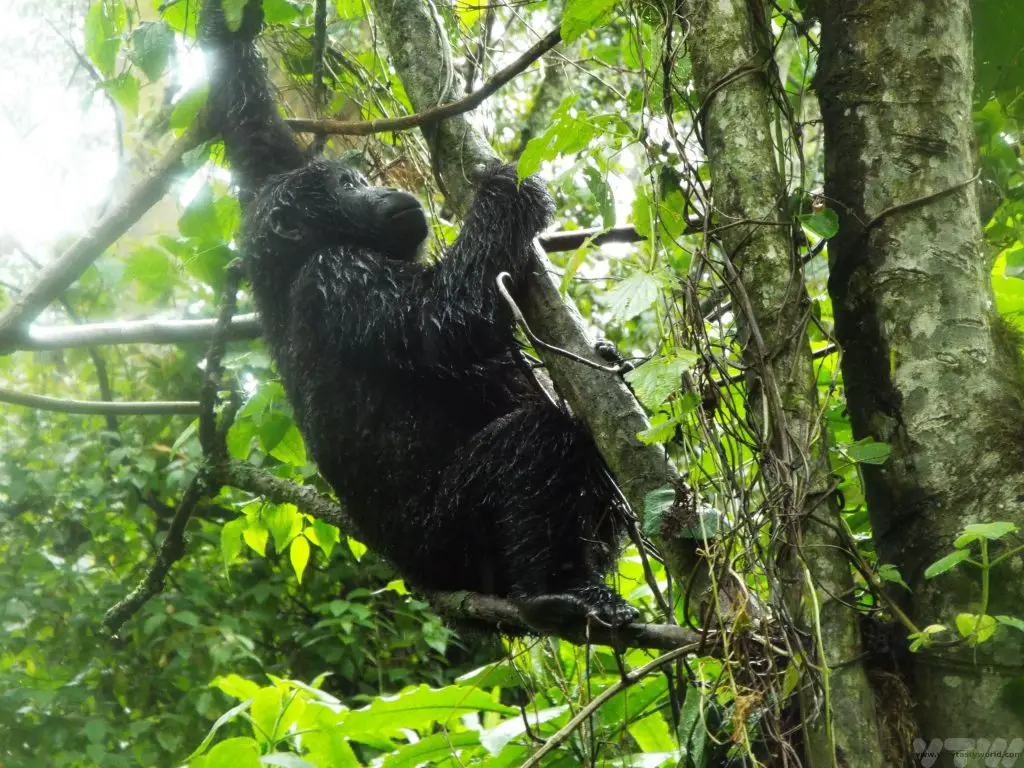
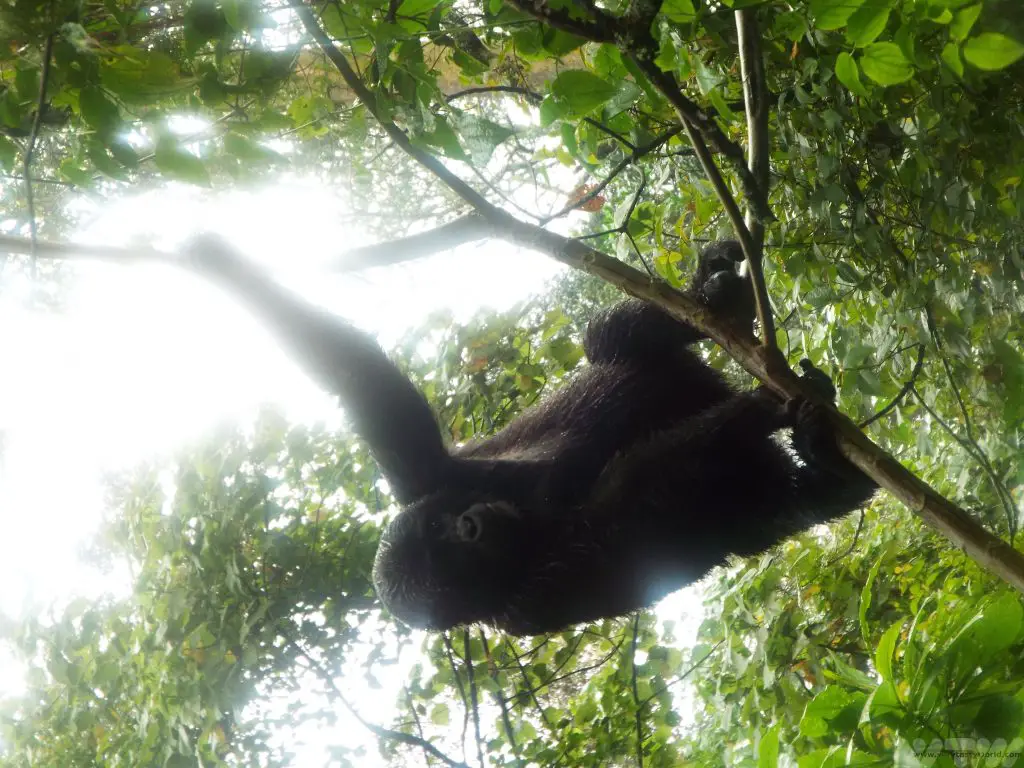
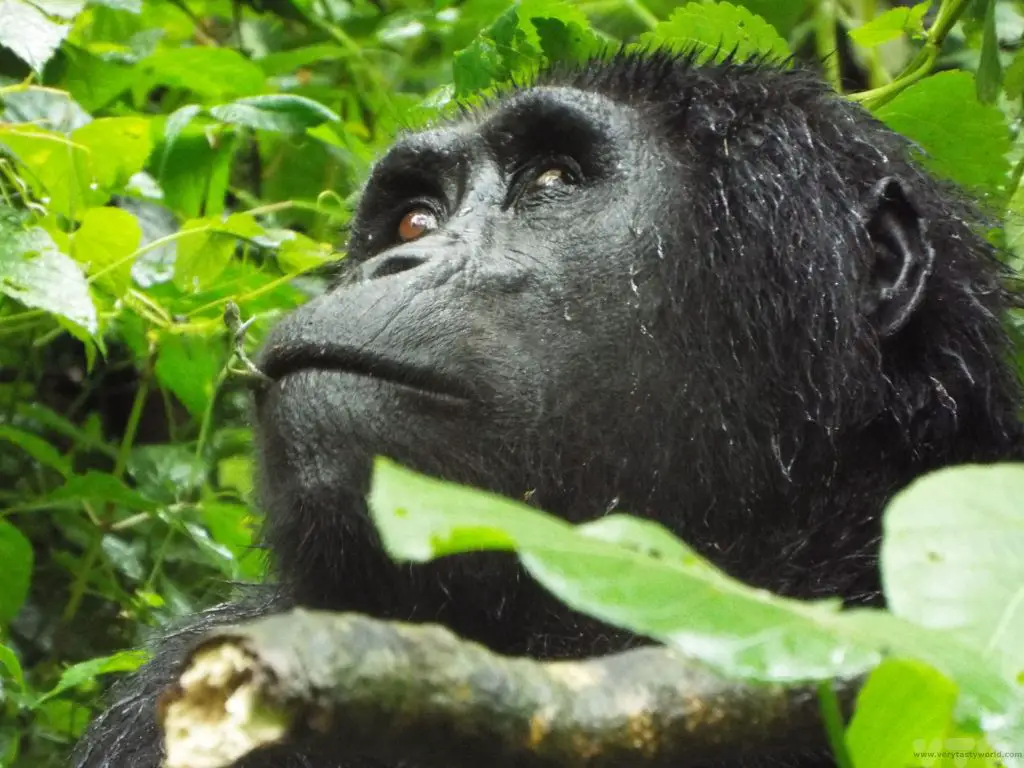
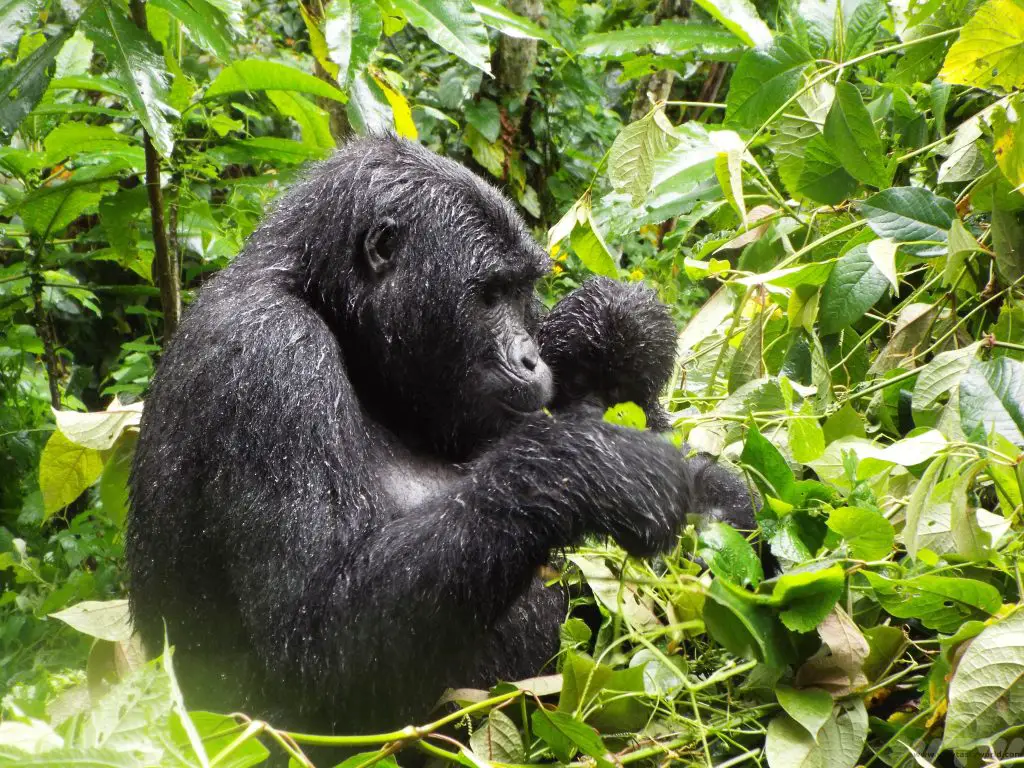
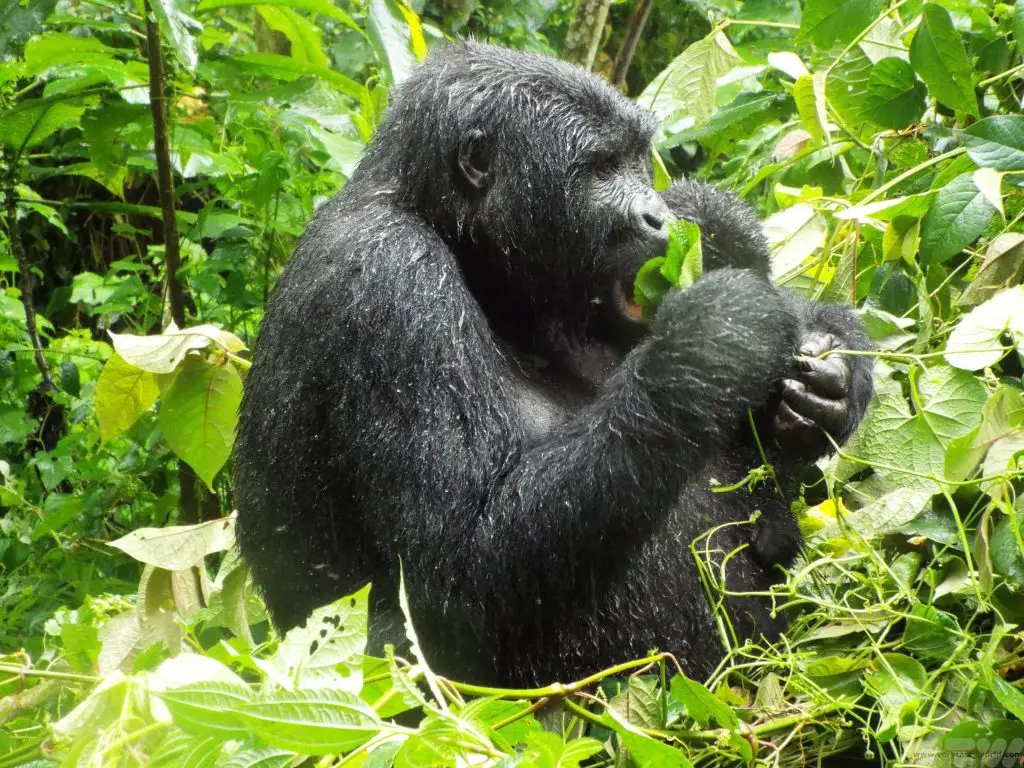
…and a mother and child.
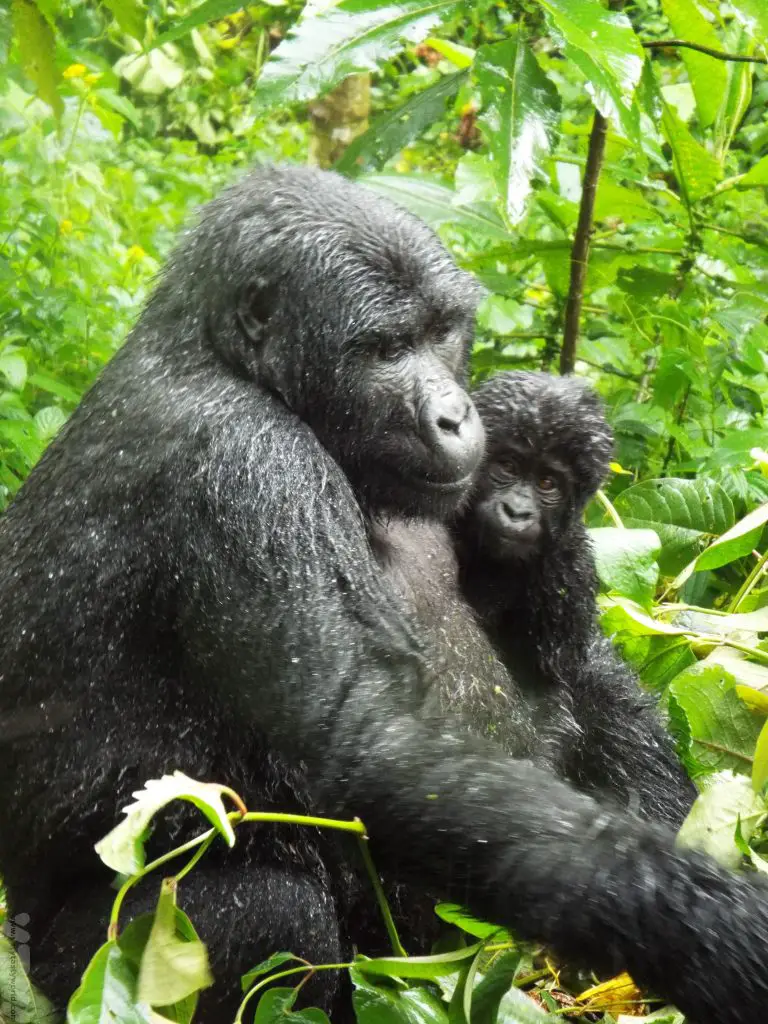
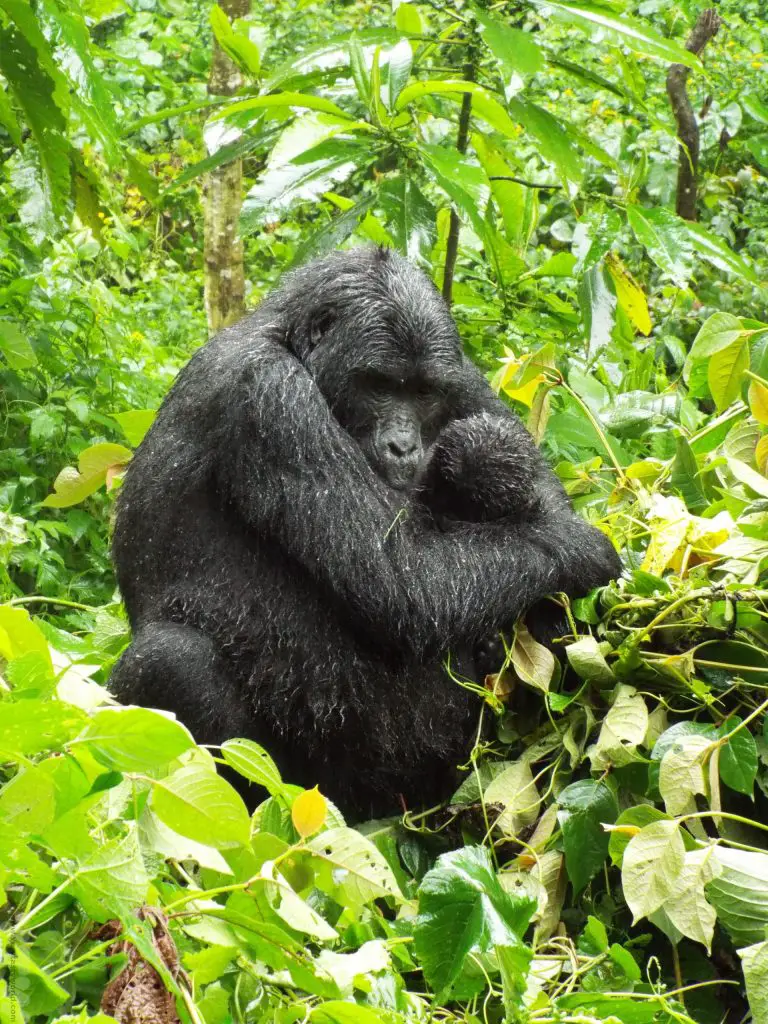
It’s difficult to find the words to describe how magical it was just being in their presence. The rules say that you are allowed one hour with these amazing creatures. It flew by. Then there was the slippery, steep trek back to base. It was a tough climb but we made it without difficulty. Gorilla trekking in Uganda was one of the most amazing things we have done. We were exhausted but elated.
The gorillas were feeling a bit sleepy too.
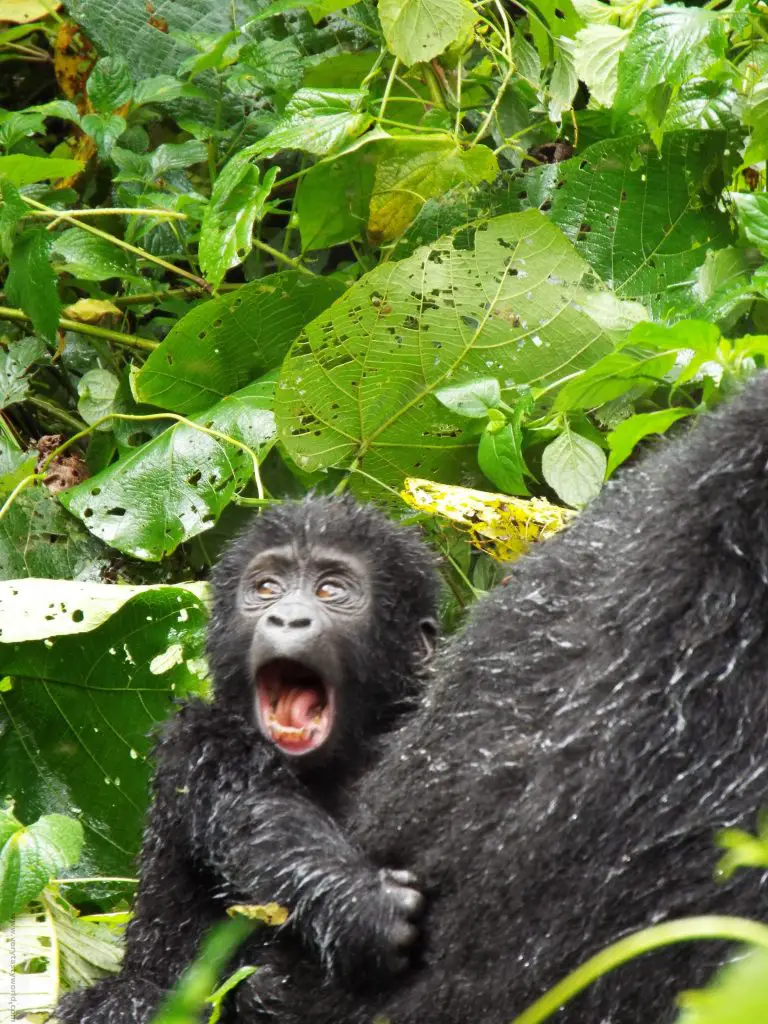
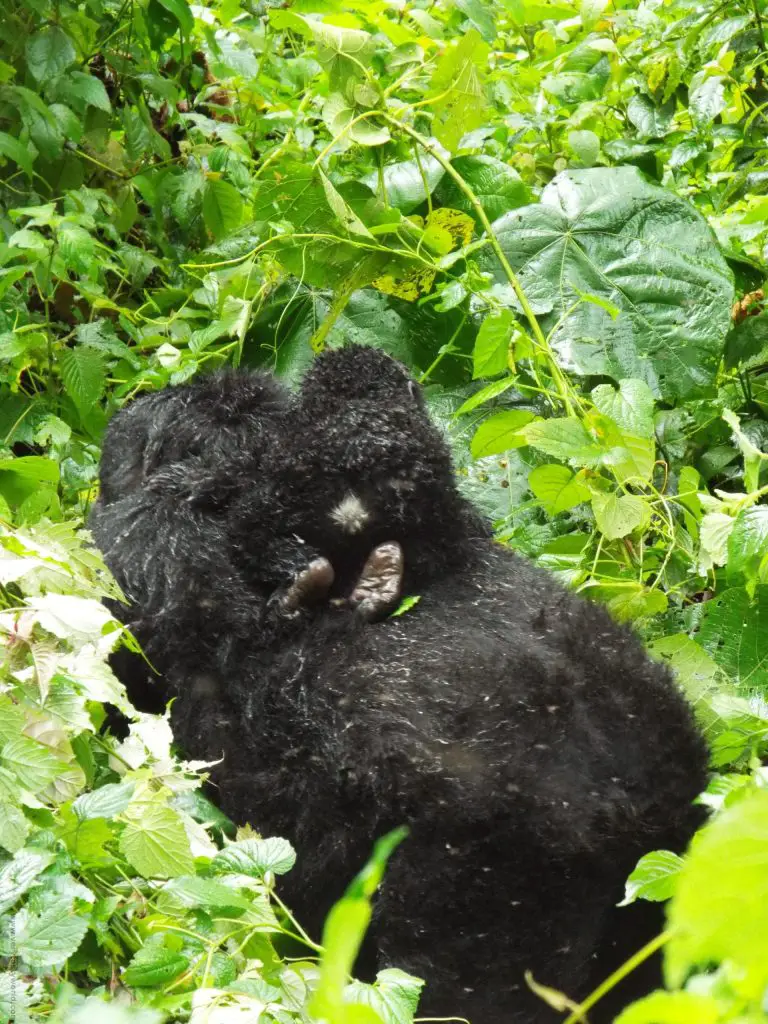
At the Elizabeth National Park we managed to purchase some Gorilla Coffee. Made from arabica beans it is grown, processed and roasted in Uganda, and is delicious. It has a lovely aroma – it smells of sweet, buttery caramel and has a smooth taste with just a touch of distinctive coffee bitterness. Even better, some of the profits from its sales go towards conservation efforts to help the marvellous mountain gorillas.


Related Posts You May Enjoy

